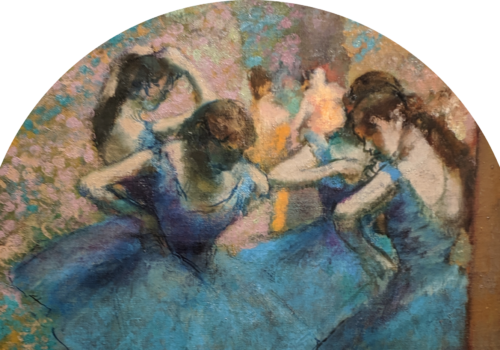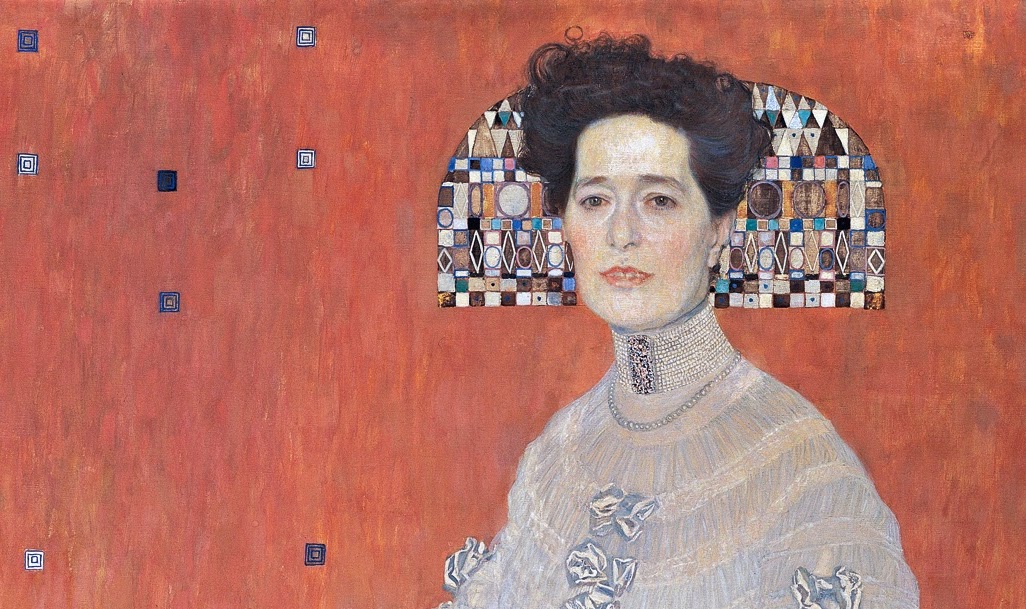
Klimt + Gold = The Belvedere — 4th Greatest Museum in Vienna
The Belvedere is a building complex in Vienna where two palaces were built in the early eighteenth century and set inside a Baroque park landscape for use as a purely ceremonial summer residence for Prince Eugene of Savoy (1663–1736). The Upper Belvedere palace, built between 1717 and 1723, today houses the Belvedere museum — the most visited art museum in Austria — best known for important paintings by Gustav Klimt.

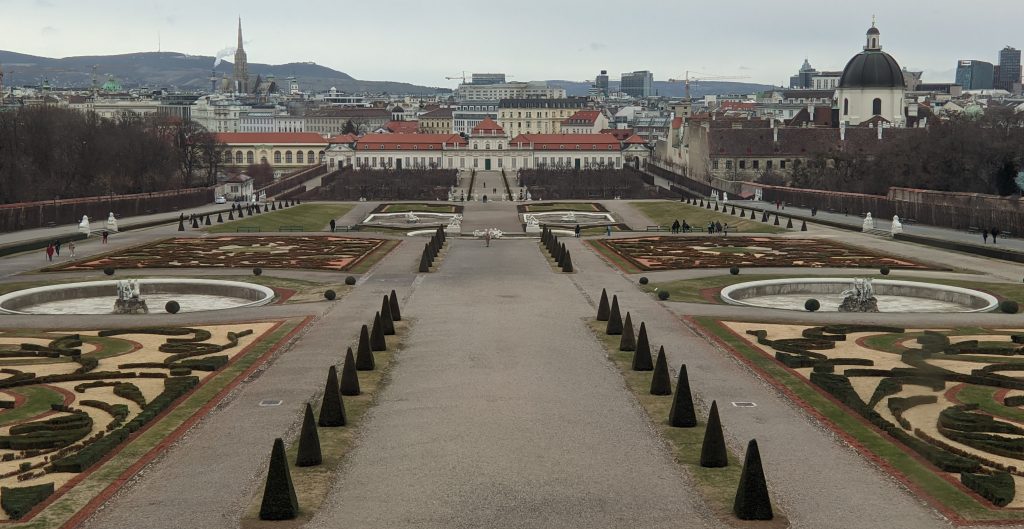
The Belvedere owns the most comprehensive collection of works by Ferdinand Waldmüller (1793 — 1865), as well as fine examples of Austrian modernism by Kokoschka and Schiele, and masterpieces by international artists such as Böcklin, Rodin, Monet, Munch and Van Gogh. Fine paintings by Gustav Klimt (1862 — 1918), nevertheless, provide the main attraction here!


Klimt’s “Lady with a Fan” Sold at Auction for $108.4 Million
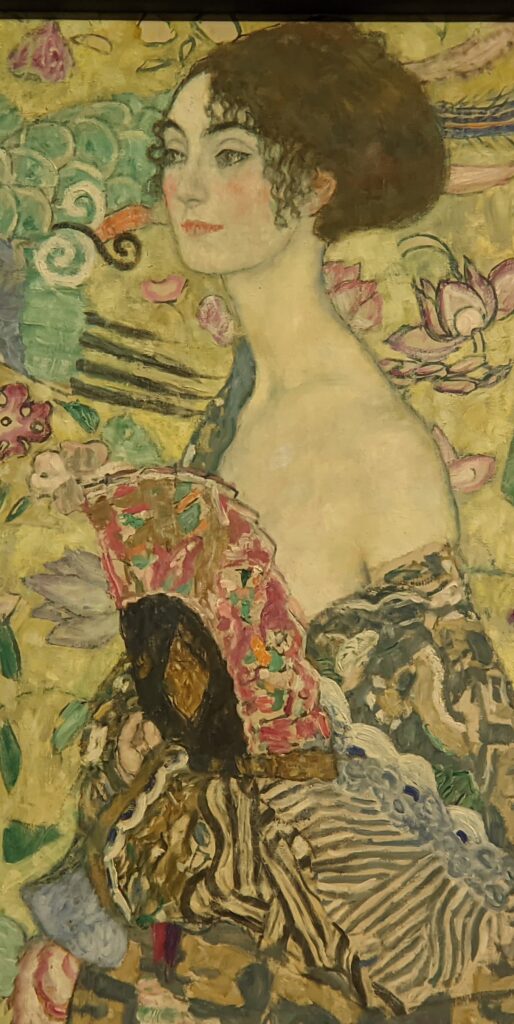
In June 2023, “Lady with a Fan” sold in London for more than $108 million, a price which was the highest ever for a Klimt painting sold at auction, surpassing Klimt’s 1903 landscape “Birch Forest” which sold for $104.6 million in New York in 2022.
In fact, the price for “Lady with a Fan” was the highest ever for any artist at a public sale held in Europe. This radiant portrait was shown at the Belvedere from March 2021 through February 2022 as part of a special exhibition. Additional images from the show entitled “Lady with a Fan — Gustav Klimt & East-Asia” appear later in this article.
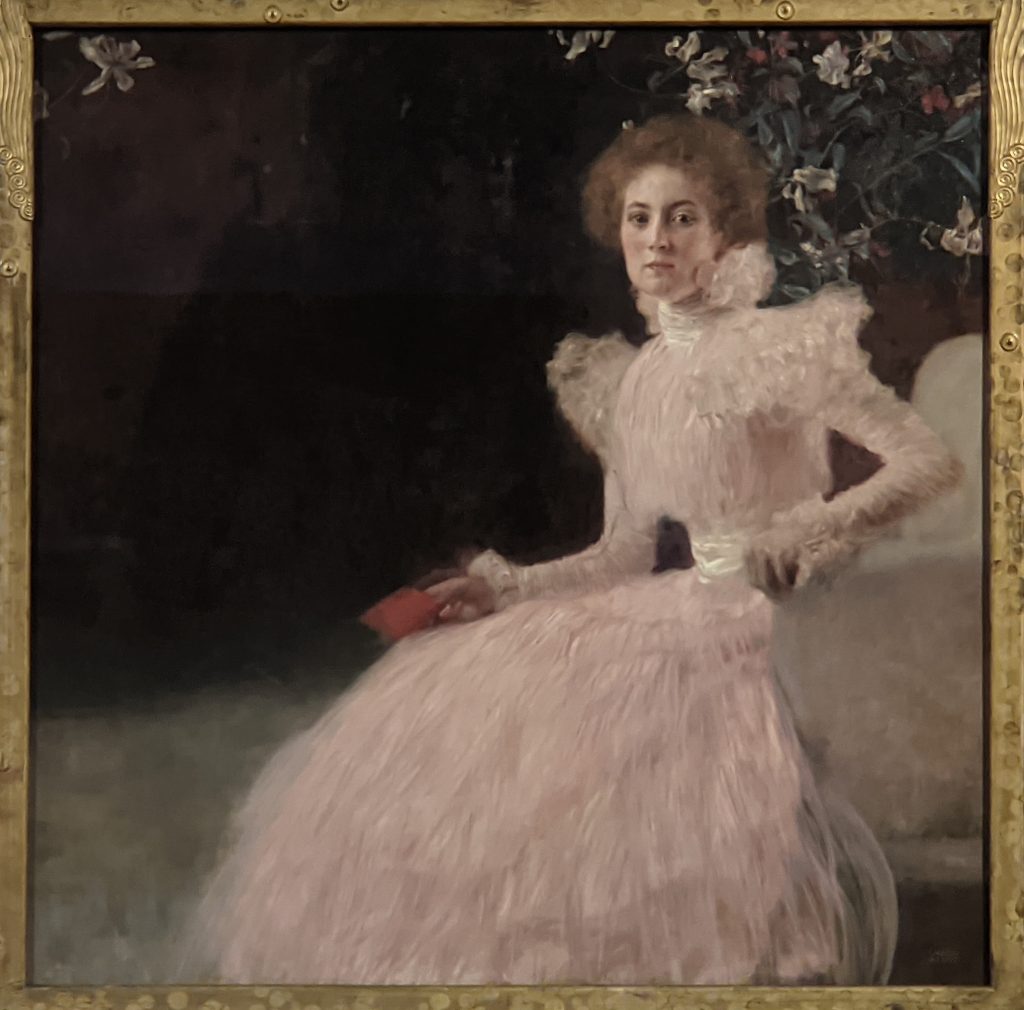
Portrait of Sonja Knips, 1897
Though Klimt did paint male figures in his early creative period, his Portrait of Sonja Knips (above) — commissioned when the artist was 35-years-old — was in many respects his breakthrough painting. It represented a departure from his academic background and work as a muralist, and from the glamorous theater world where Klimt first made a name for himself. In economic terms, Sonja’s portrait should be viewed as Klimt’s first significant entry into the Viennese social stratum, which nurtured the rise of the art movement to become known as the Vienna Secession (and, later, the Wiener Werkstätte).
Sonja’s portrait bears several clear influences of James McNeill Whistler, the American painter whose reproductions were likely known to Klimt. The square format of the Knips portrait, featuring the triangular semi-profile pose of the sitter, presaged the compositional devices (such as the pictorial tension between the floral arrangement in the striking background behind Sonja and her suffocating, high collar) that Klimt would successfully exploit in the long series of portraits depicting society ladies that would follow — leading up to the stylized work of the Gold Period, the centerpiece of Klimt’s international renown.
After Sonja, Klimt would almost exclusively paint women.
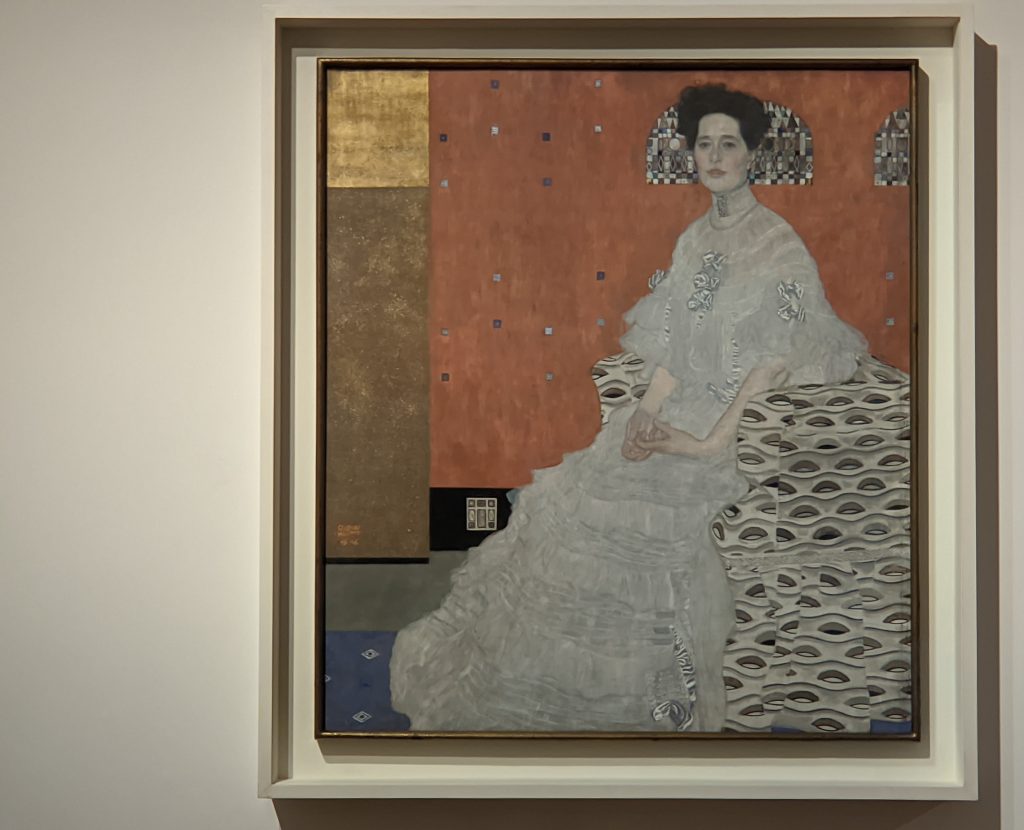
Gustav Klimt and the Vienna Secession
In 1897, a group of Austrian visual artists, designers, sculptors and architects, including the painters Koloman Moser and Gustav Klimt, resigned from the Association of Austrian Artists to protest its preference for traditional styles of art. They formed the Vienna Secession, an art movement related rather closely to Art Nouveau, and published an influential magazine of graphic art called “Ver Sacrum” (from the Latin for “Sacred Spring”). The group’s most influential architectural work is the Secession Building in Vienna (pictured below), designed by Joseph Maria Olbrich as a setting for the artists’ exhibitions.

The Golden Period of Gustav Klimt: 1898 — 1909
Your chief reason for visiting the Belvedere museum may perhaps be to see some of the highlights of the Secessionist Movement, most notably “The Kiss” (below) when Klimt began incorporating gold leaf into his iconic paintings.

At the Belvedere museum you can also see the equally impressive (though less glittery) “Portrait of Fritza Riedler” (below, right) painted by Klimt in 1906 — and you should notice that the decorative semicircular shape on the wall behind Fritza’s head signifies (in our opinion) Gustav Klimt’s homage to Diego Velázquez and the Spanish Golden Age.
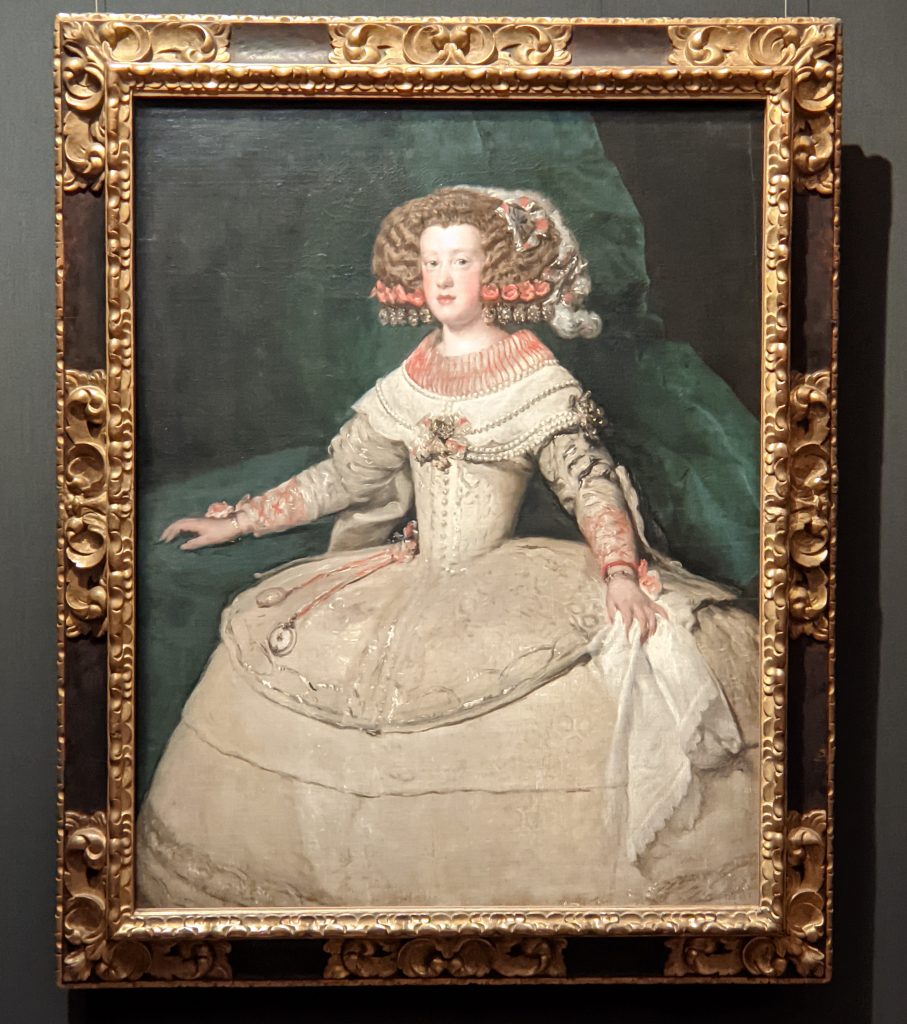
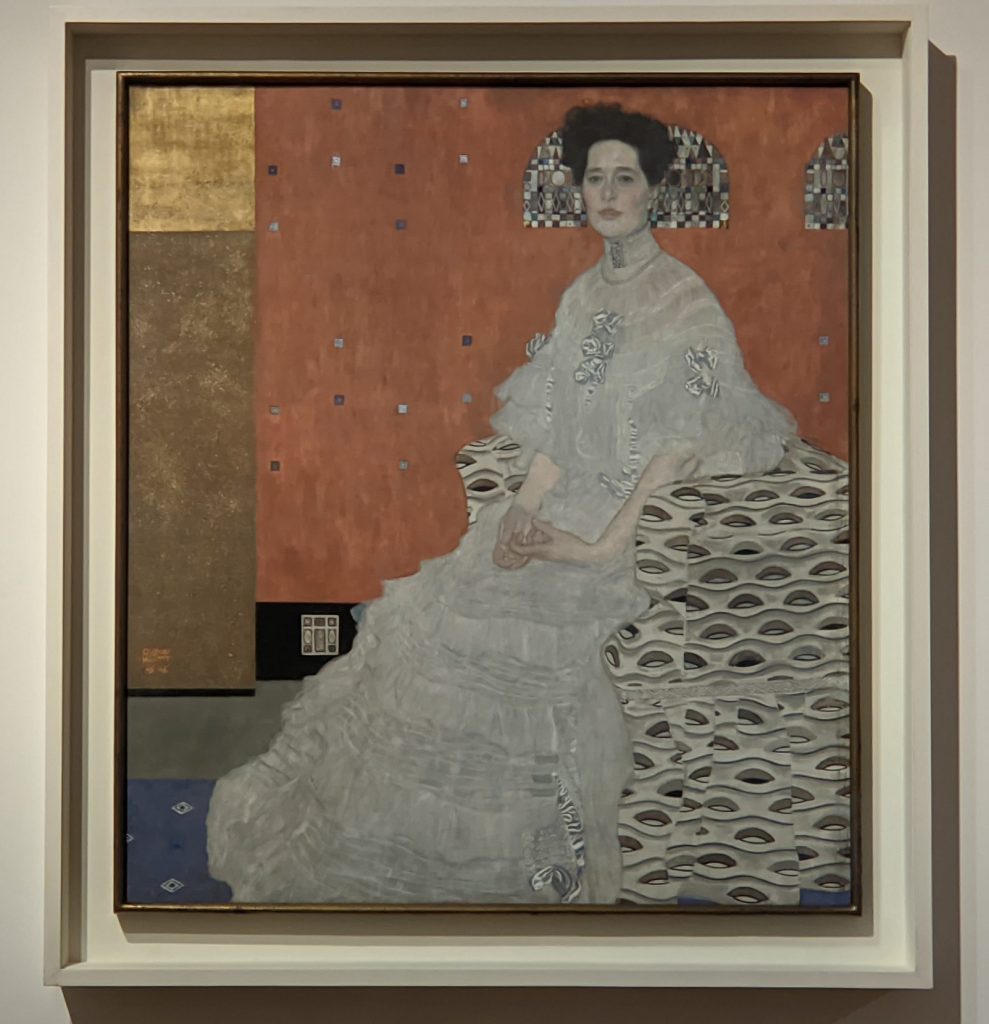
Discover the Details of Klimt & His Relationship with Other Artists
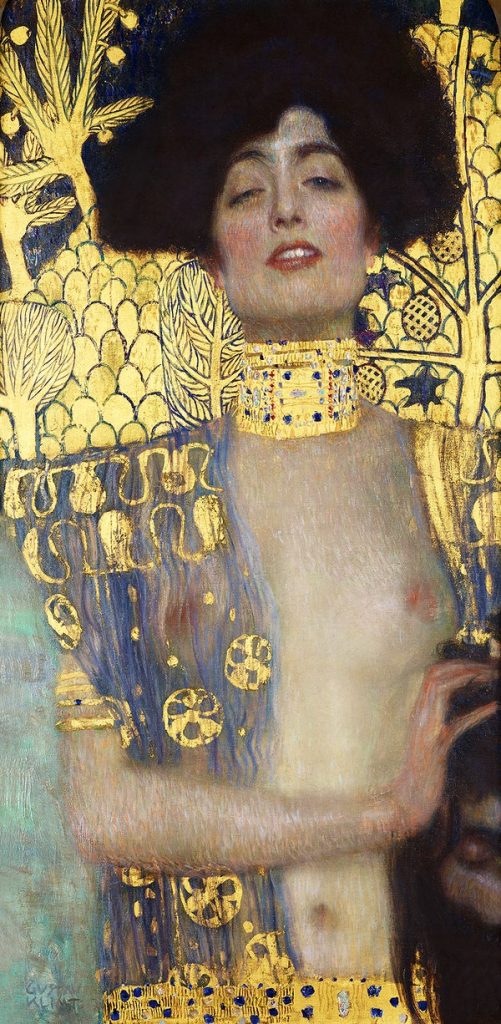
The Belvedere also owns Klimt’s first painting of Judith, the heroine from the Bible who seduced (and decapitated) the Assyrian General Holofernes to save her home city from destruction. Traditional renderings (by Caravaggio and many other artists) of the biblical theme of Judith depict a virtuous, courageous woman holding a sword bloodied from the violent act. In “Judith with the Head of Holofernes” (above) Klimt ignored art history and focused almost exclusively on Judith as a femme fatale, to the point where the severed head is incidental, literally cut off by Klimt at the right margin. One will notice that the sword and blood were excluded by Klimt, who instead placed emphasis on the torso and facial expression, implying that Judith used other means such as her voluptuousness and sensual magnetism to bewitch and destroy the General. As a model for “Judith” Klimt used his friend, the Viennese socialite Adele Bloch-Bauer, and we believe he drew inspiration from an earlier painting by Franz von Stuck (below left).
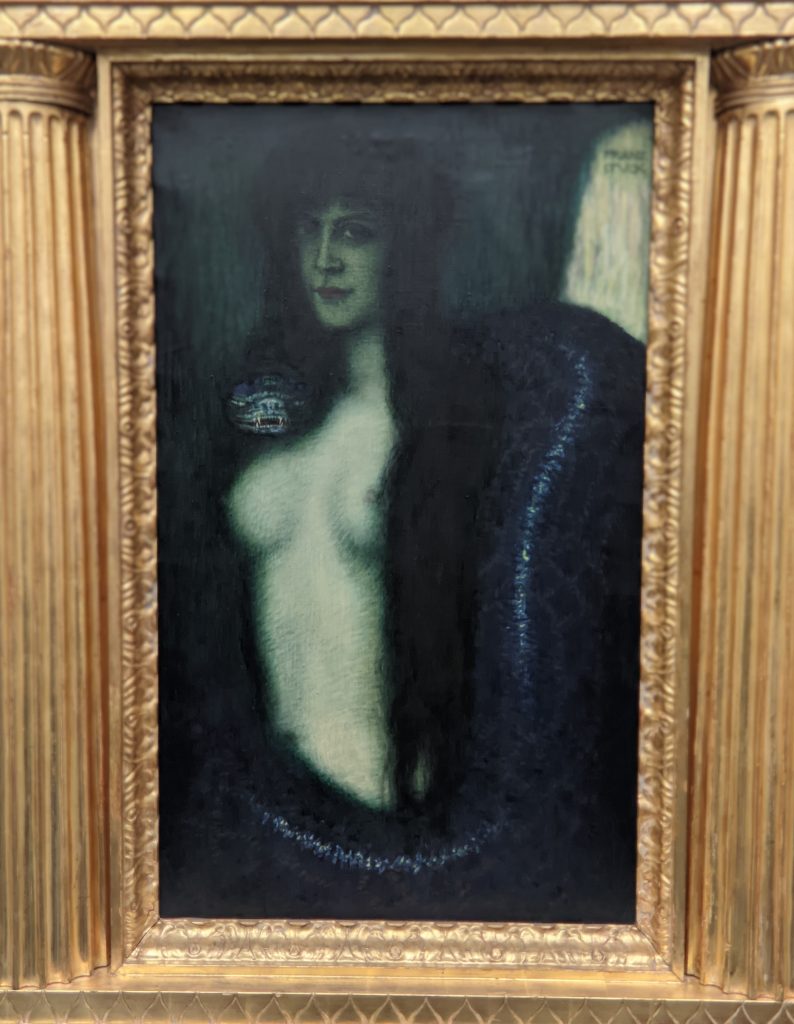

Klimt’s “Portrait of Adele Bloch-Bauer I” {also called “The Woman (or Lady) in Gold”} was exhibited at the Belvedere from the end of World War II until 2006, when it was returned to Adele’s niece, then sold for the then-record price of $135 million, and finally placed on permanent display in New York’s Neue Galerie.
Even though some of Klimt’s best-known paintings are not always on view at the Belvedere, you should still come to the Upper Belvedere palace for up-close enjoyment of the many beautiful details to be found in Klimt’s paintings.
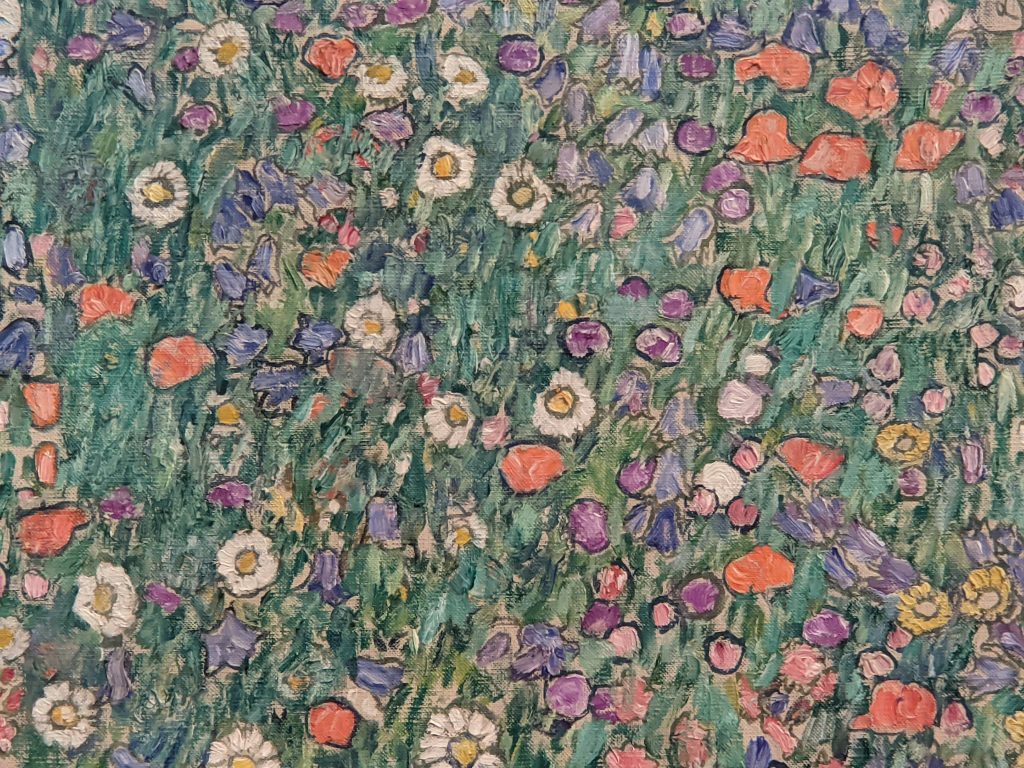
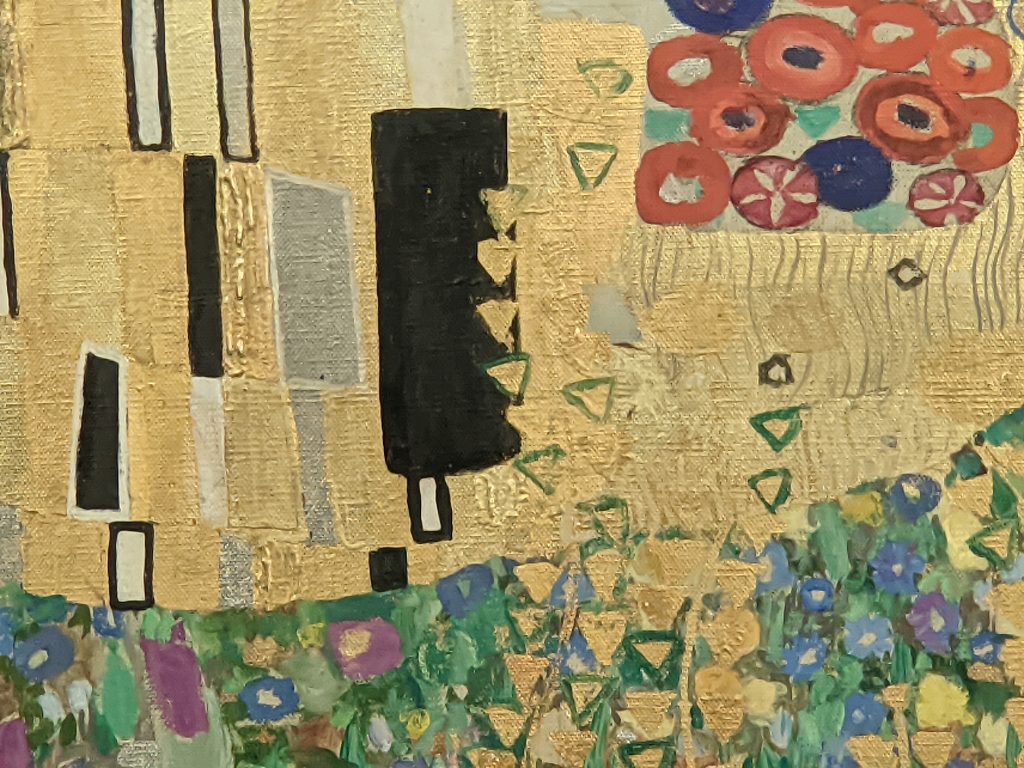

Klimt’s father was an engraver who worked in silver and gold. Klimt followed in his father’s footsteps and enrolled in Vienna’s School of Applied Arts where he studied varied subjects from fresco painting to mosaics.
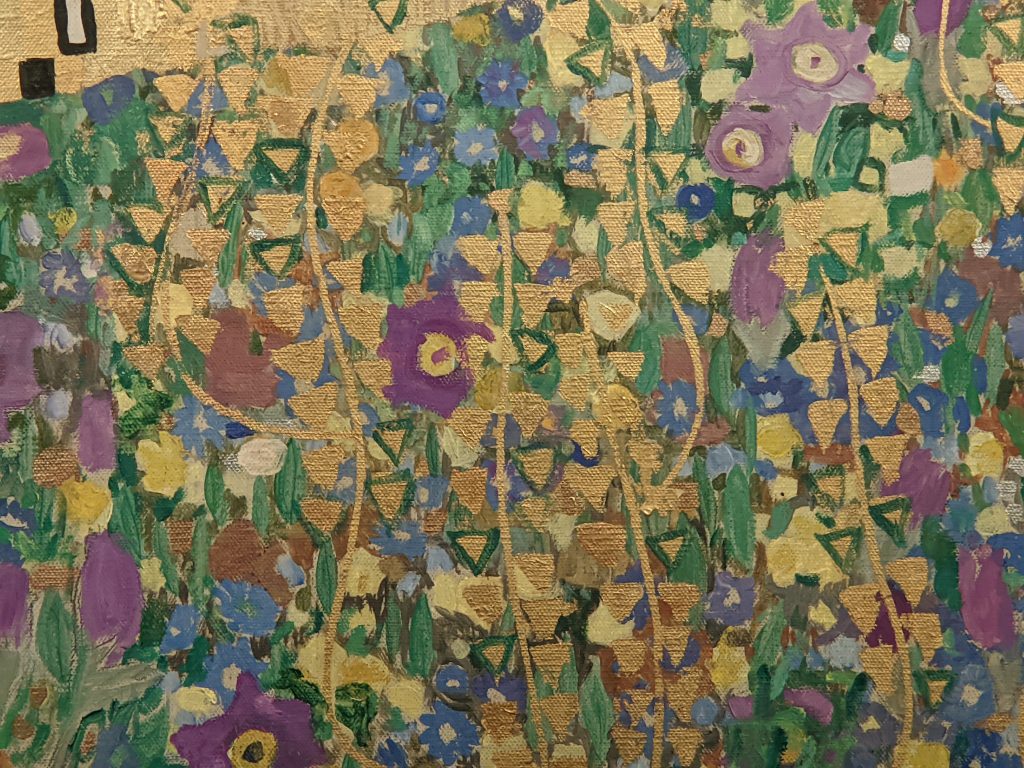
While Klimt’s murals, decorative commissions and ceiling paintings in public buildings were praised as lavish and his nudes enticing, some critics in his day labeled them scandalous and “pornographic” (by today’s standards, some might say “misogynistic”). After one public outcry in the 1890s, the University of Vienna refused to display three paintings they commissioned from Klimt, prompting the artist to declare, “Enough of censorship.” Klimt would never again accept a public commission, stating, “I want to get away…. I refuse every form of support from the state, I’ll do without all of it.” Soon after, Klimt traveled to Ravenna to admire the gilded Byzantine mosaics.
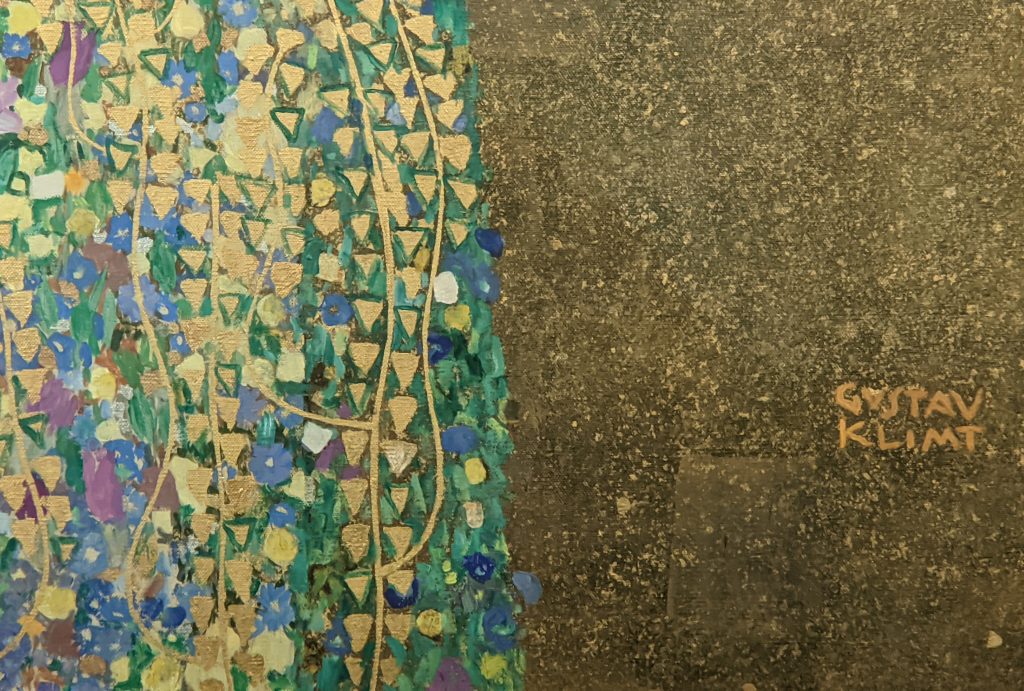

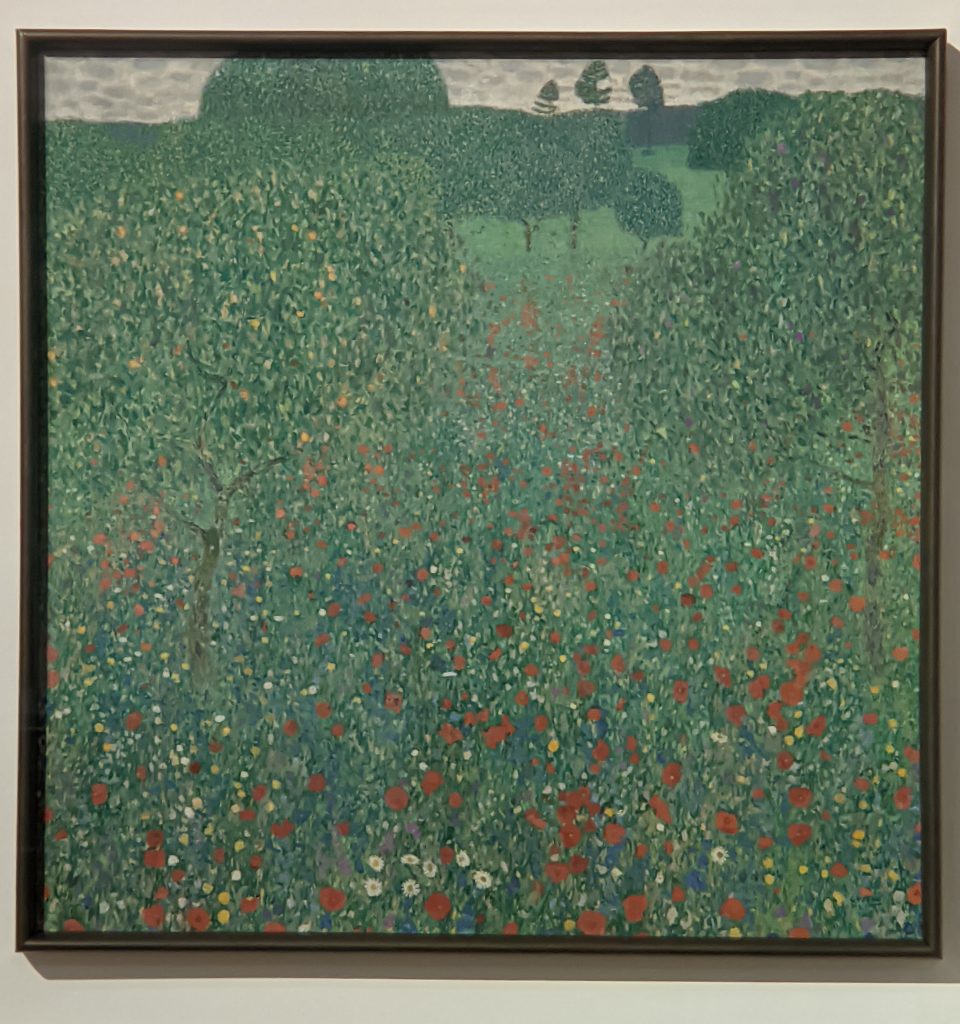
Klimt Combined Realism, Art Nouveau & Modernism
Following his Golden Period, landscape painting offered Klimt different opportunities. He could take slightly more control of his body of work by avoiding commissions; escape to the countryside and occasionally travel outside Austria; and enjoy time away from Vienna with Emilie Louise Flöge, his life companion (and muse), and her family.
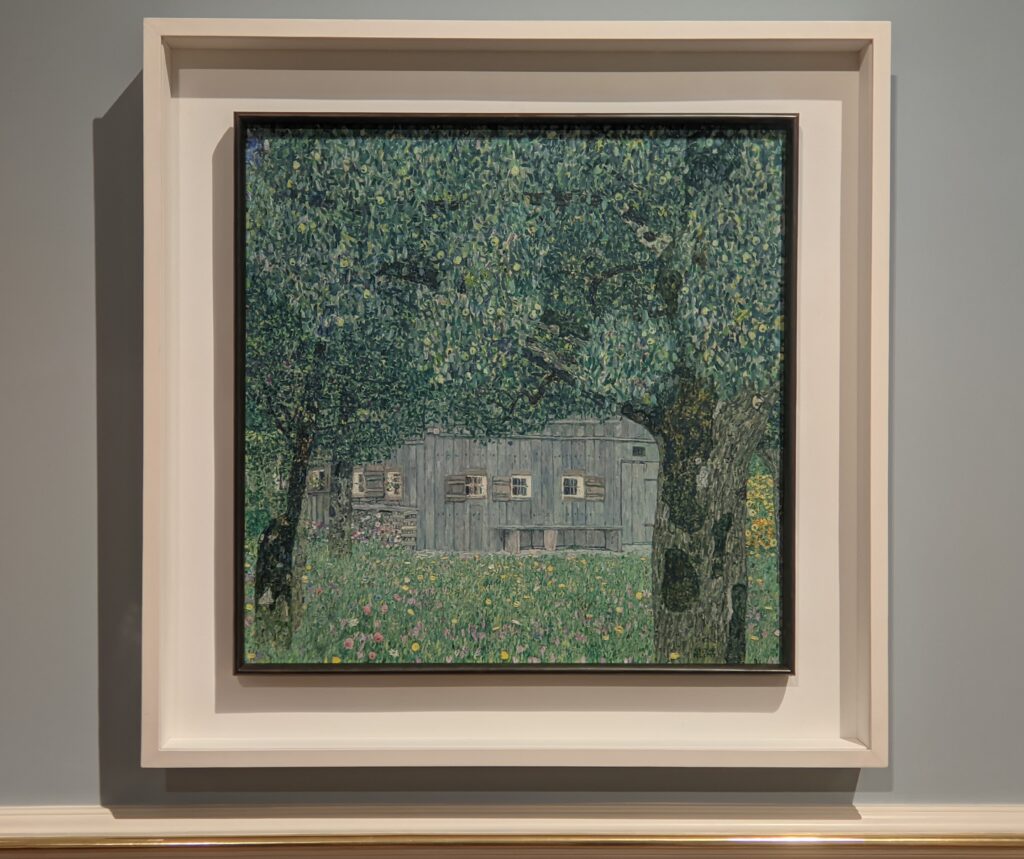
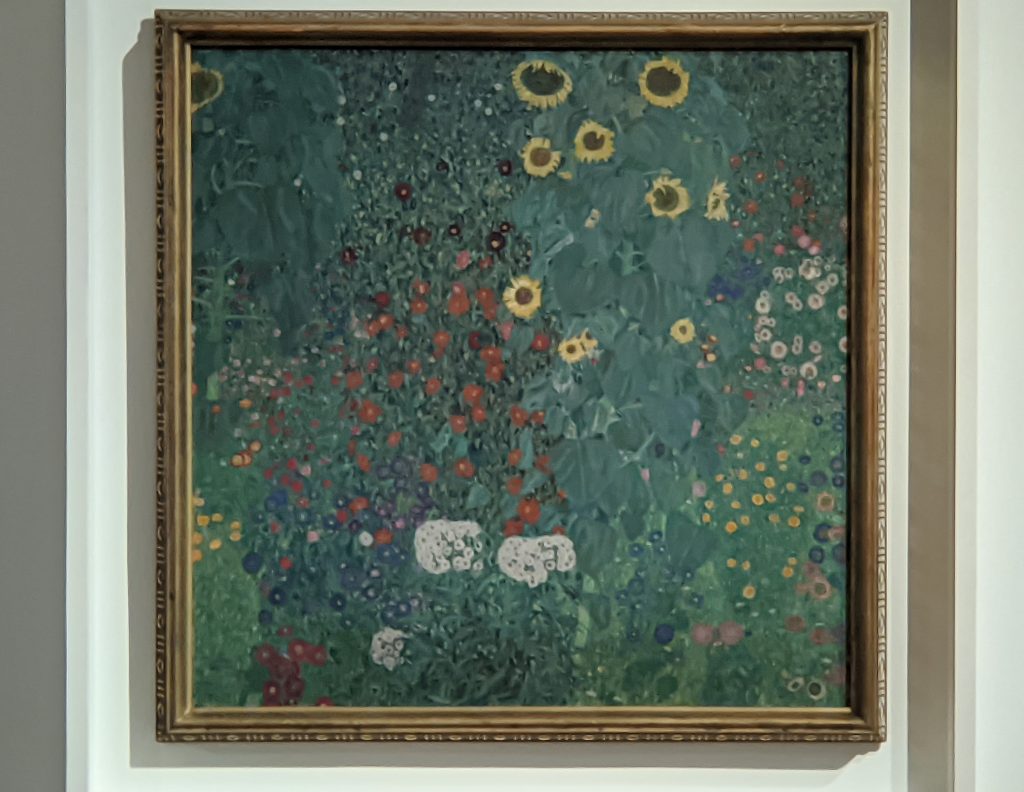
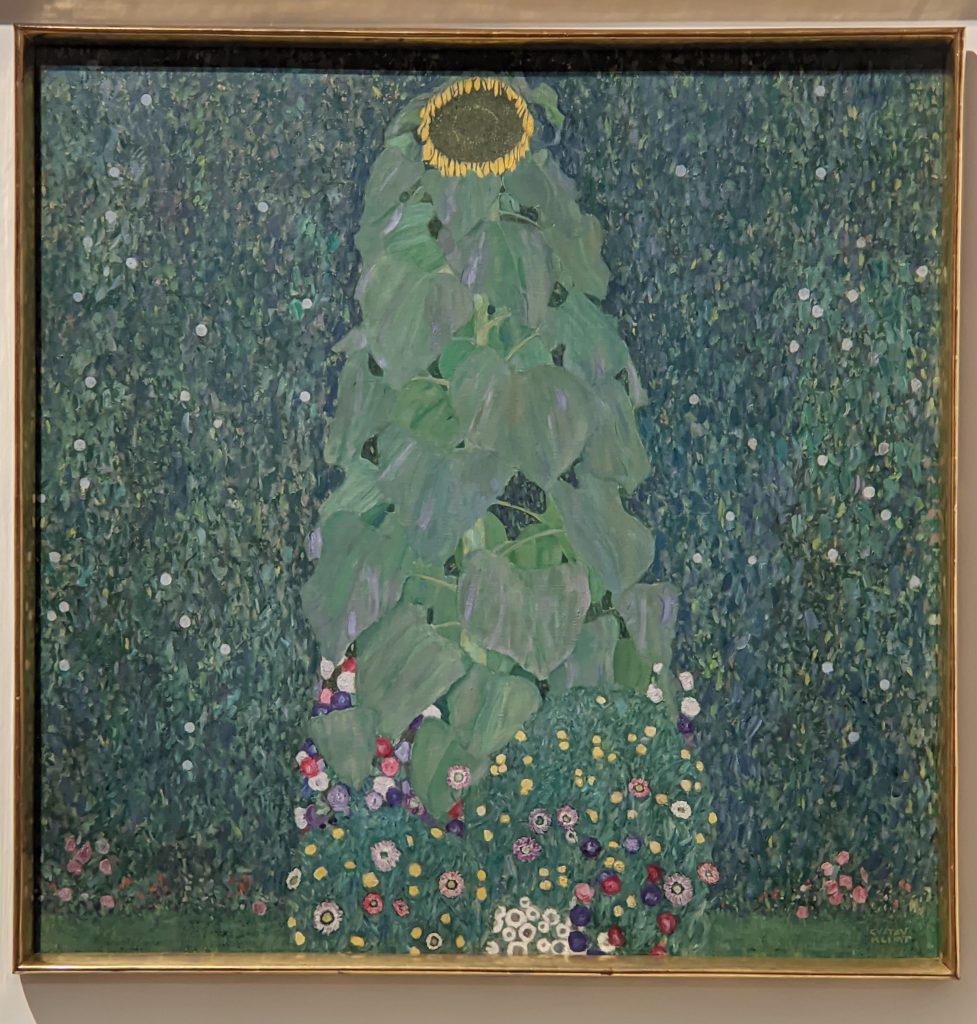

Klimt met Emilie Flöge around 1891, when his brother married into the Flöge family. Thereafter, Klimt used Emilie as a model for many of his works and was a frequent guest of her parents, spending summers together at Lake Attersee.
Creating landscapes constituted the only genre (aside from painting figures) that seriously interested Klimt. His interest in escaping to the mountains and lakes, and the modern paintings he created there (featuring atmospheric, flattened compositions devoid of people in an unusual square format, cropped like photographs), underscore Klimt’s connection to the natural world and his concern for humankind’s treatment of nature during the Second Industrial Revolution.

Landscape painting was also a passion Klimt shared with Egon Schiele (1890 — 1918). In 1907, the 17-year-old Schiele introduced himself to the famed Klimt.
Klimt bought drawings from Schiele, and connected the young artist with patrons. They took a keen interest in each other’s output, developed a friendship, and would spend time together in their studios often studying the other’s unfinished landscapes.
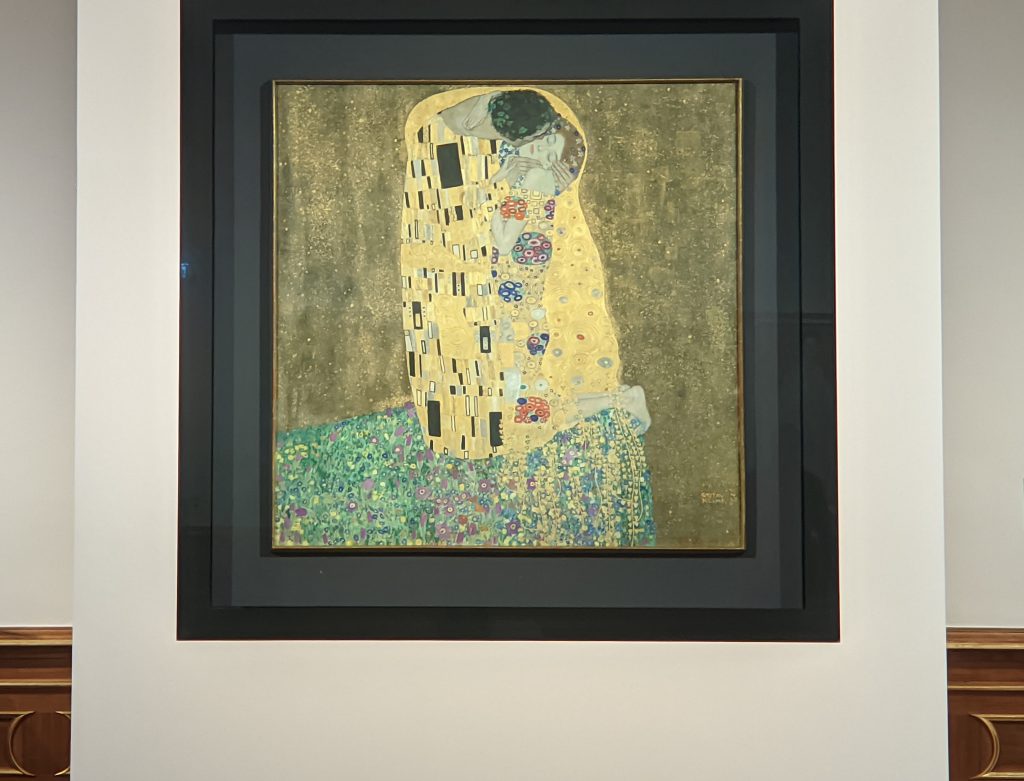
“The Kiss” & the Permanent Collection
It is believed that Klimt’s 1907-08 oil on canvas entitled “The Kiss” is a depiction of Klimt himself and Emilie Flöge as lovers. It is possible they were solely life-long friends, not sexual partners.
Klimt was known to be very active sexually, although he never married. He spoke and wrote very little about his private life, kept his affairs discreet, and avoided public scandal. Klimt is said to have fathered 14 children.
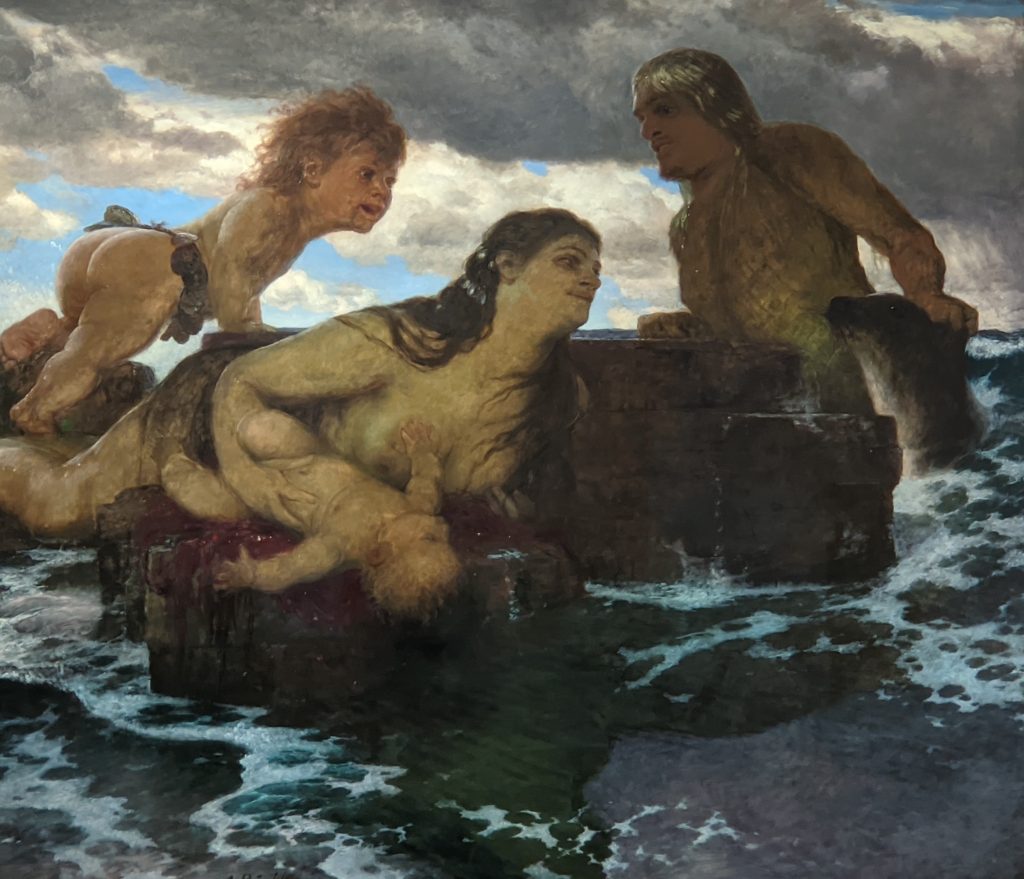
Symbolist Painters
Today, Gustav Klimt is best known as an Austrian Symbolist and the most prominent painter within the Vienna Secession movement. The symbols used by such artists contain references that are private and intensely personal (representing a departure from realism and traditional iconography). Painters associated with Symbolism employ mythological or dream imagery to convey hidden meanings. They believe art should represent absolute truths which can only be described “indirectly” — a symbolist painting may therefore look realistic, however, in actuality the painting represents a non-visual idea.
European artists in the Belvedere’s collection who embraced Symbolism before Klimt include Arnold Böcklin and Fernand Khnopff. “Still Water” (below) by Khnopff was painted in 1894.
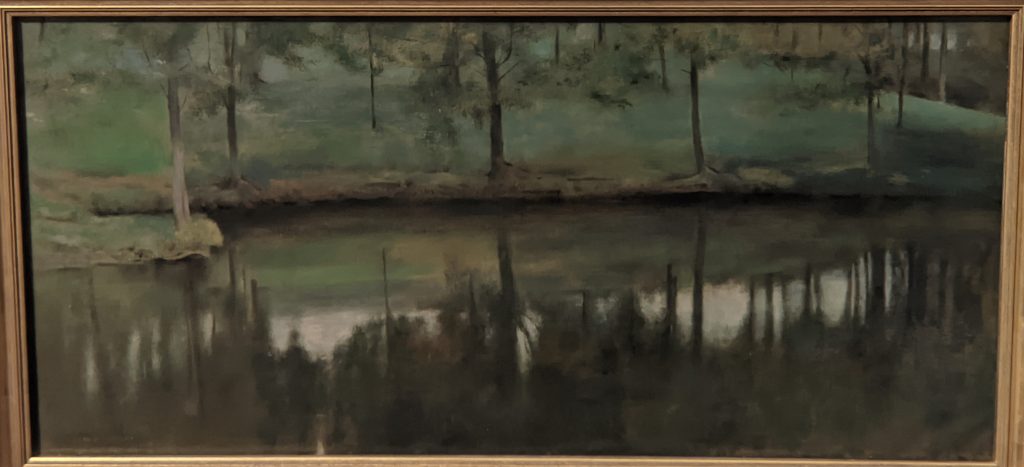

The Upper Belvedere’s art collection includes paintings by Segantini, Hodler, Koller-Pinell & Munch (above, left to right) & Rodin’s 1909 bust of Gustav Mahler
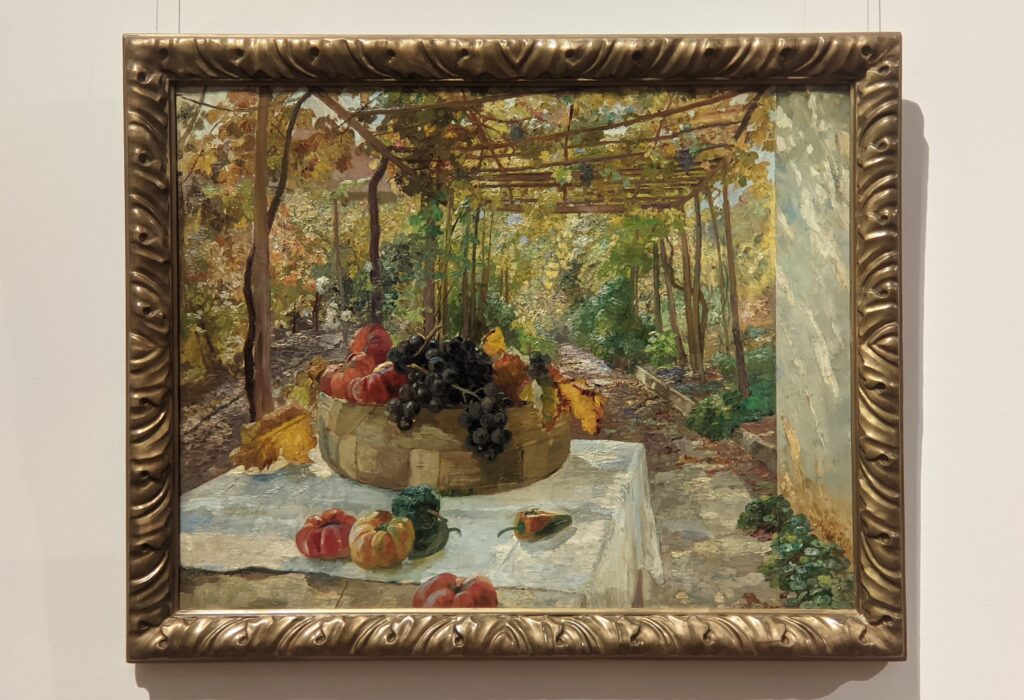
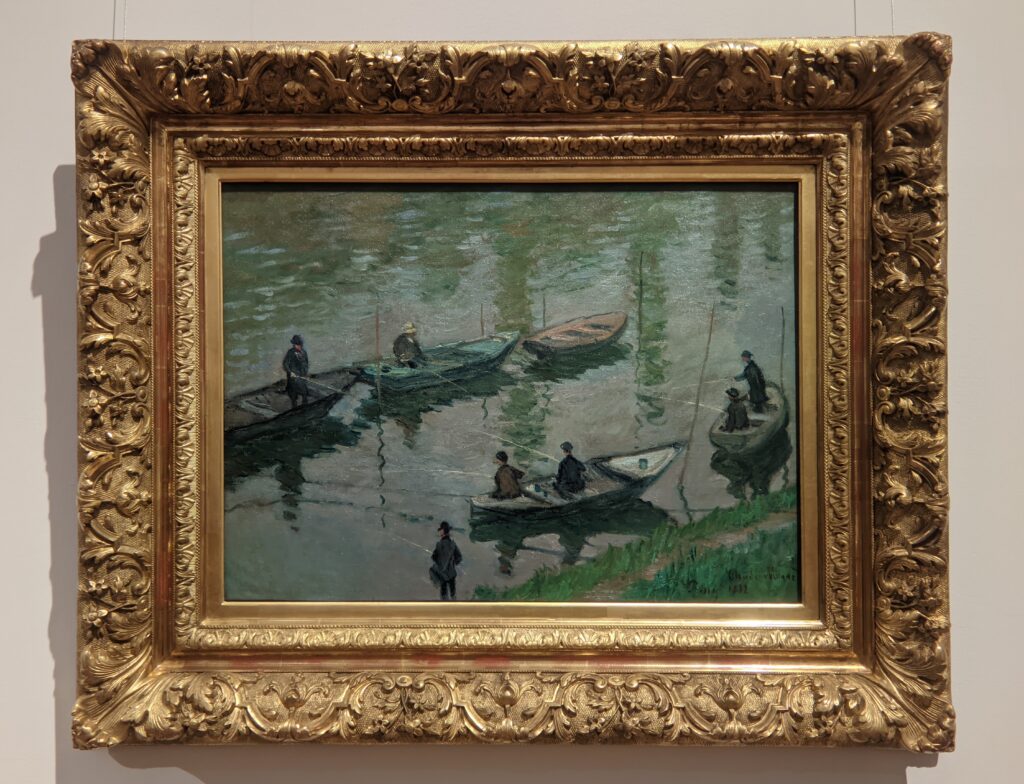
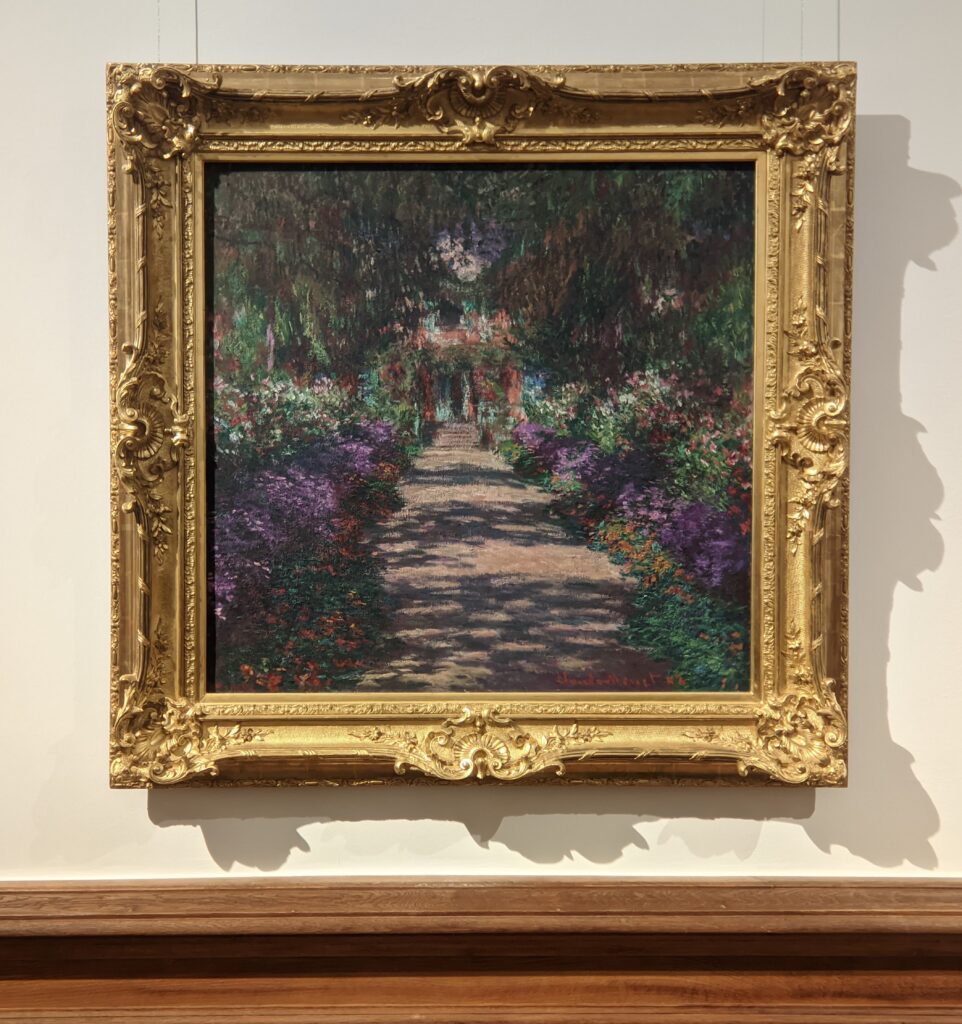
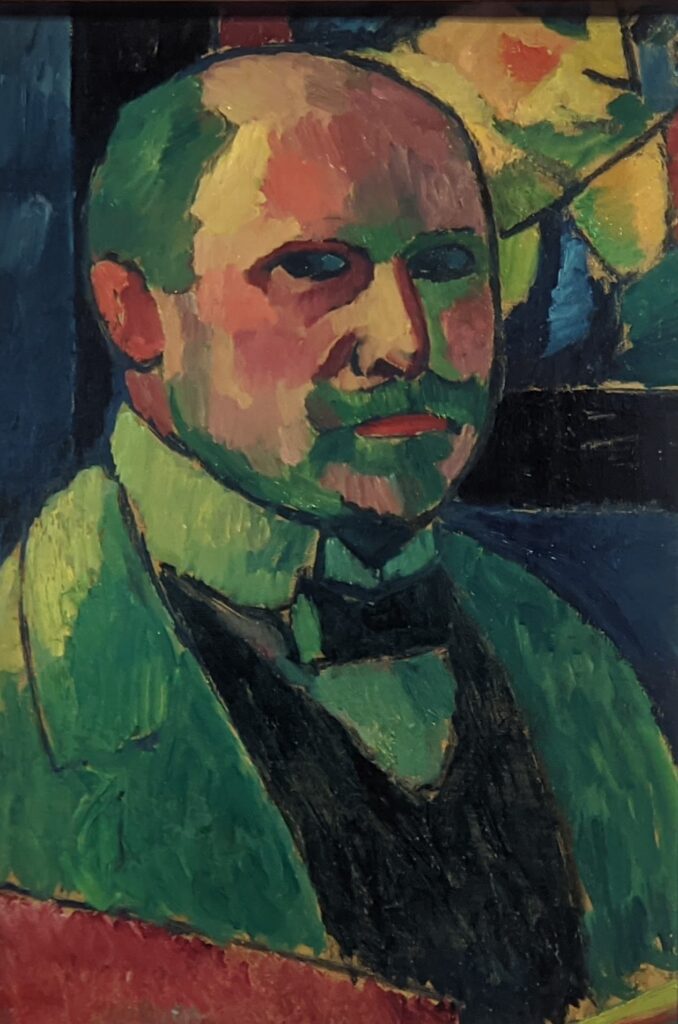




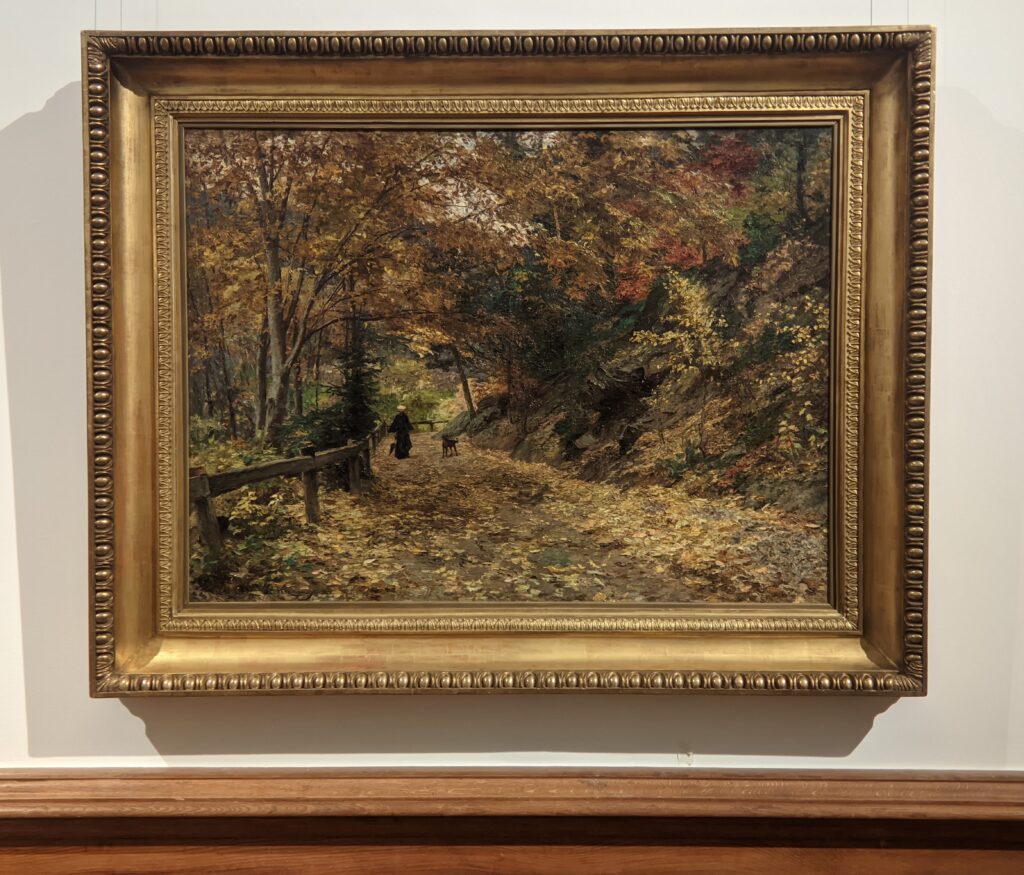

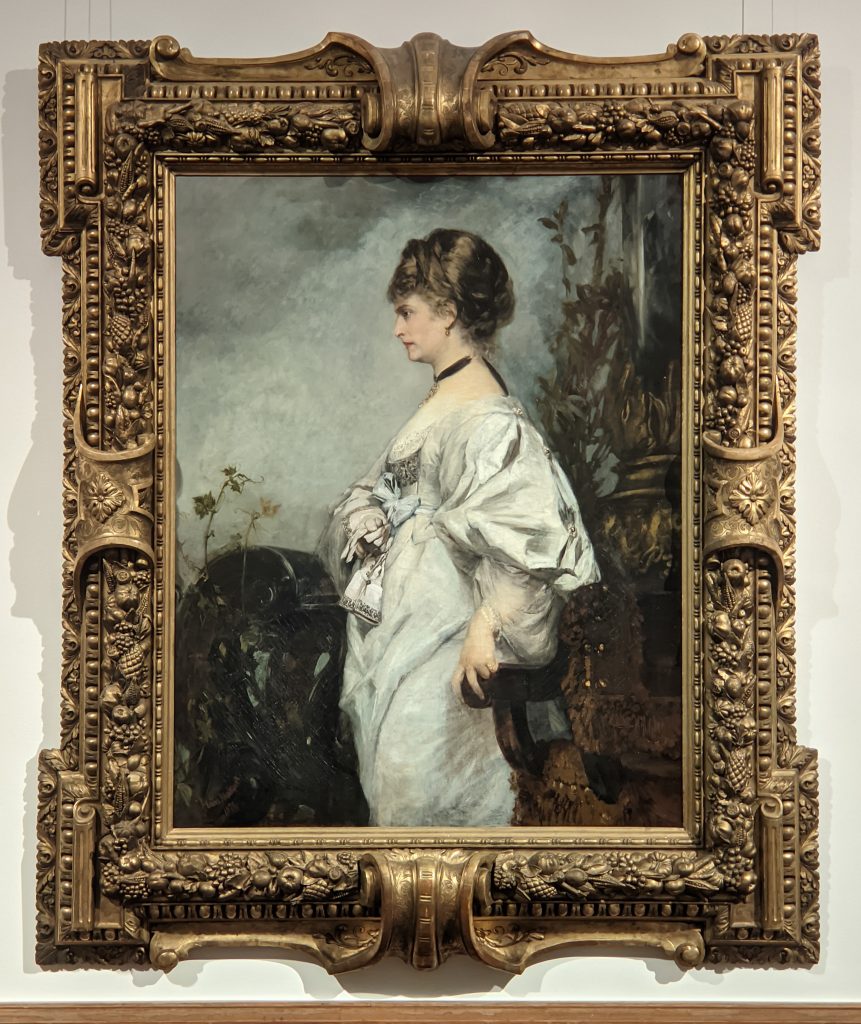
Highlights at the Belvedere Include Portraits by Makart
There is no doubt that Hans Makart (1840 — 1884) was idolized by Klimt; in fact Klimt spoke of his admiration for Makart’s “lavish Baroque design.” Makart’s training was entirely academic and all Germanic art of that period was under the rule of Classicism. Makart, however, possessed a sensual, passionate love of color. Forced to leave the rigid Vienna Academy, Makart relocated to Munich, where he developed his own style: large-scale history paintings where the importance of decorative qualities (brilliant colors, fluid forms) prevailed. Makart would return triumphantly to Vienna, where in the 1870s he was the acknowledged leader of the city’s artistic life, achieving cult-like adulation for moving the decorative, dramatic and sexually symbolic aspects of art to the forefront.
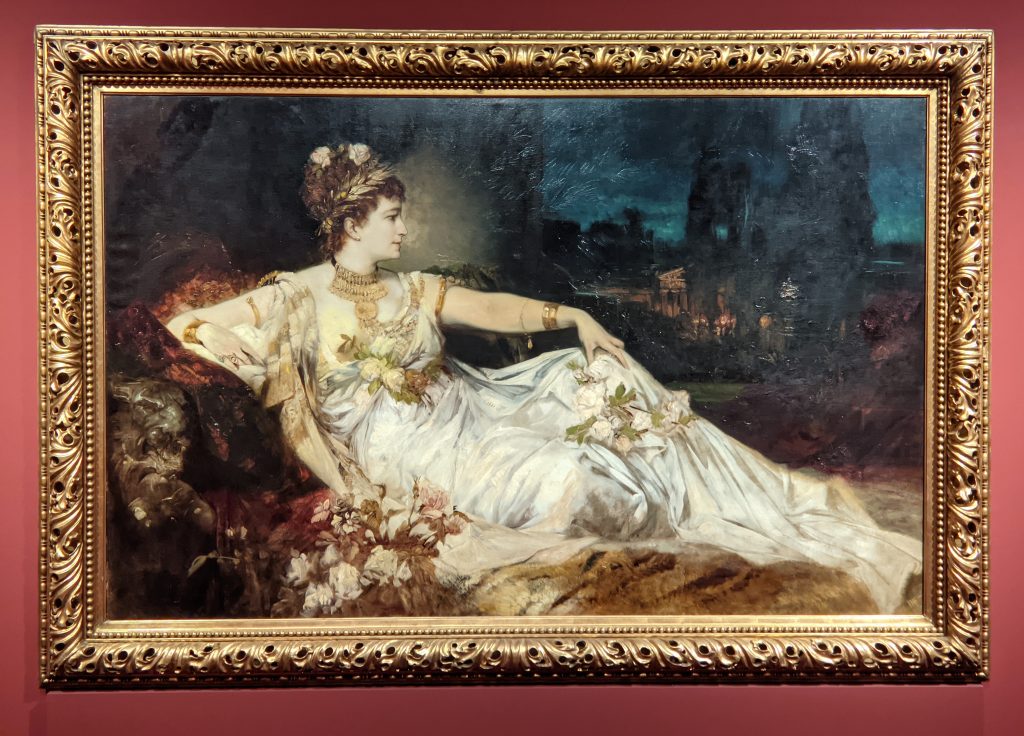
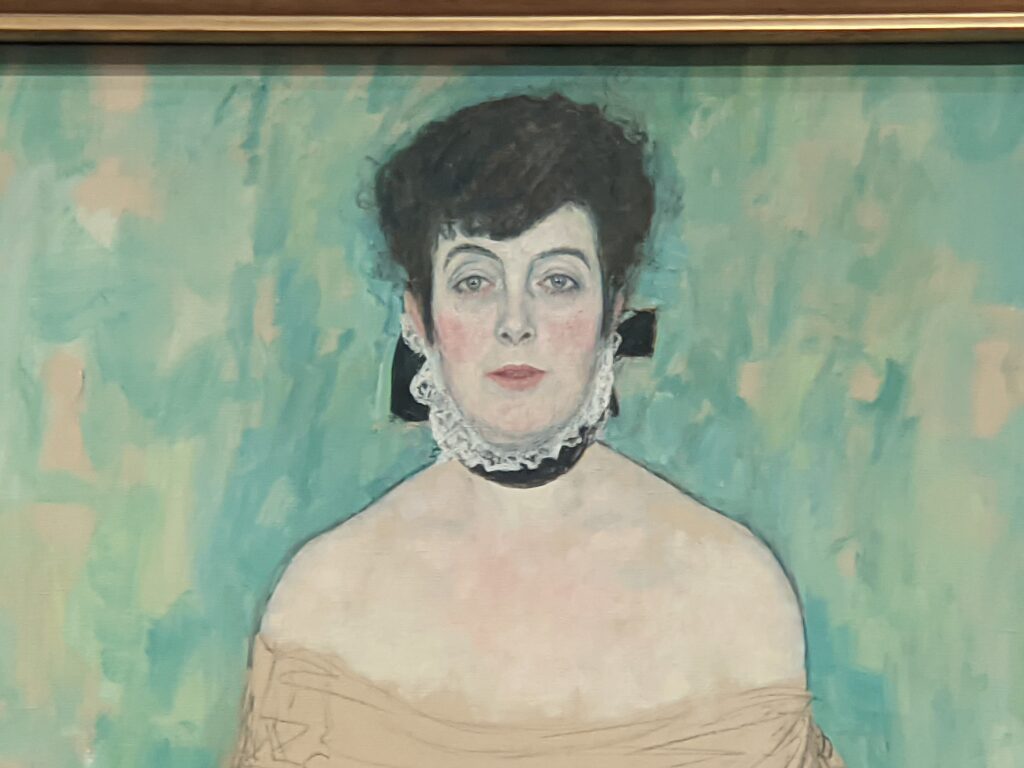

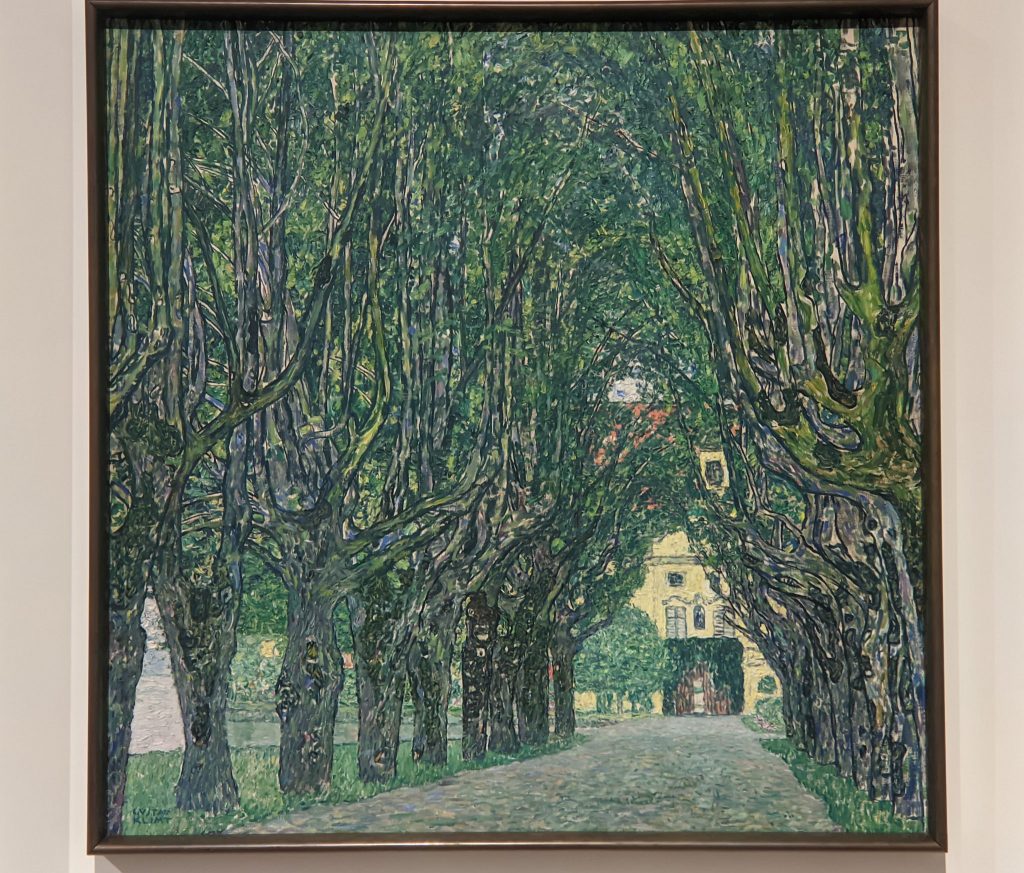
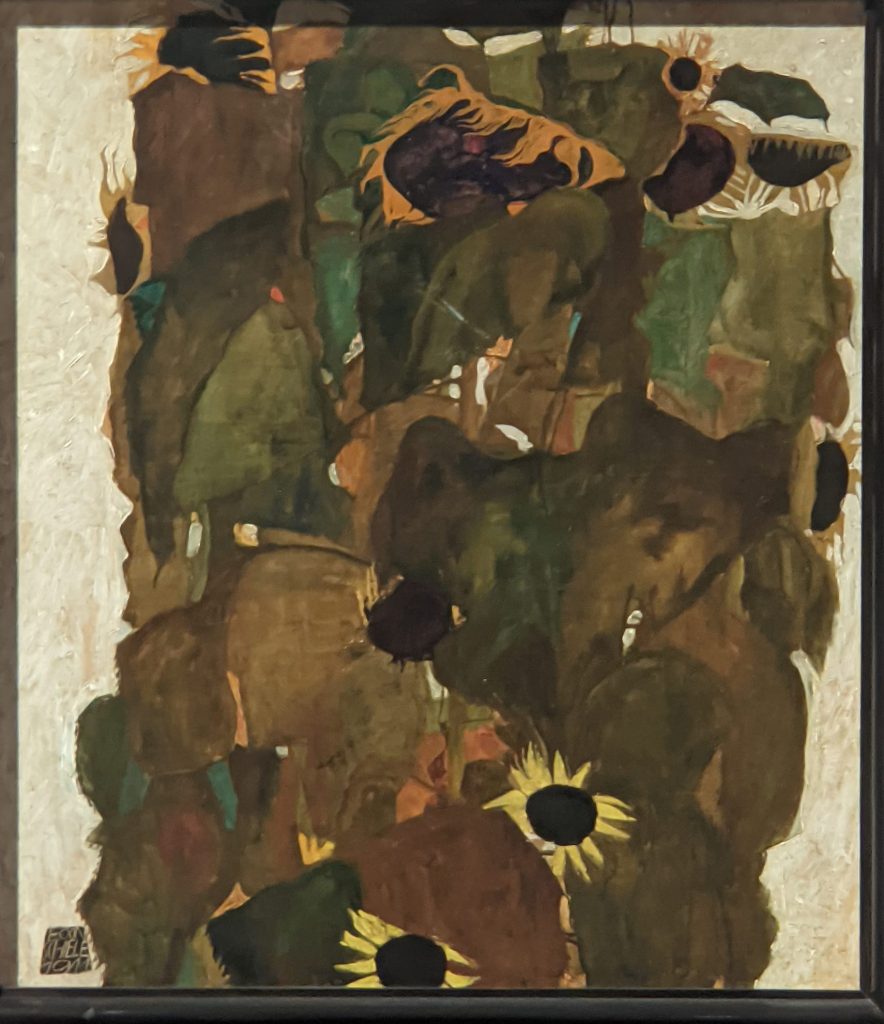
Klimt, Schiele & Van Gogh
It is well-known that Egon Schiele was invited by Klimt to participate in a 1909 exhibit at the Vienna Kunstschau, where Schiele encountered paintings by Vincent van Gogh, Jan Toorop, Edvard Munch and other painters for the first time. As a result, Schiele painted tributes to van Gogh’s Sunflowers.
Schiele’s late work turned darker — delving deeper into human emotions and psychology, revealing a marked distance from his earlier art nouveau-inspired aesthetic and Klimt’s decorative influence.
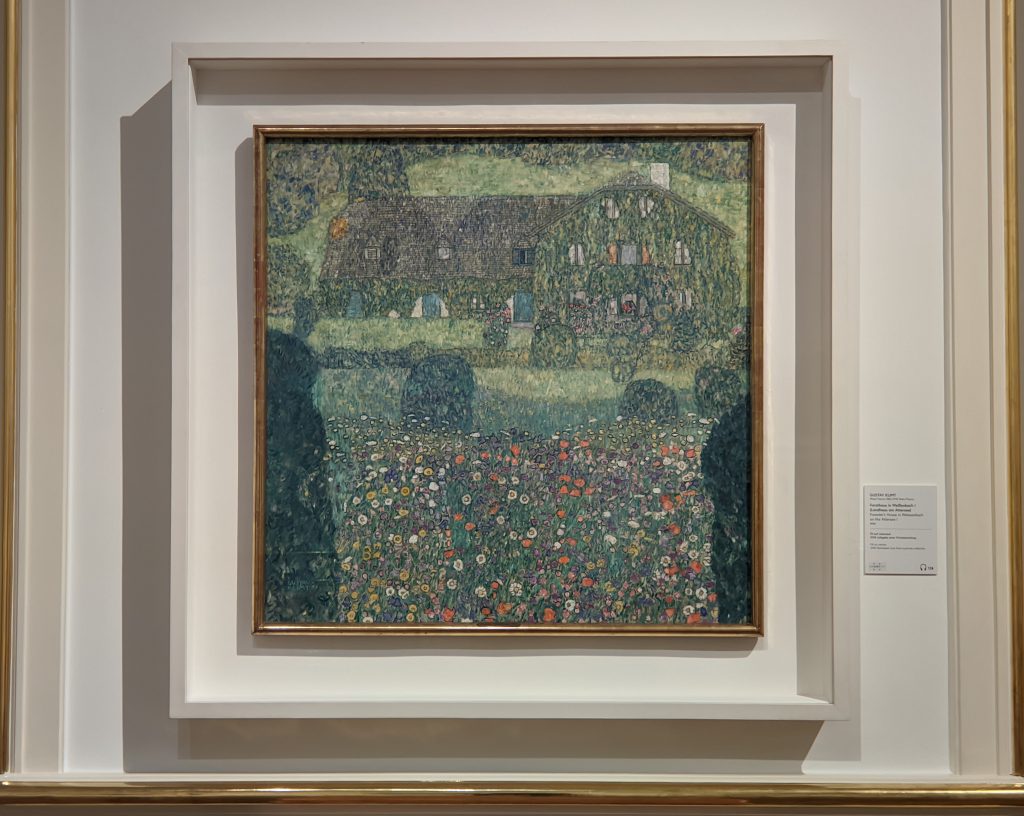
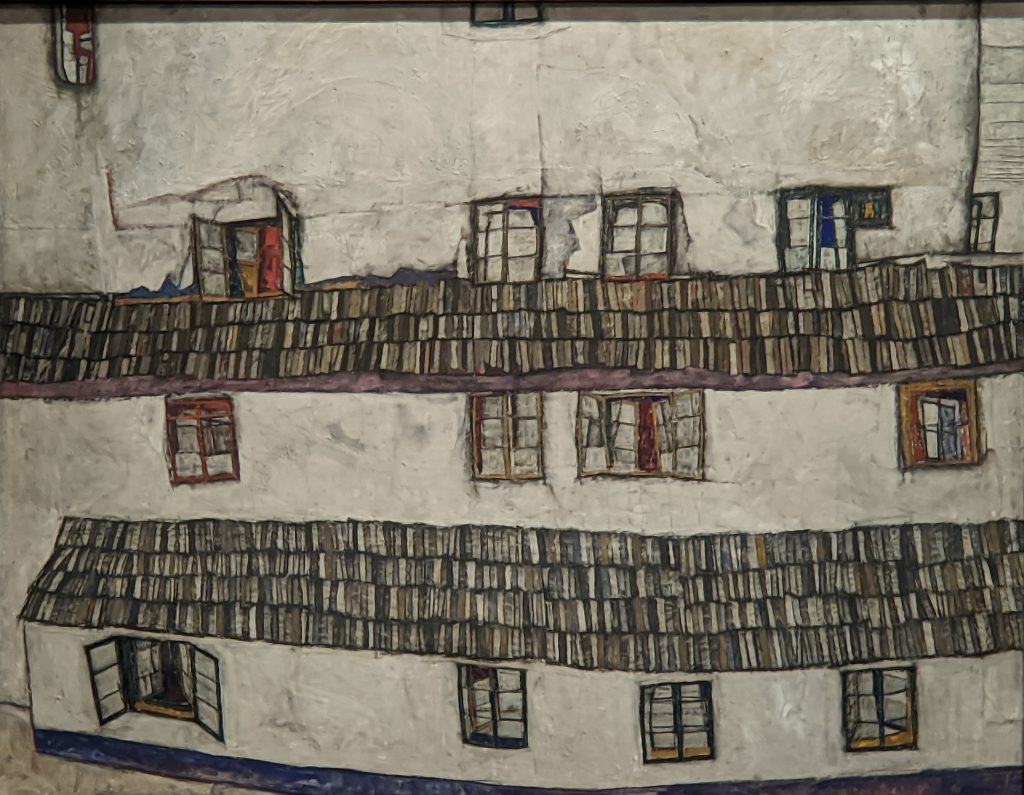
The Belvedere is the perfect place to begin your understanding of the body of work created by Egon Schiele and his mentor, Gustav Klimt. Schiele painted prolifically and participated in the Vienna Secession’s 49th exhibit (in 1918), which was an enormous success.
In 2011, one cityscape by Schiele sold for more than $40 million.
As a result of the 1918 influenza pandemic, Klimt experienced pneumonia and died from a stroke. “Emilie must come” were Klimt’s final words. Klimt left half of his estate to family members and the other half to Emilie.
Later, in the same year, Edith Schiele (the artist’s wife, who was six month’s pregnant) also perished from influenza; her baby did not survive. Three days later, Egon Schiele succumbed to the same viral infection. He was 28 years old.
Klimt’s body of work differed from the history paintings containing mythological subjects and classical themes of his predecessors because Klimt depicted his figures with human (not god-like) characteristics. His groundbreaking style injected sexuality and a uniquely expressive atmosphere into figurative painting. Egon Schiele remains a seminal artist in the development of Expressionism in painting.
CURRENT & FUTURE EXHIBITIONS AT THE BELVEDERE
Through February 25, 2024
“The Belvedere — 300 Years of Art”
It took more than a decade to build the Upper and Lower Belvedere palaces. Construction was completed in 1723. The Belvedere is reflecting on its history over the past 300 years, both as an architectural landmark and a museum for the presentation of culture, with a small high-quality show in the Lower Belvedere. Below, artwork from this exhibition’s original installation in 2023.

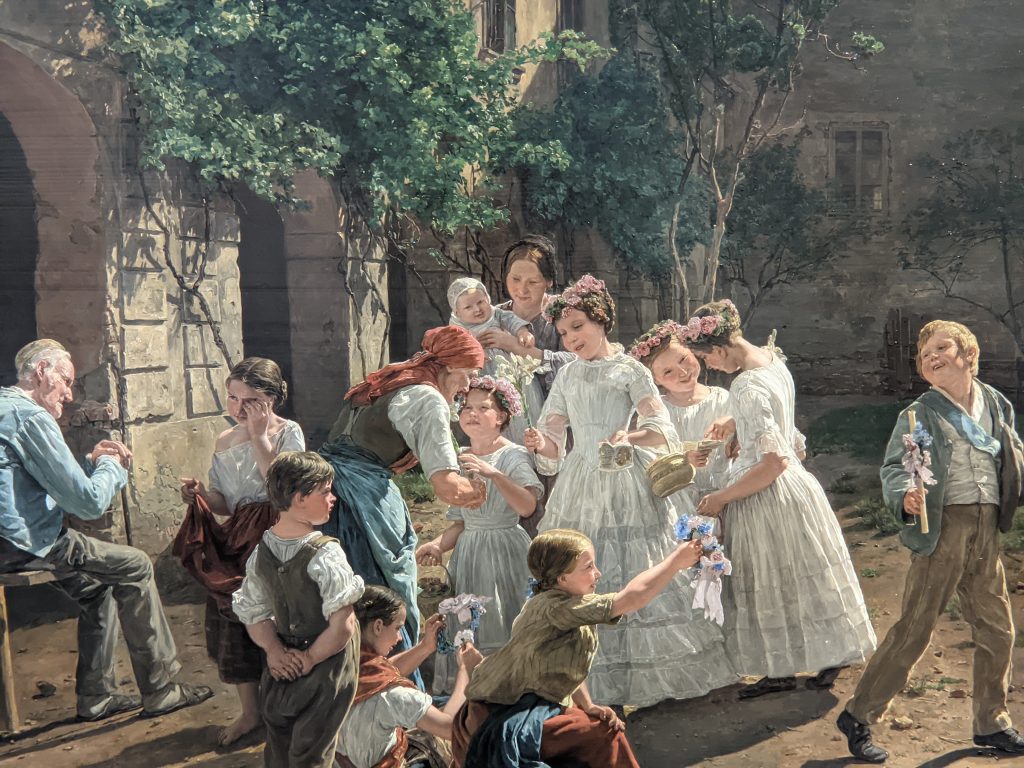


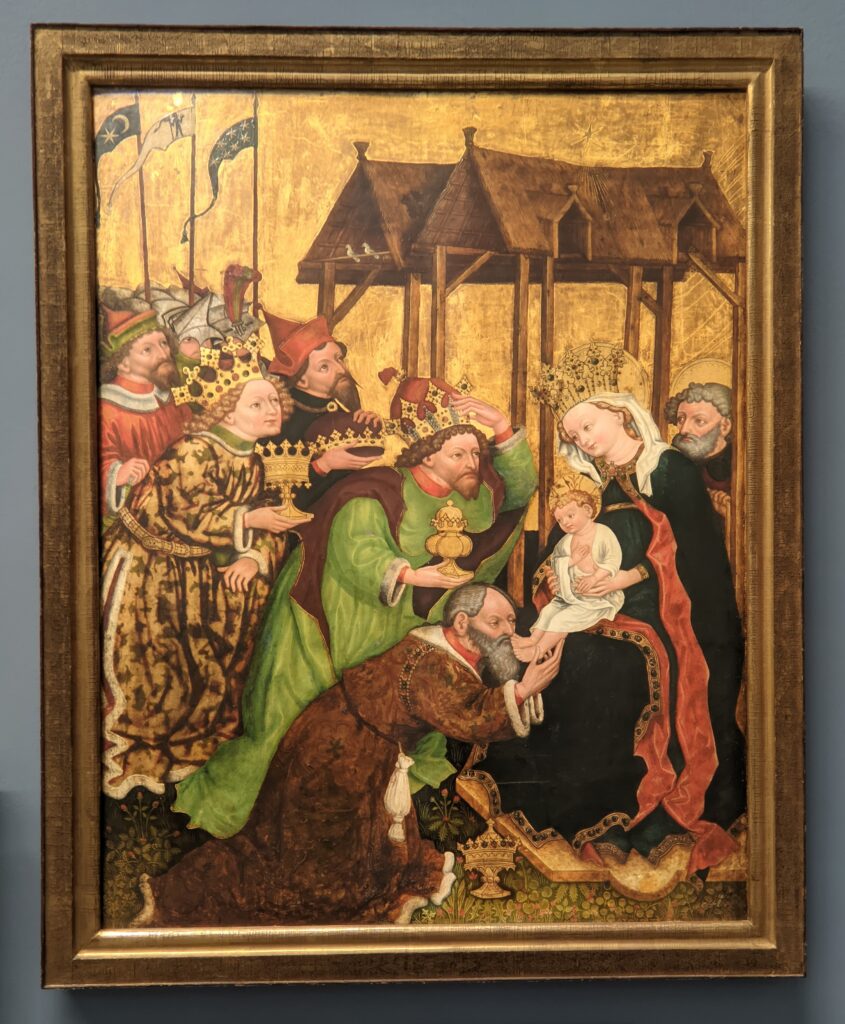
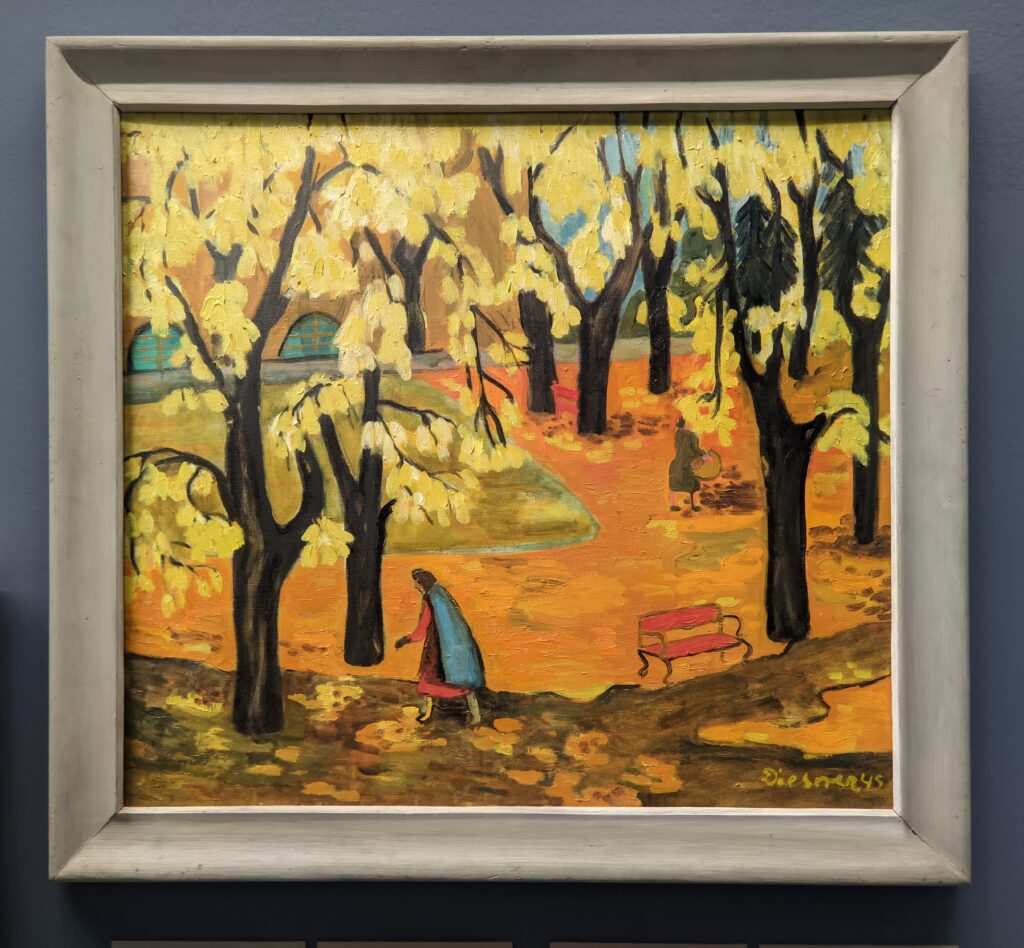
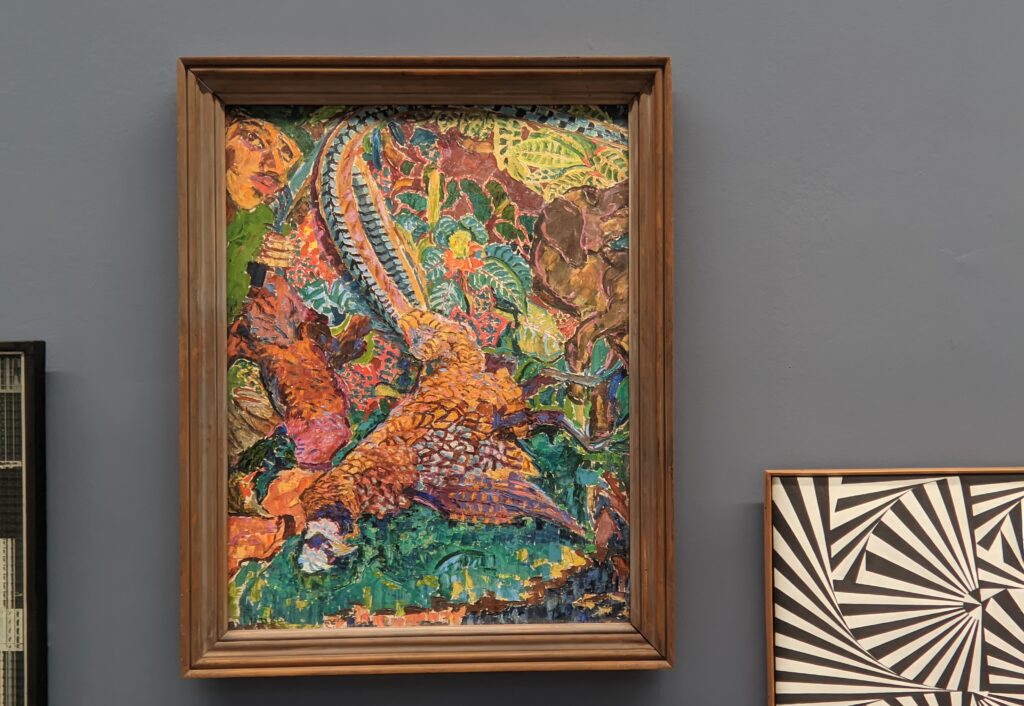

As you can see from these images, this small (and very interesting) exhibit surveyed 300 years of change in Austrian society — from the signing (shown above) of the “Treaty for the re-establishment of an independent and democratic Austria” (which re-established Austria as a sovereign state following years of foreign annexation and occupation after W.W. II) to the feminist artistry of Krystufek and her self-empowered philosophy “Anyone who looks needs to know that I look back.”
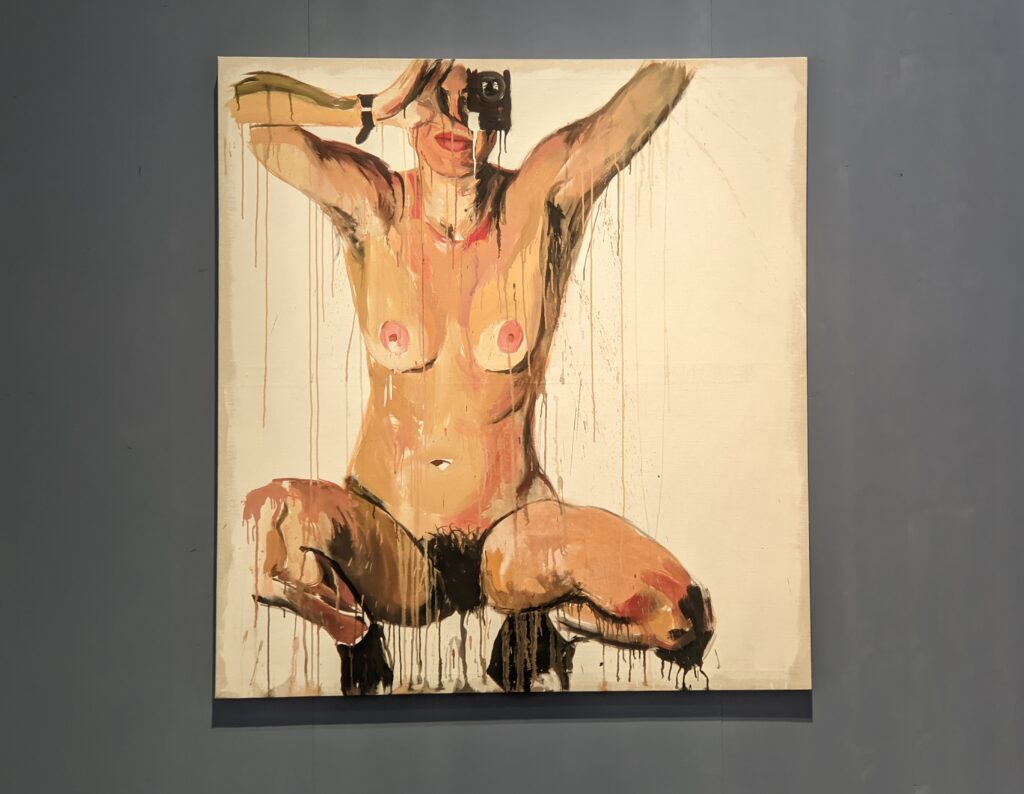
Louise Bourgeois — Persistent Antagonism
A retrospective devoted to the sculptures, drawings, paintings and prints of Louise Bourgeois may be seen from September 22, 2023 until January 28, 2024.
Broncia Koller-Pinell & Akseli Gallen-Kallela
From March 15 through September 8, 2024, a special exhibit will survey the progression (from the Impressionistic style of the Munich School to New Objectivity in the 1920s) of Broncia Koller-Pinell, one of the few women artists to have a presence in international exhibits of Austrian Modernism. A retrospective devoted to Akseli Gallen-Kallela will be on view from September 27, 2024 — February 2, 2025.
Previous Lower Belvedere Displays Included a Unique Klimt Exhibition

Through May 29, 2023, over 90 paintings from Austrian and European collections, including the Van Gogh Museum in Amsterdam, were on display at the Lower Belvedere in the exhibit entitled “Klimt. Inspired by Van Gogh, Rodin, Matisse…” This first-rate show included art by James McNeill Whistler, Lourens Alma Tadema, Jan Toorop, Margaret Macdonald Mackintosh and other prominent artists.
Research was conducted in recent years to learn which leading international painters and sculptors influenced the artistic development of Gustav Klimt. For example, it has been verified that Klimt saw the Van Gogh painting “The Plain at Auvers” (below) in Austria when it was exhibited at the 1903 Impressionist exhibition sponsored by the Vienna Secession.

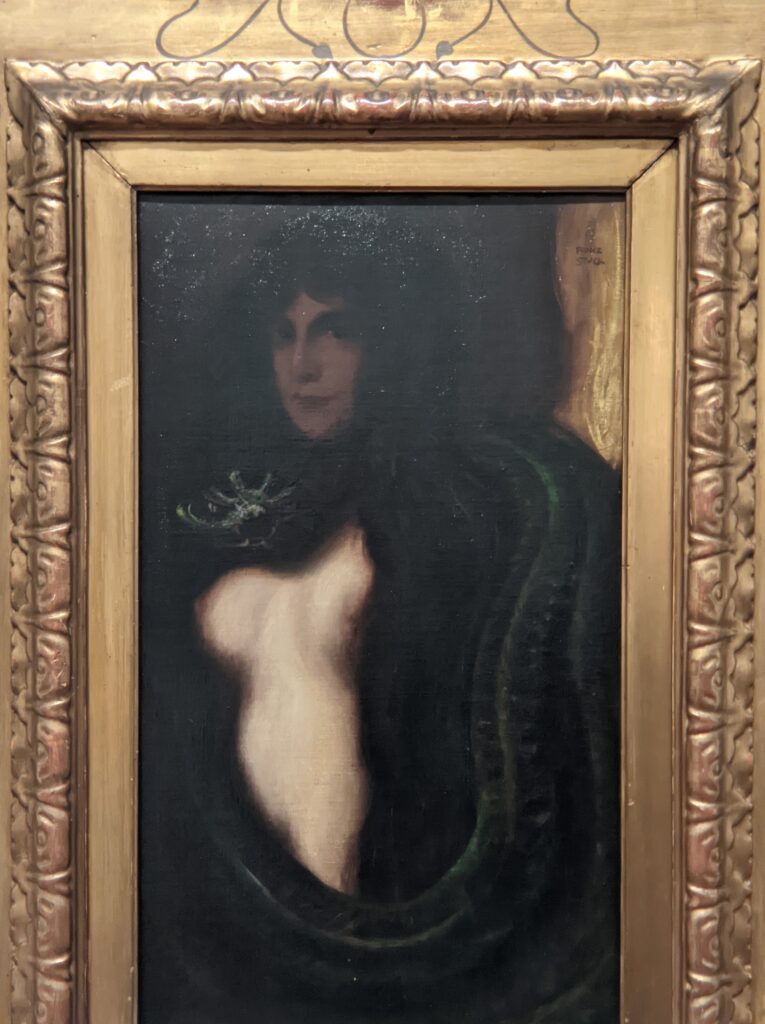
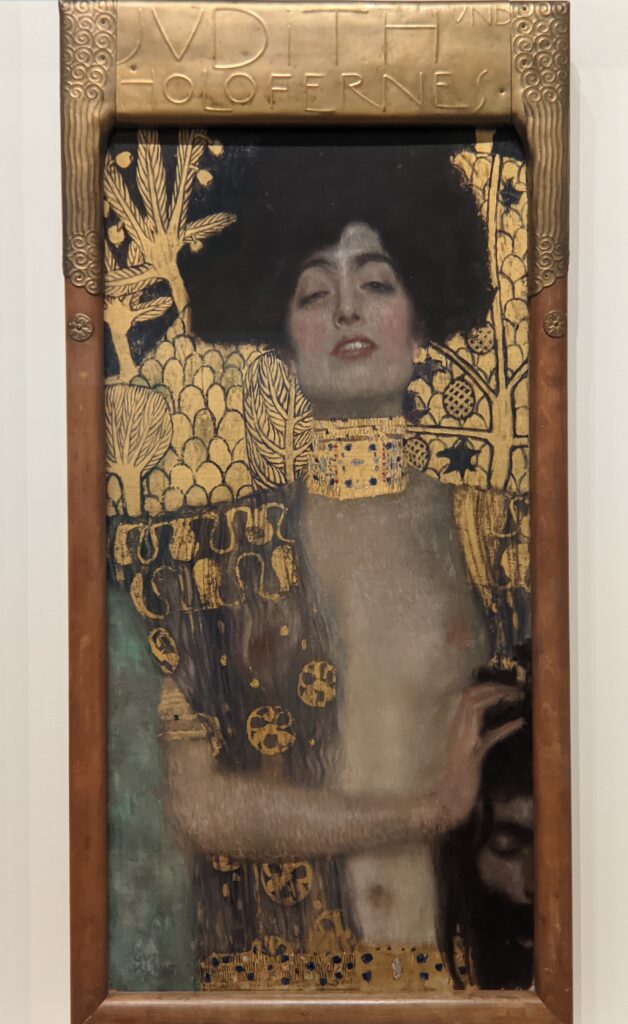
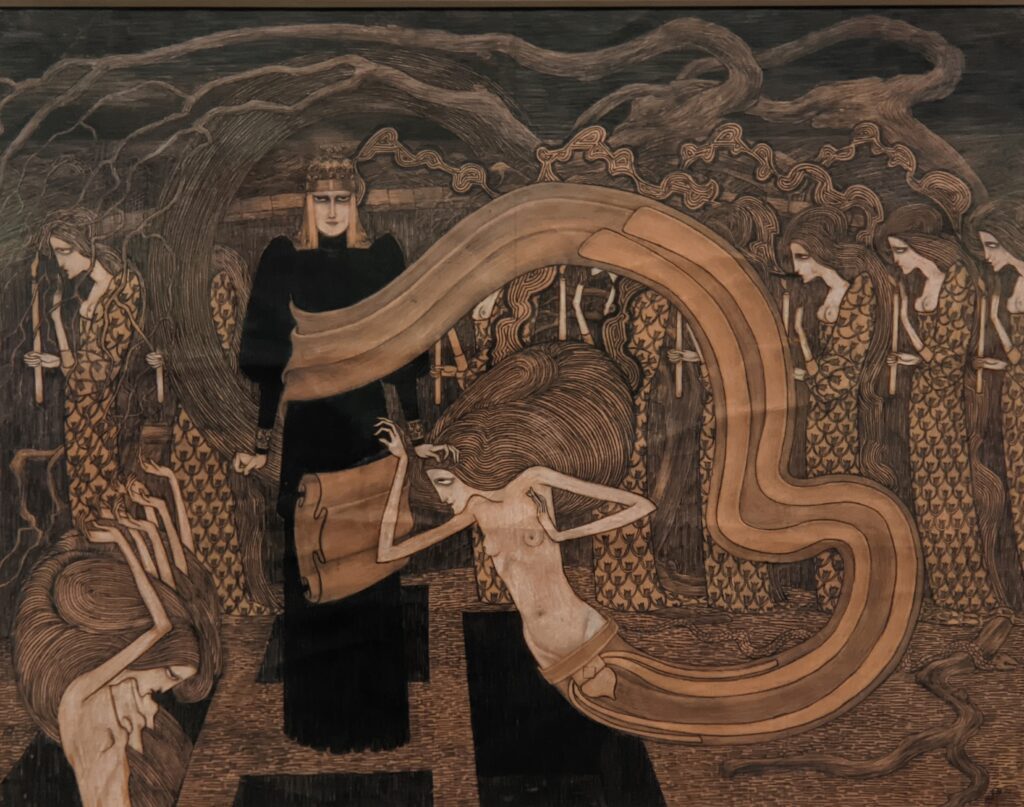


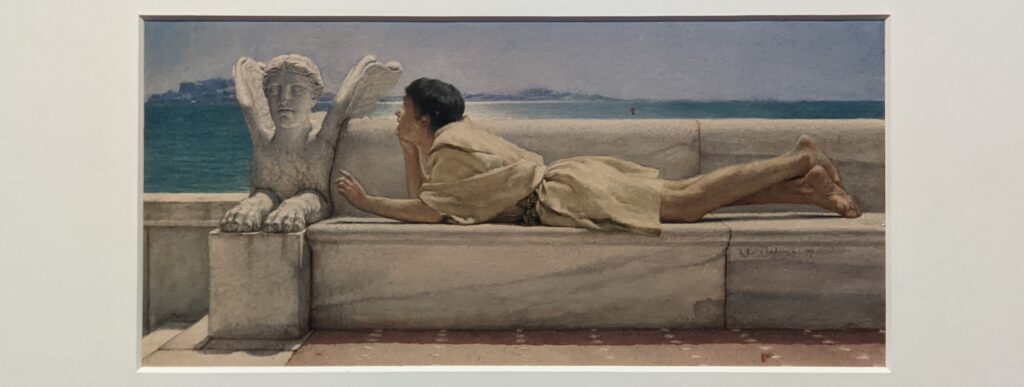
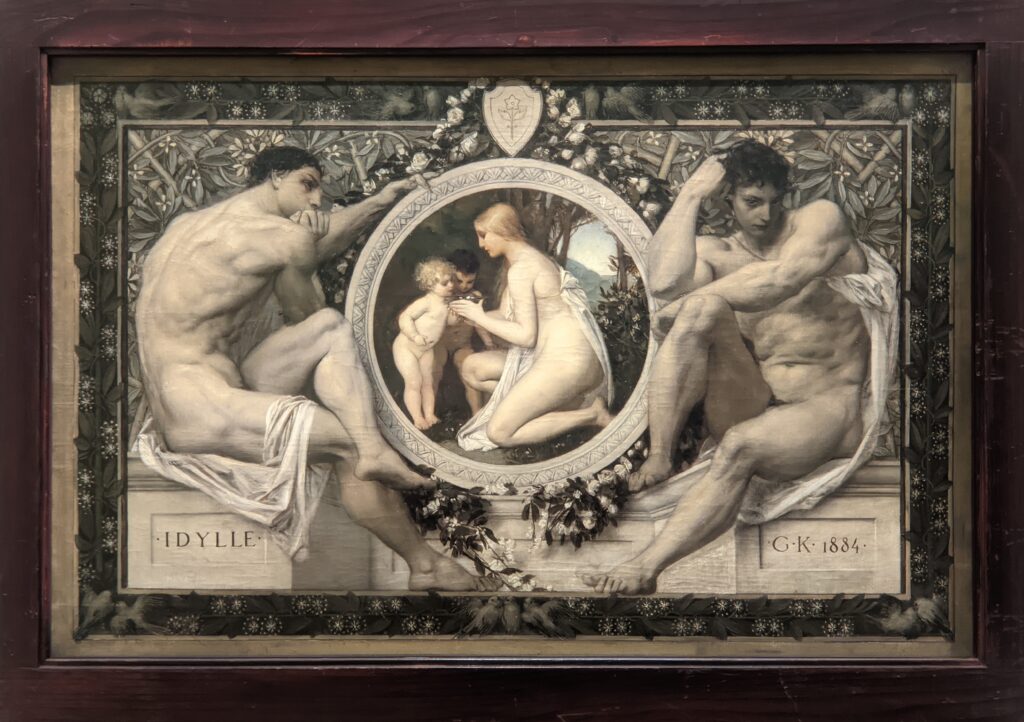
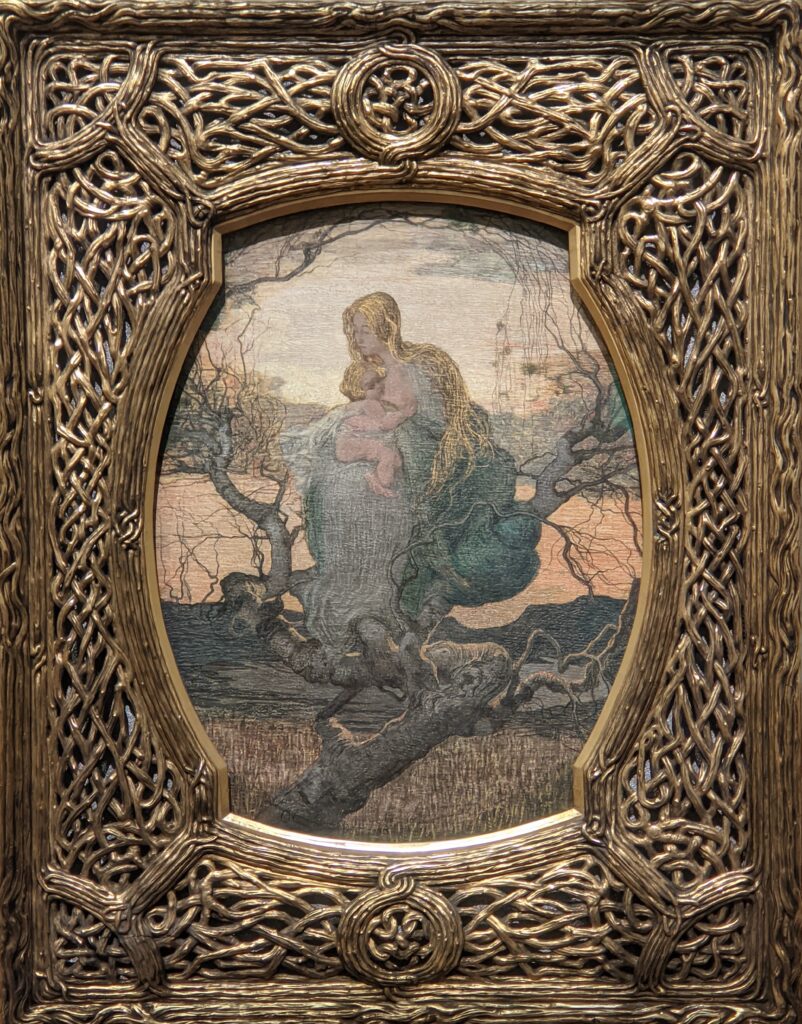

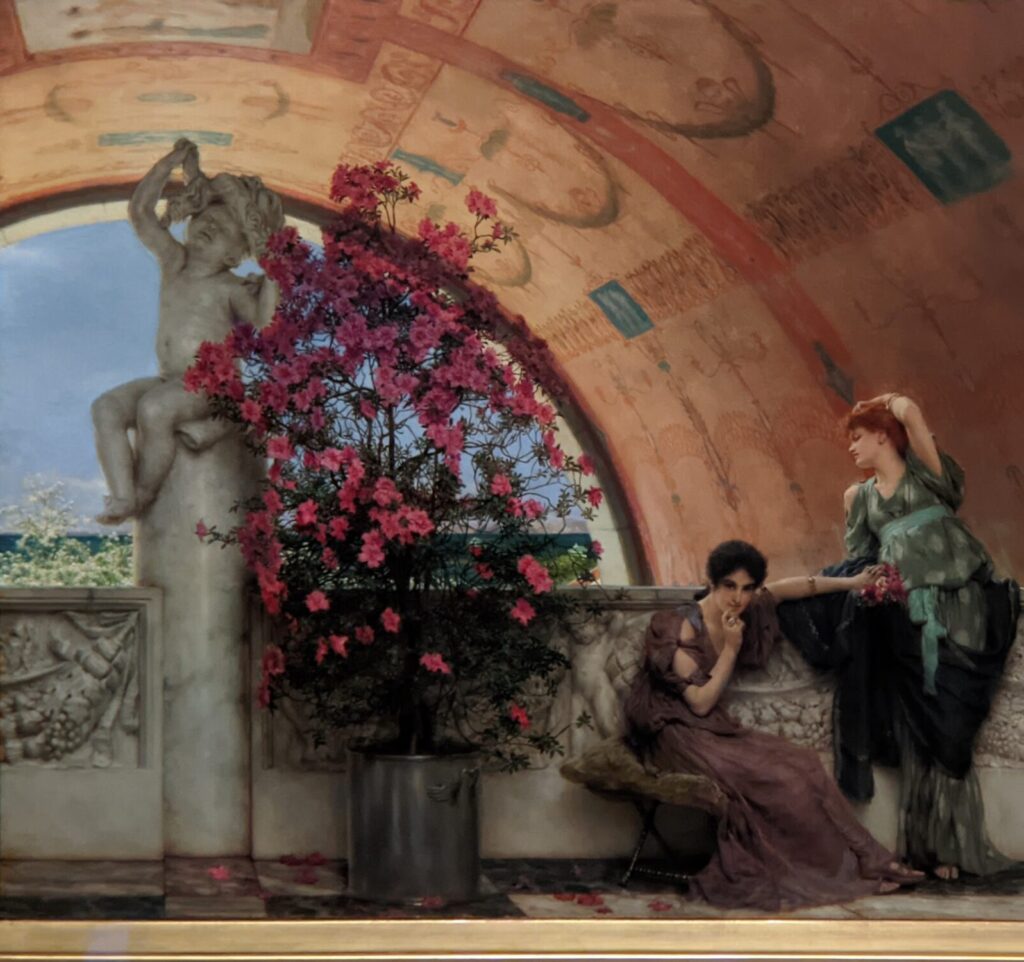
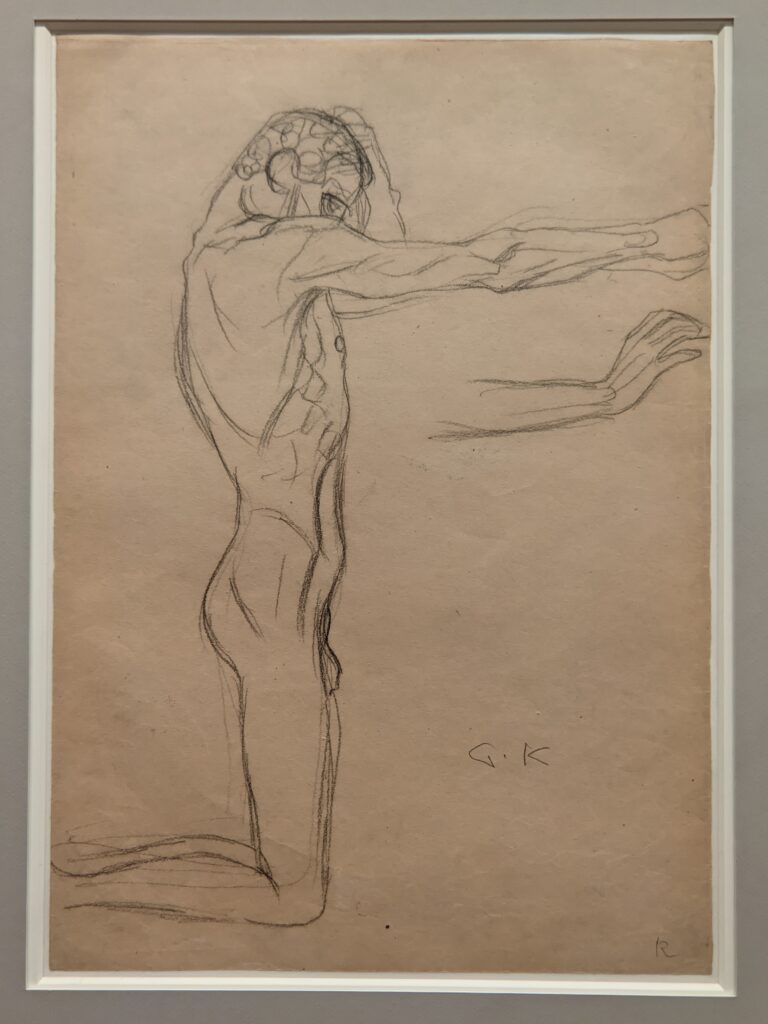

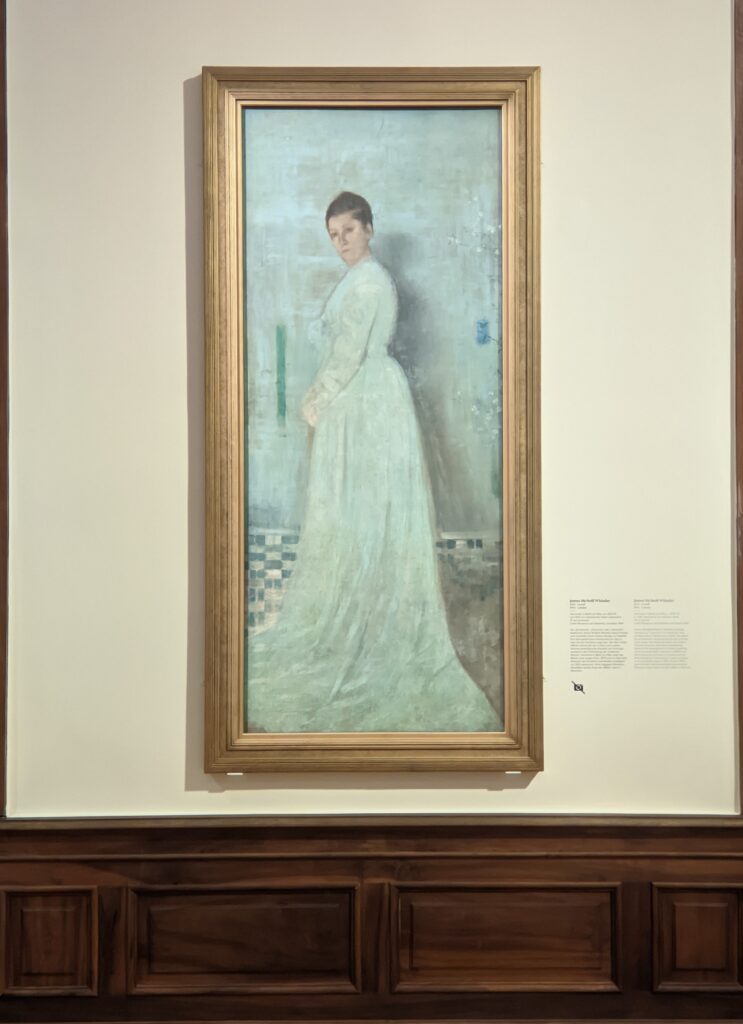

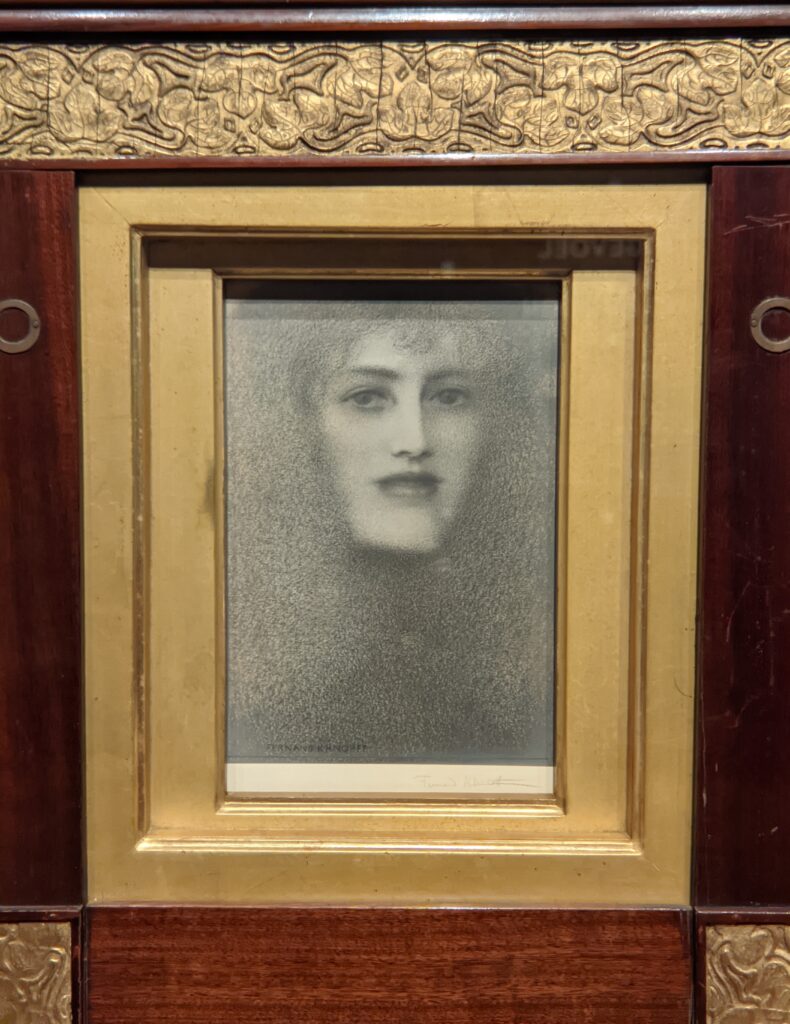
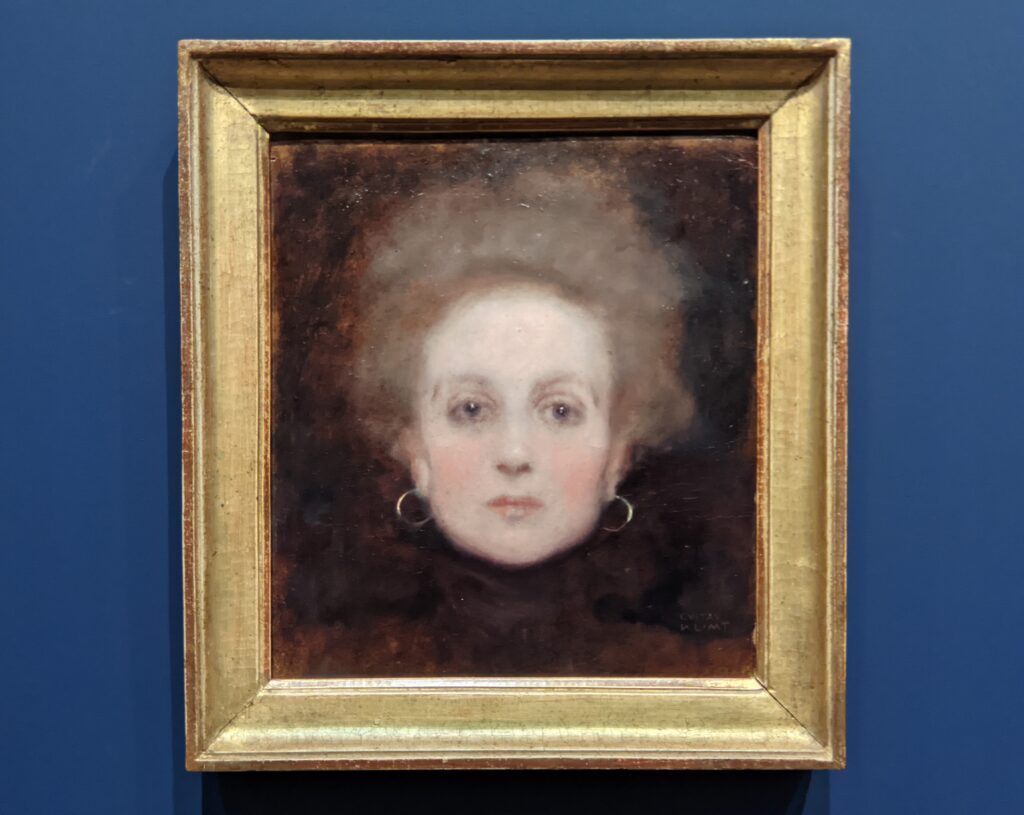
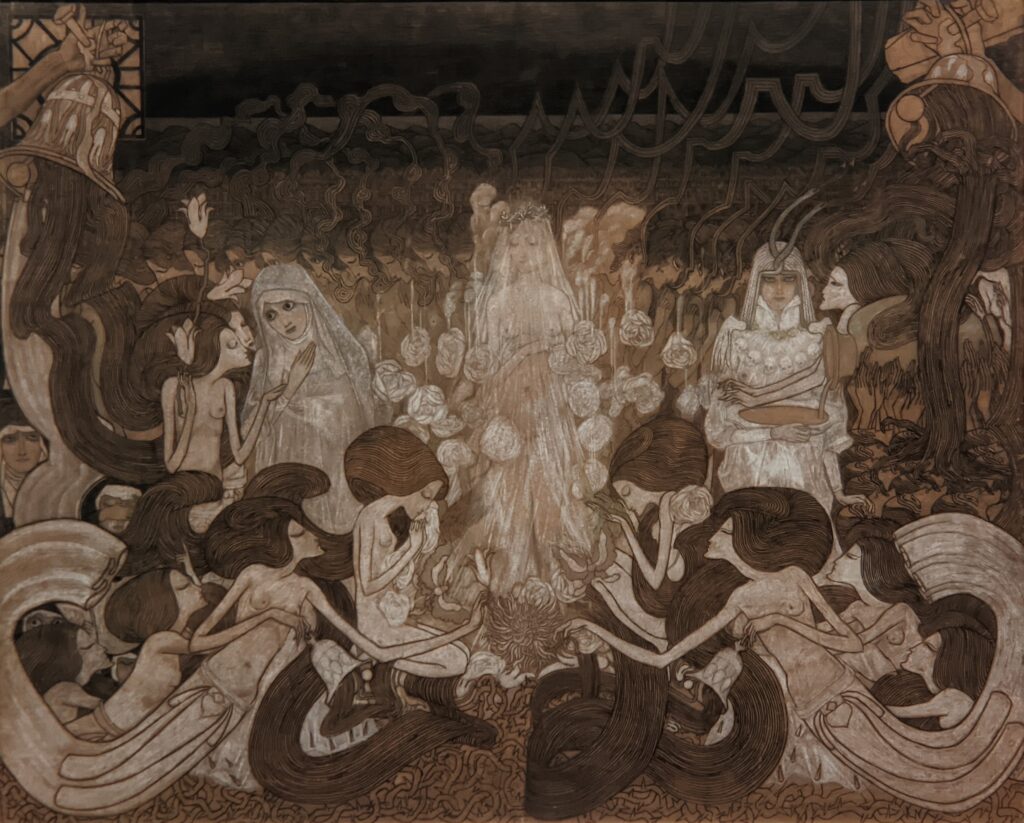
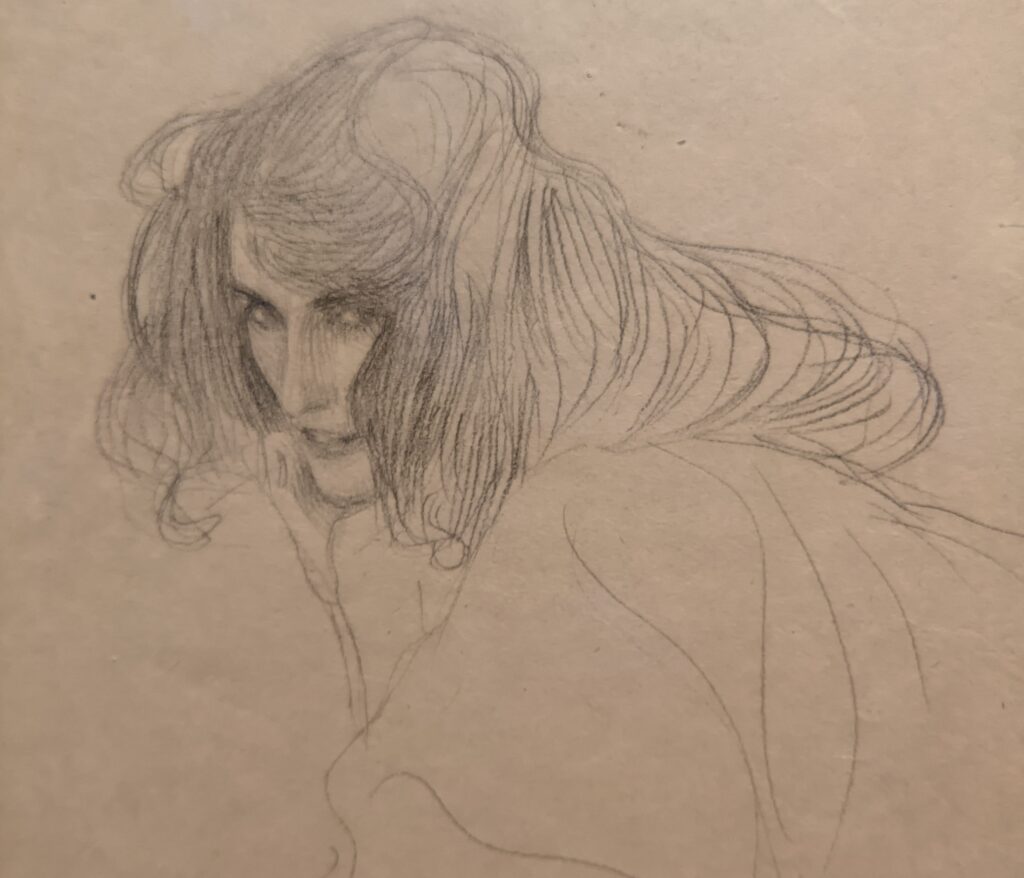




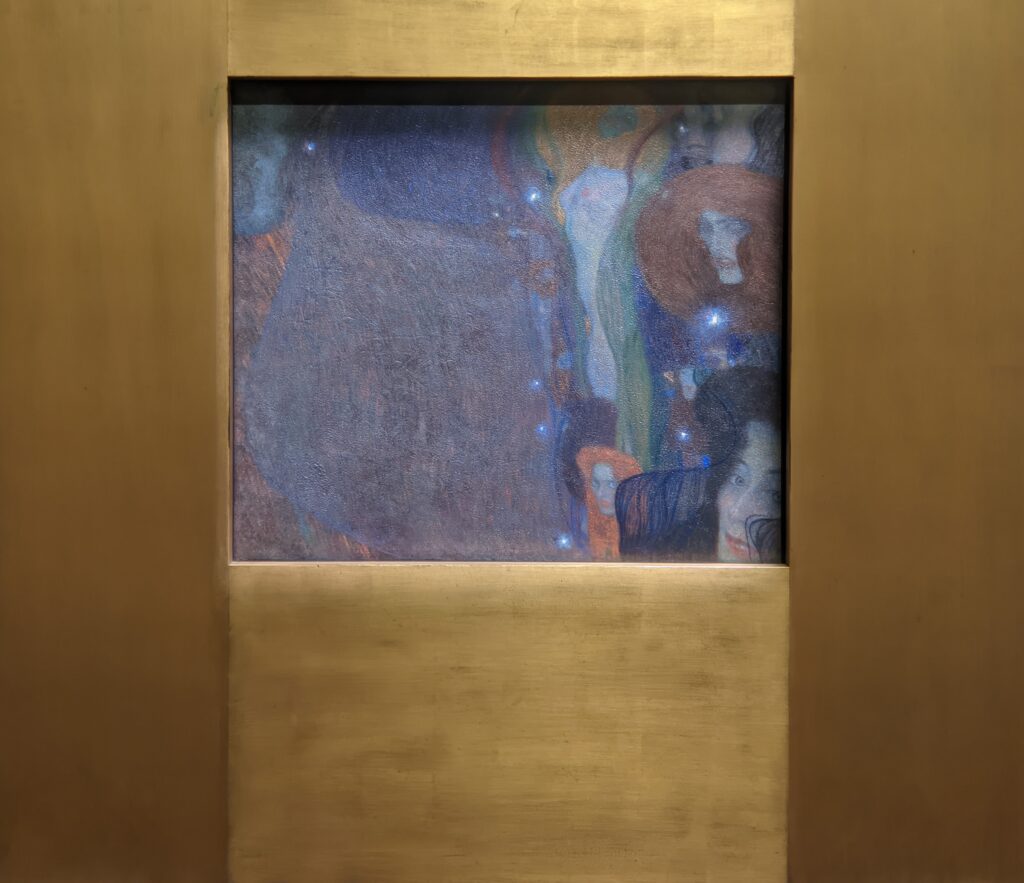
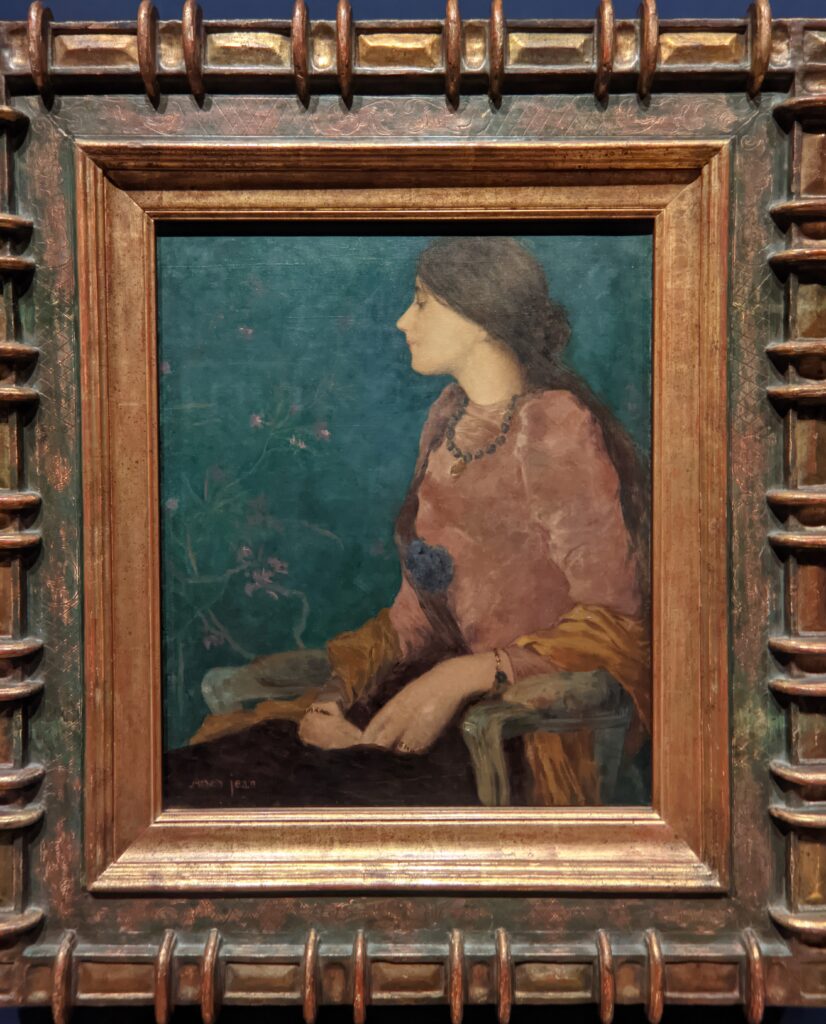

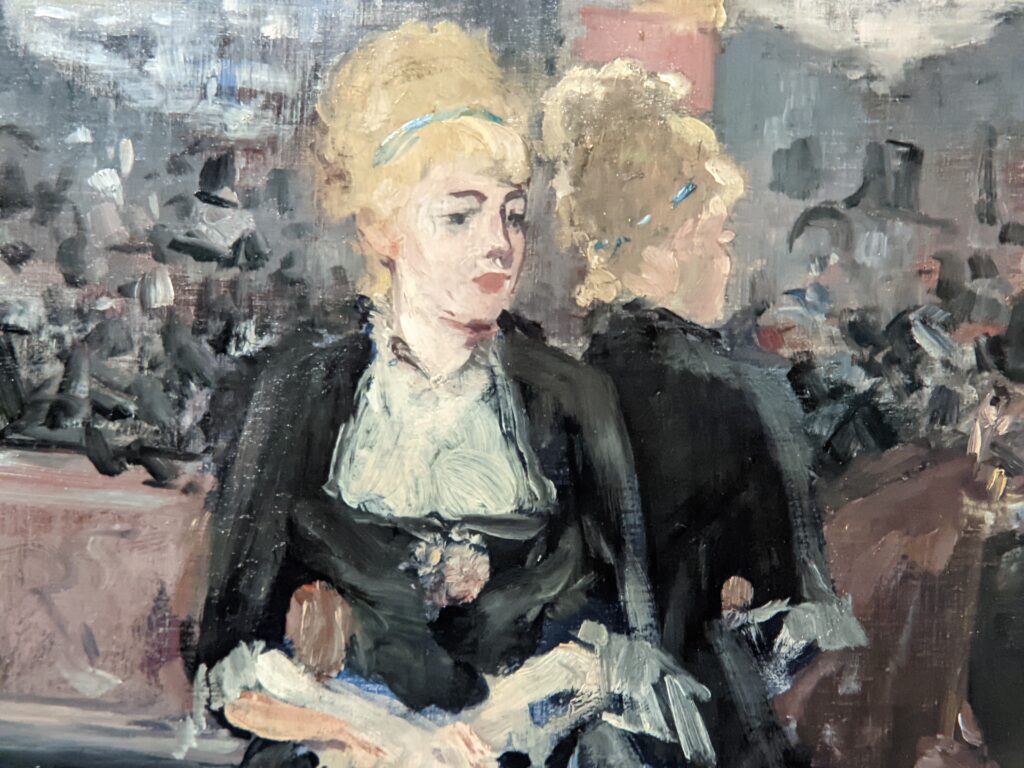


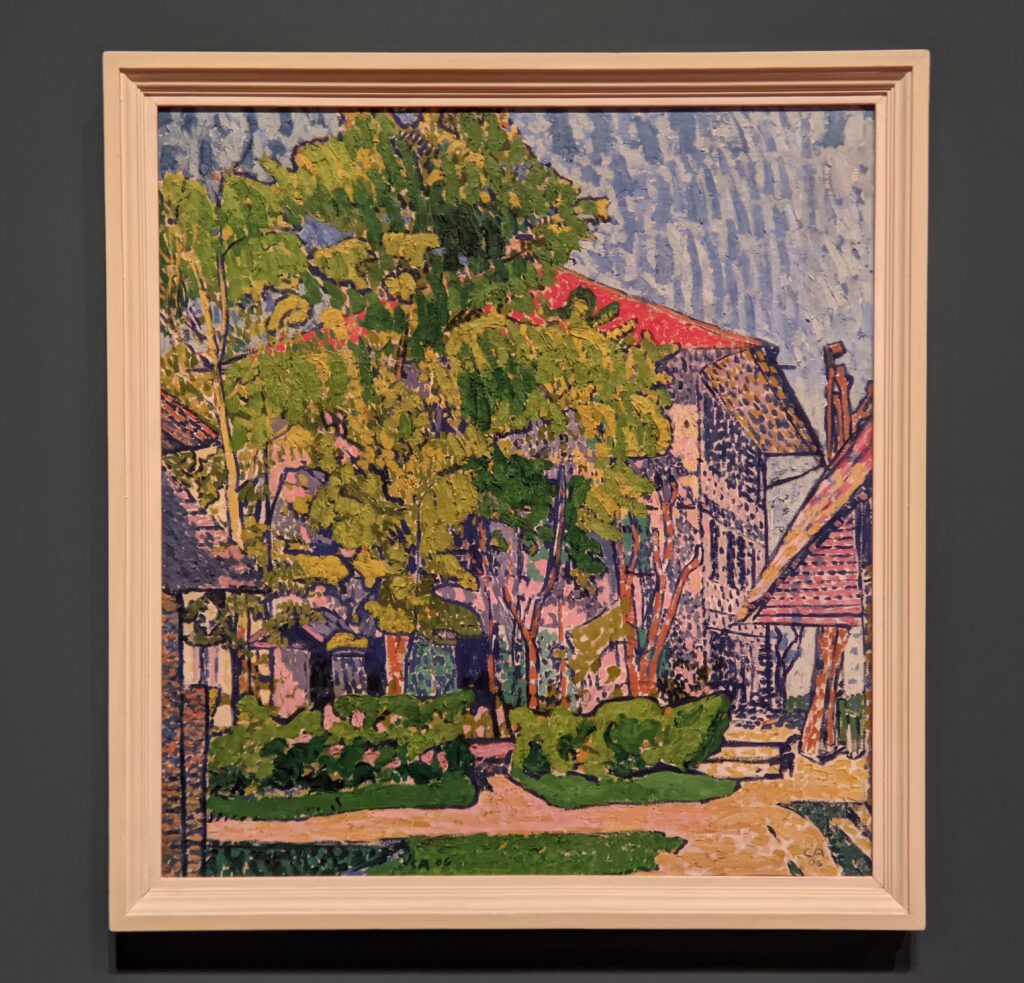
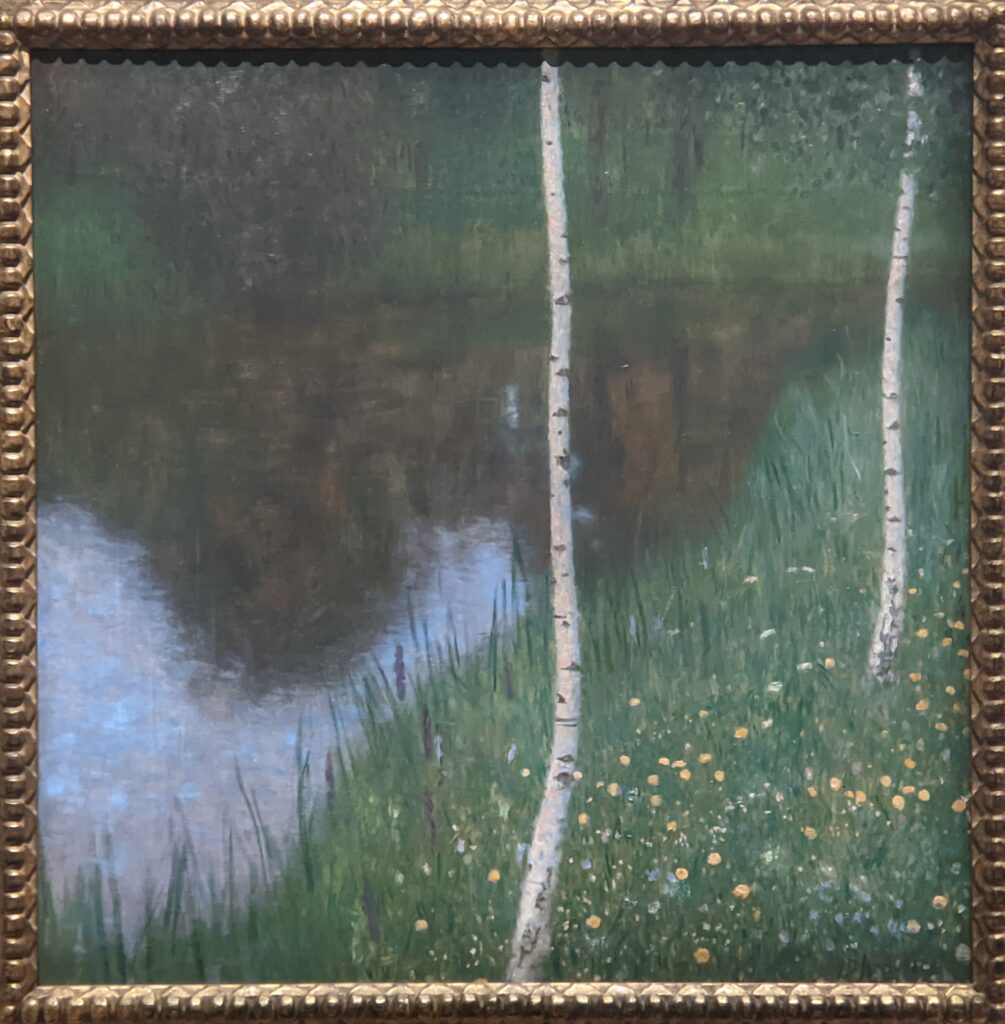

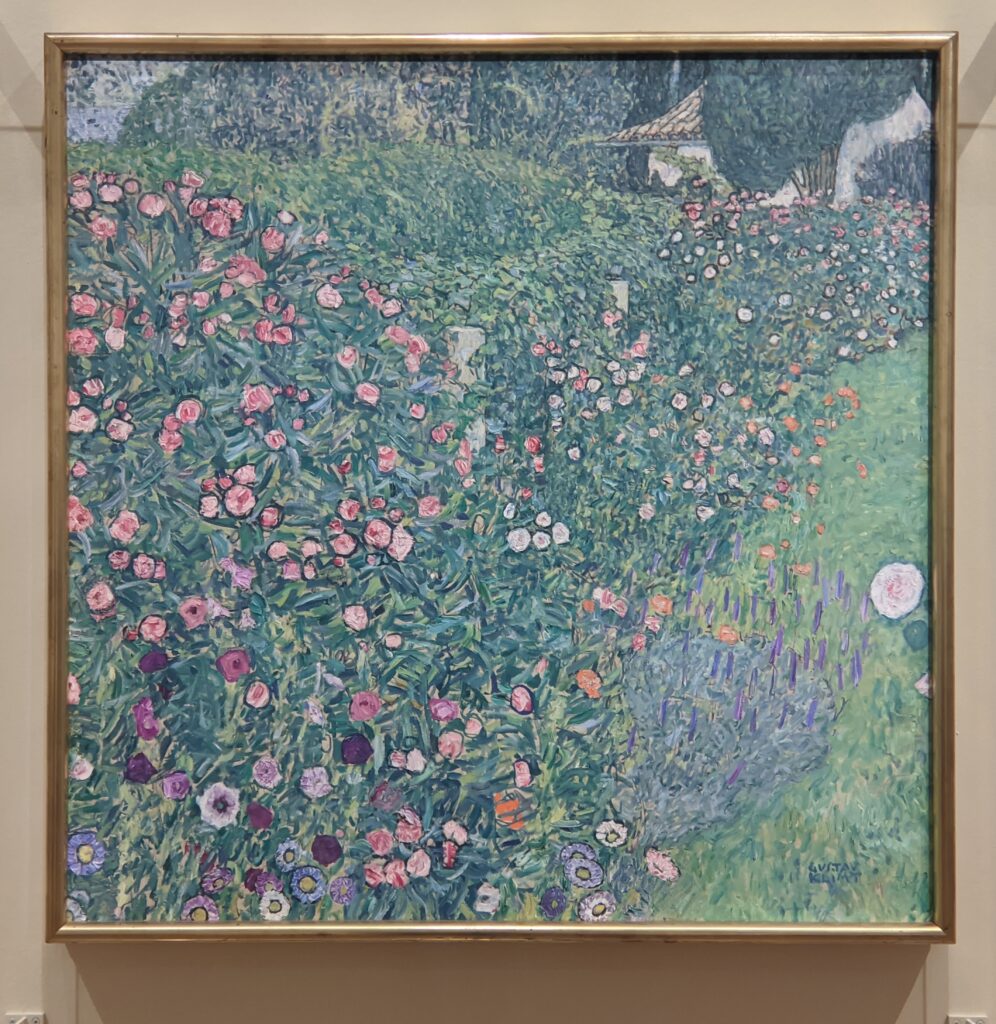
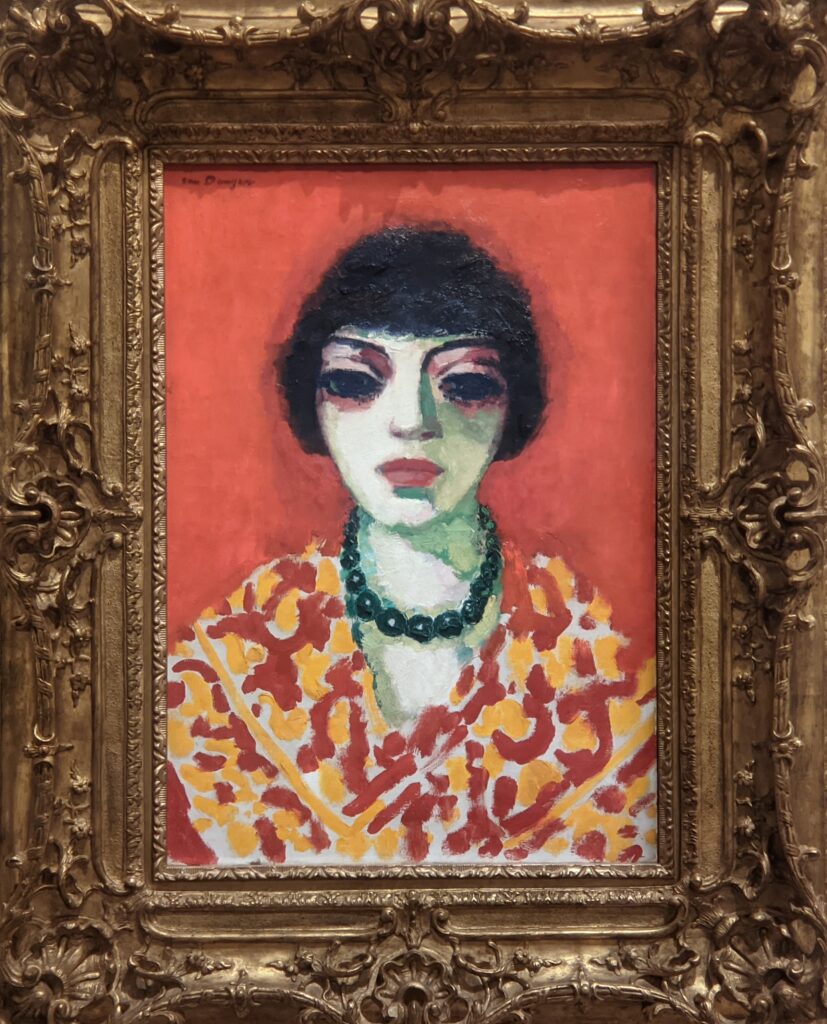
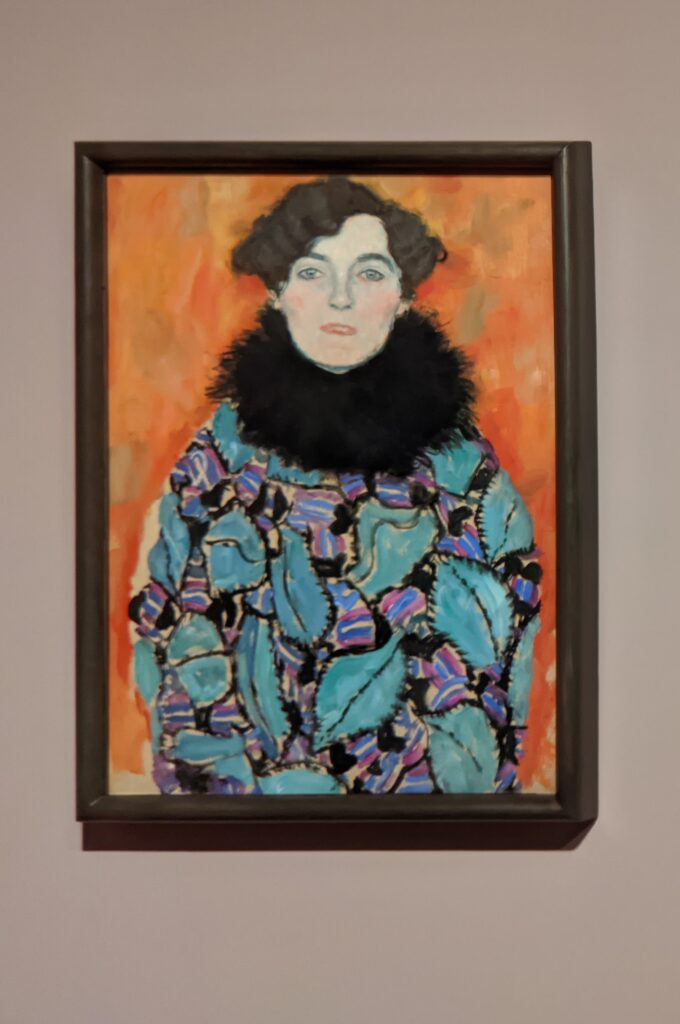
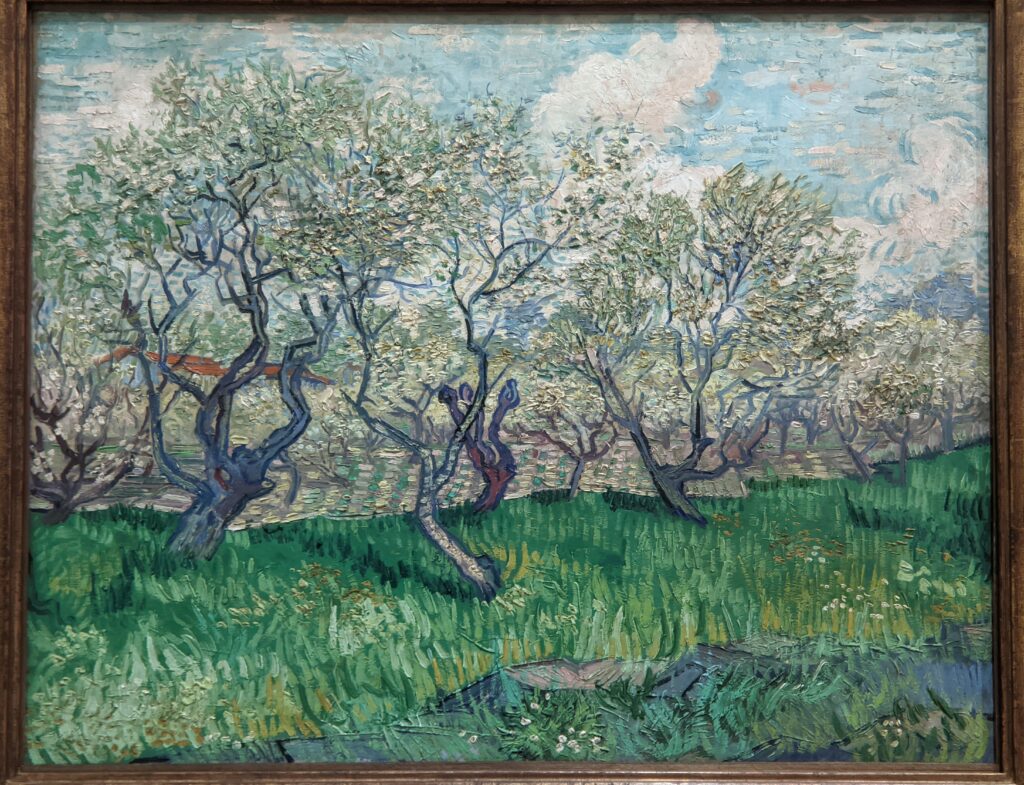
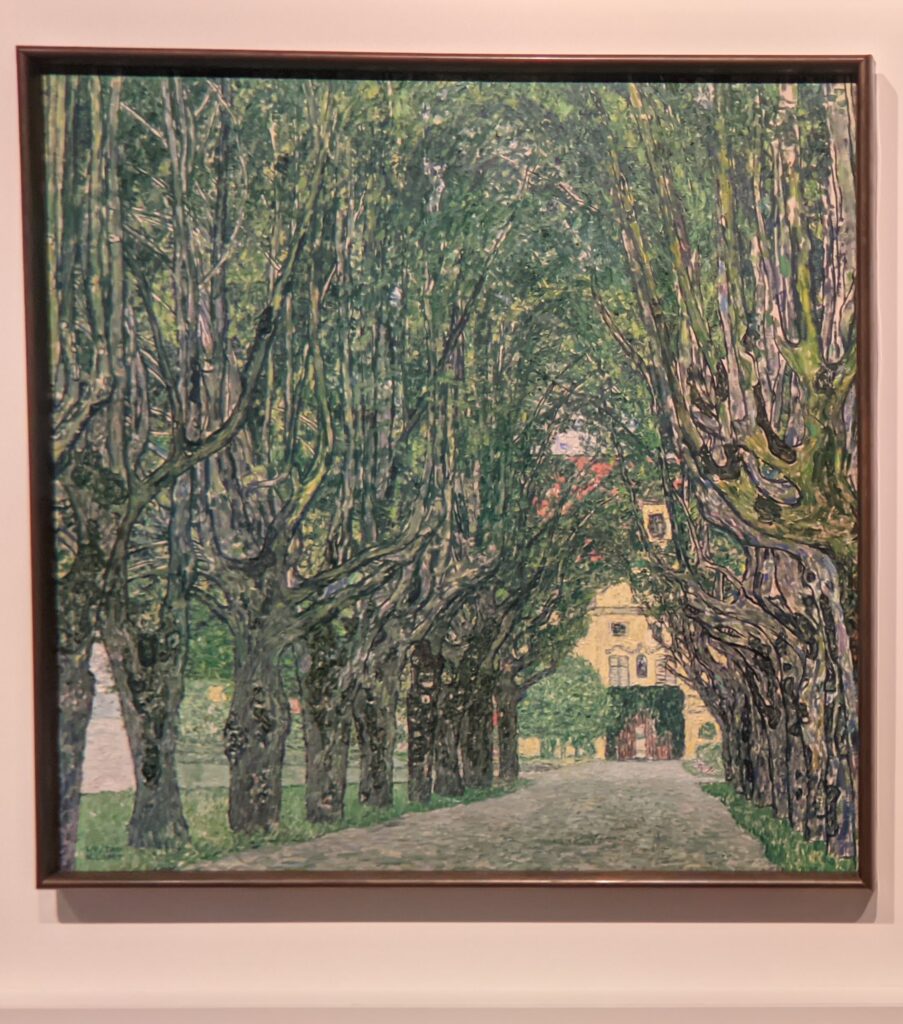

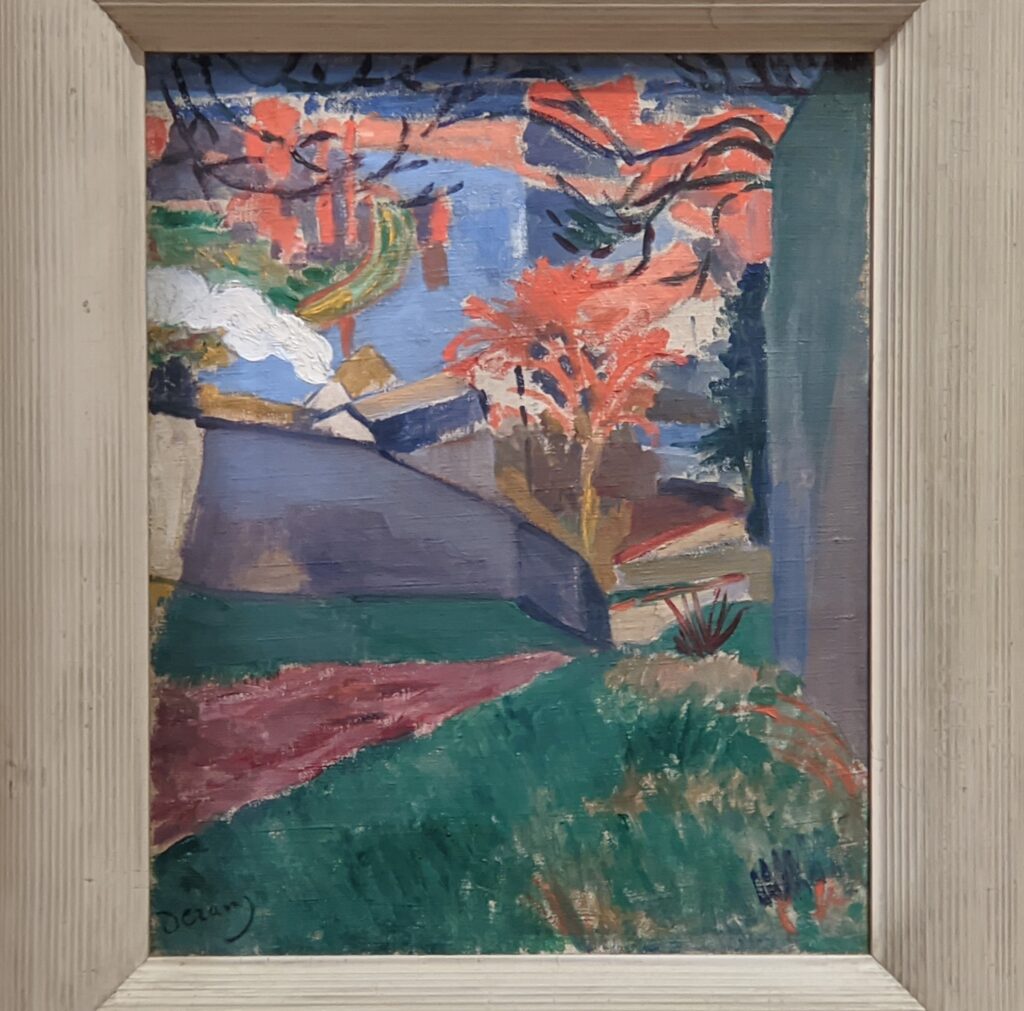
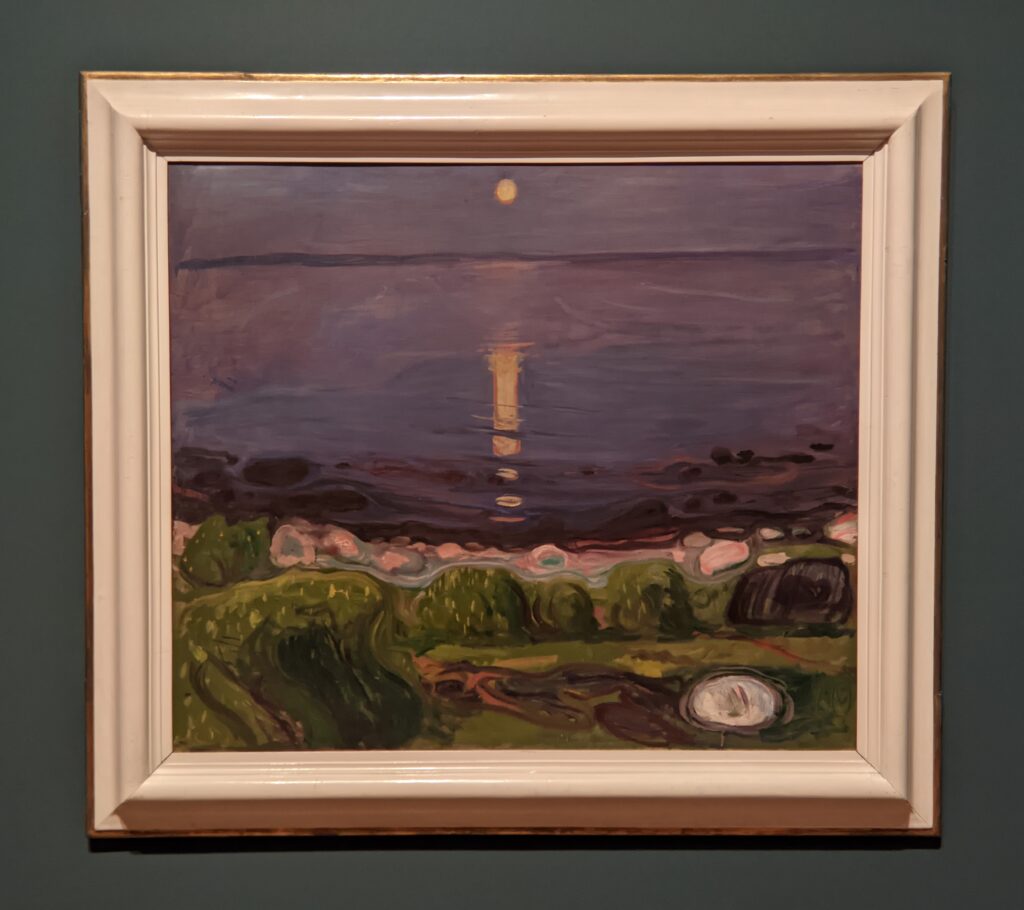
In 1904, the Secession exhibited 20 works of art created by Edvard Munch. That exhibit included “Summer Night on the Beach” (above right), and it is easy to see how Munch’s sensual expression of emotions using colors and softly flowing forms in this nocturnal scene affected Gustav Klimt. Similarly in 1909 Klimt championed an effort to bring more artwork from the international avant-garde to Vienna. Excited by the new movements in art he had seen, Klimt visited Paris, the center of modern art at that time. The radical experiments in form and color by Matisse and the Fauves inspired Klimt to adopt a more expressive, liberated style of painting.


The looser brushwork and intense coloration adopted by Gustav Klimt in his late portraits demonstrate his enduring enthusiasm for French modernism, an affinity which is evident even in Klimt’s final painting “The Bride,” which was found unfinished on Klimt’s easel in 1918.

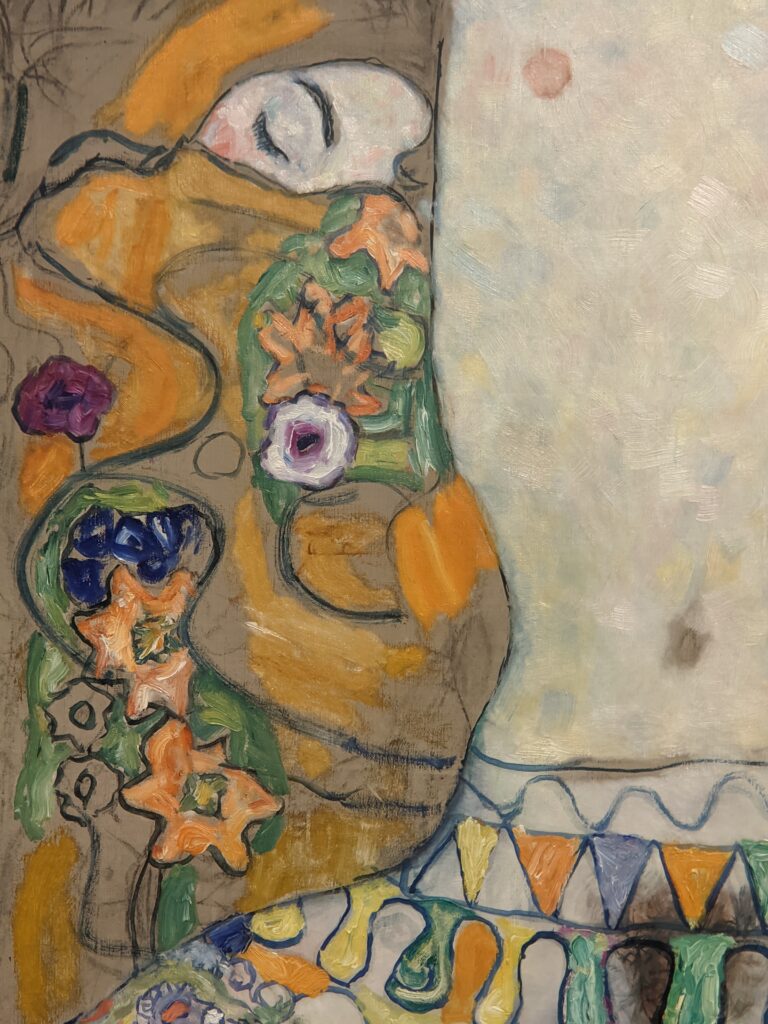
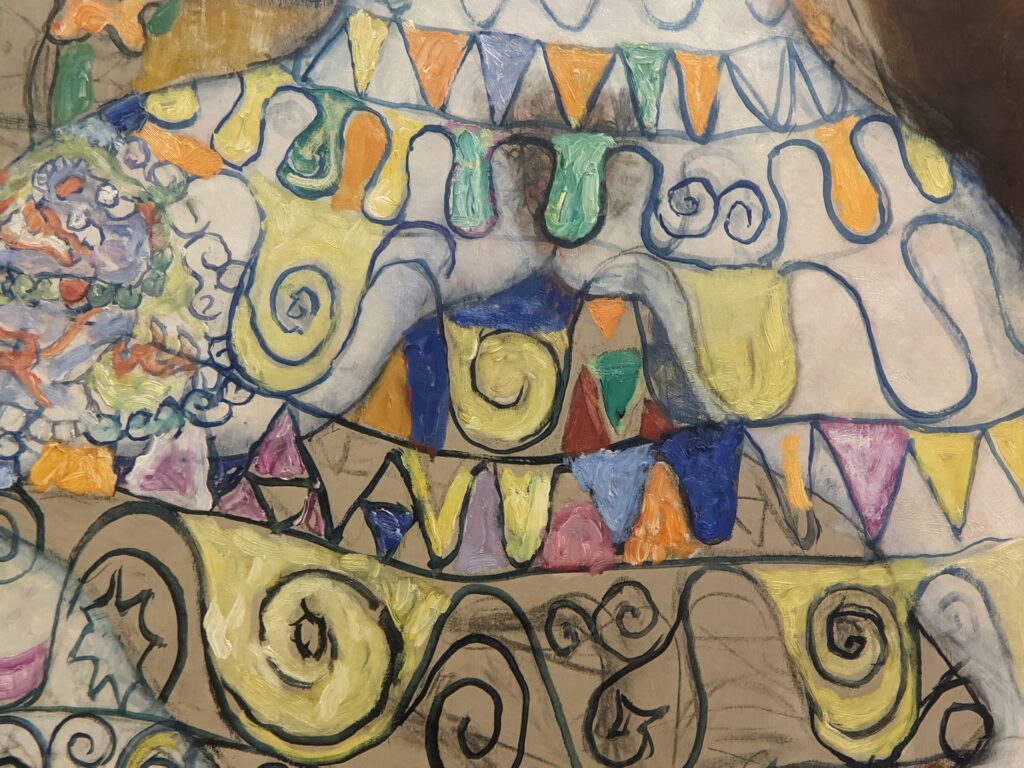
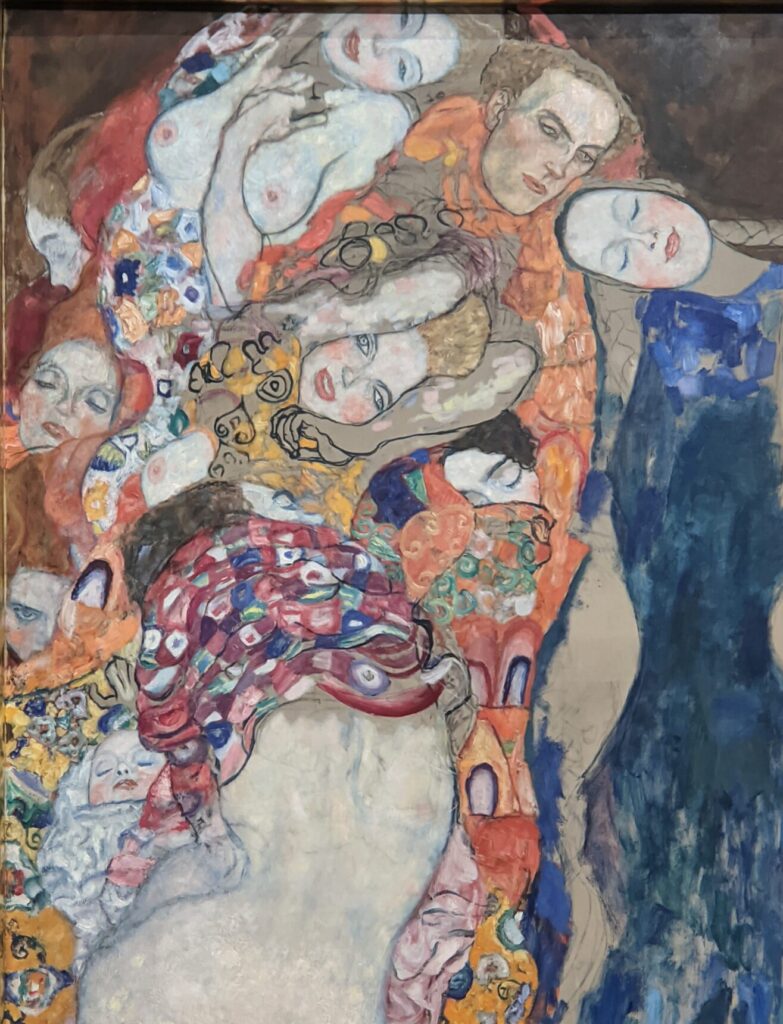
Klimt: A Gifted & Influential Painter in Both the 19th and the 20th Centuries

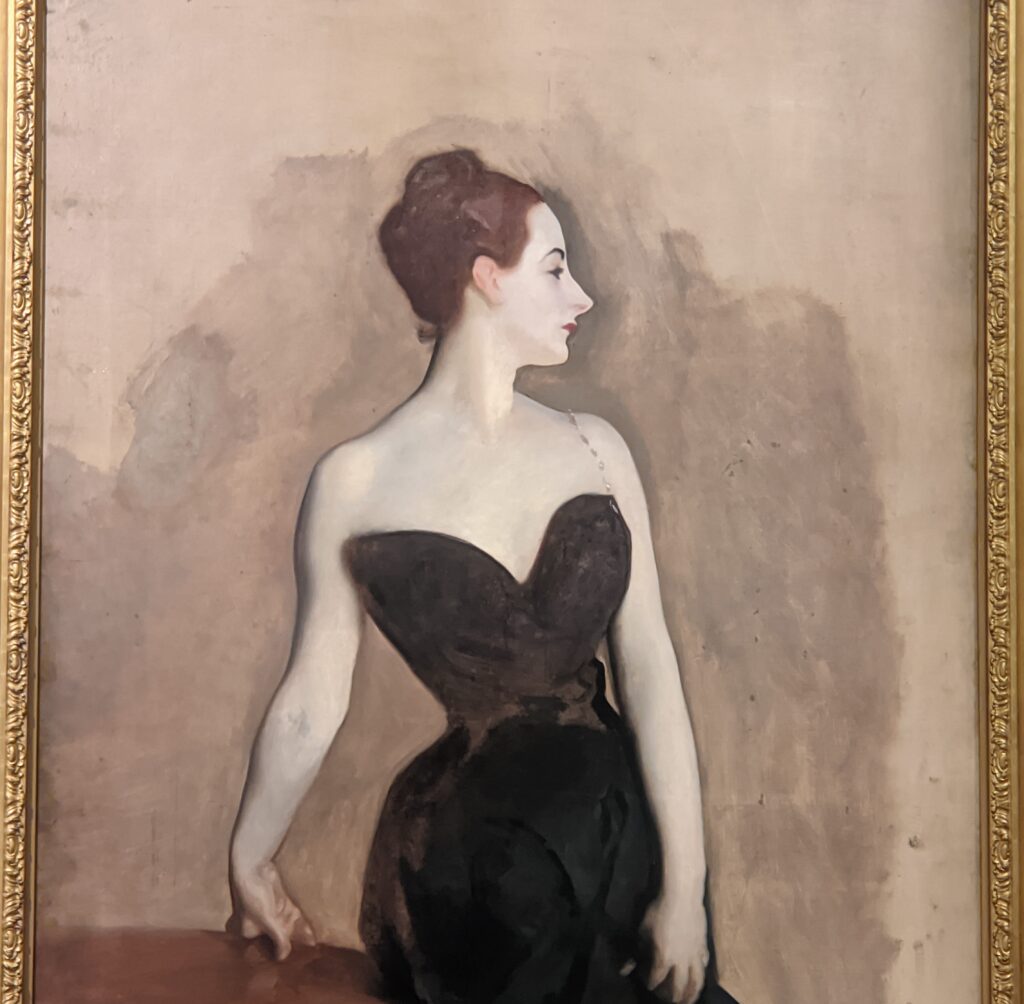

“Lady with a Fan — Gustav Klimt & East-Asia”
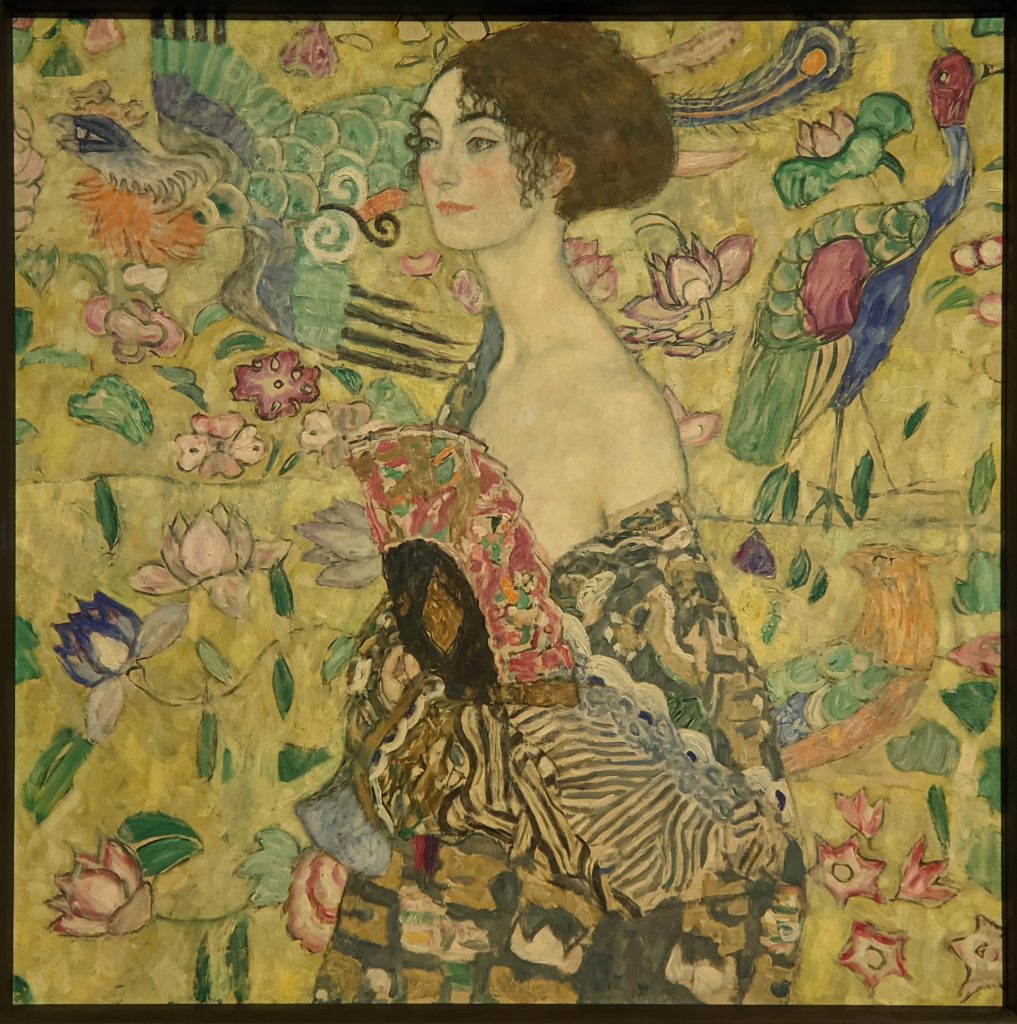
“Lady with a Fan,” painted by Klimt in 1917-1918 just before his death, served as the centerpiece of a previous exhibit at the Belvedere exploring the inspiration Klimt found in art from China, Korea and Japan. That beautiful show closed on February 13, 2022. Influenced by Japanese prints (below), the painting “Lady with a Fan” was on public view in Vienna just once before — over a century ago at the Kunstschau in 1920.
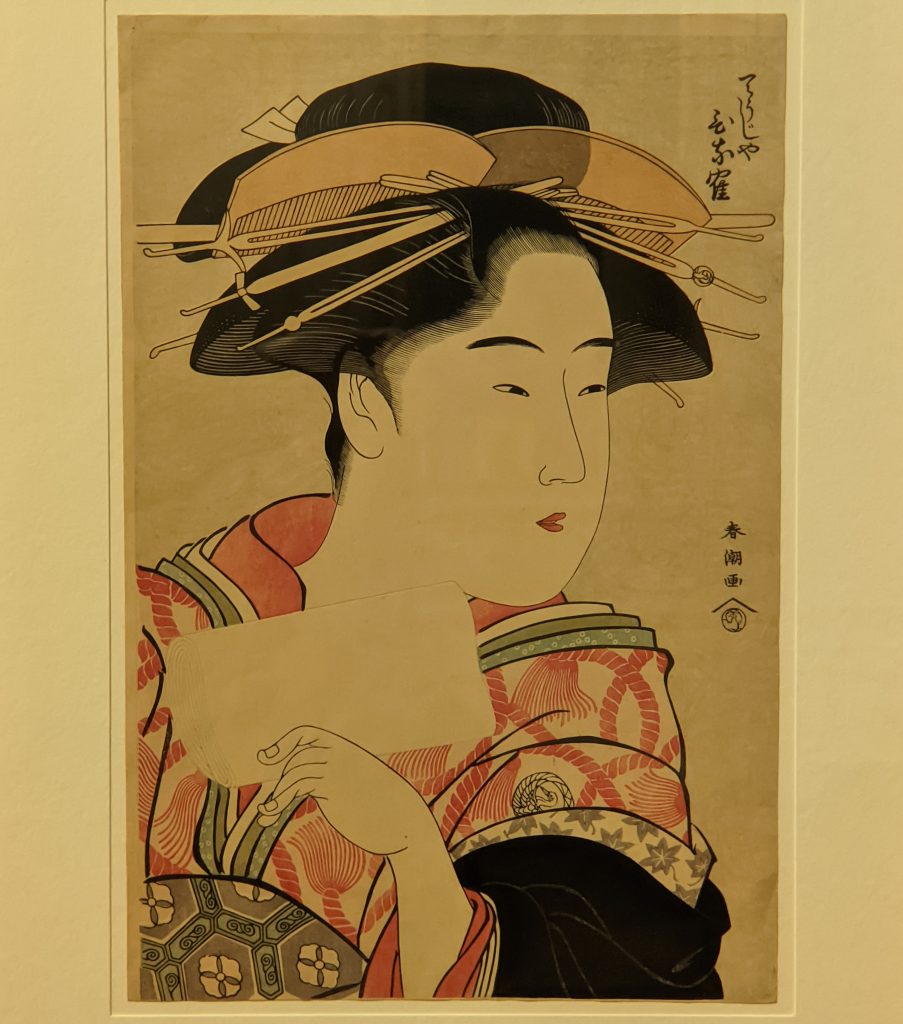

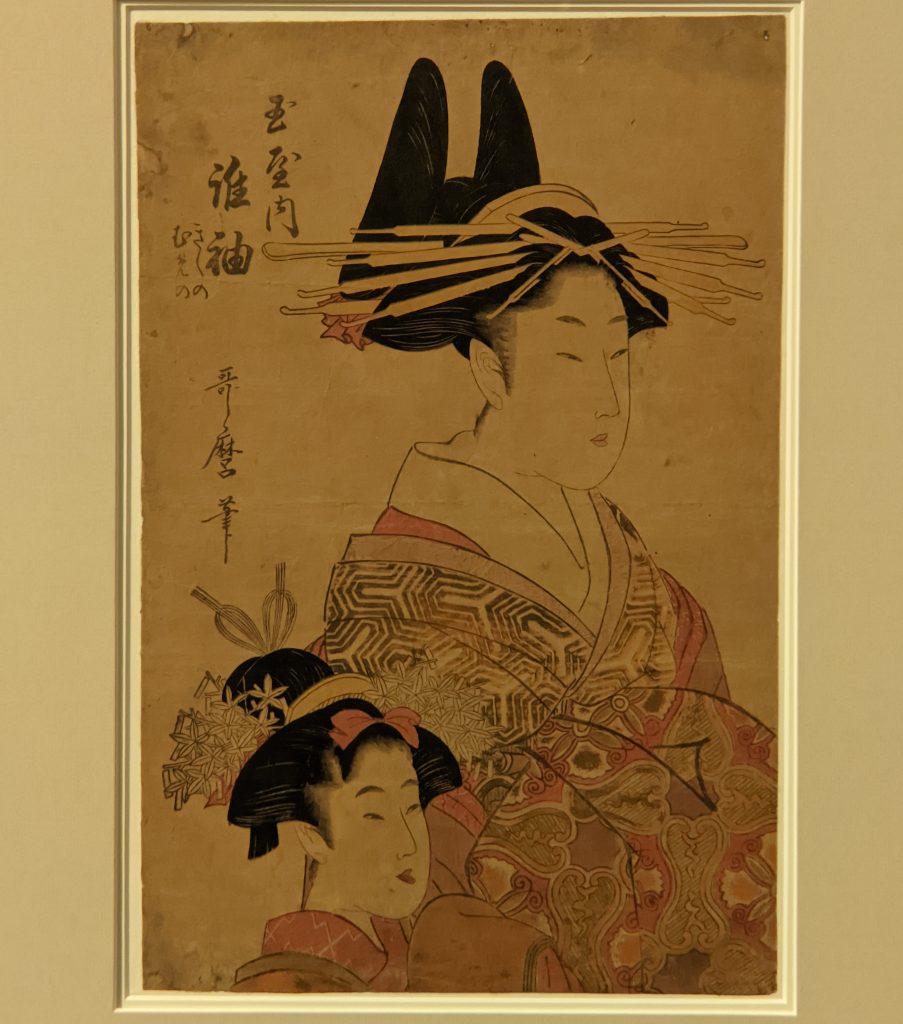
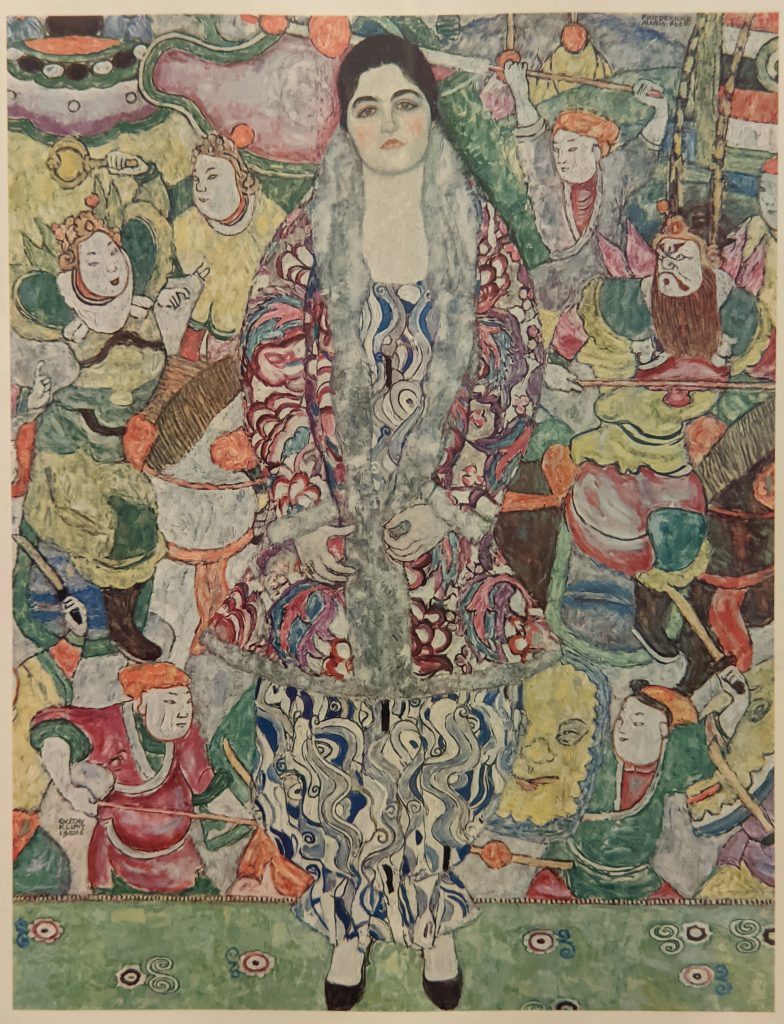


Waldmüller and Biedermeier Vienna
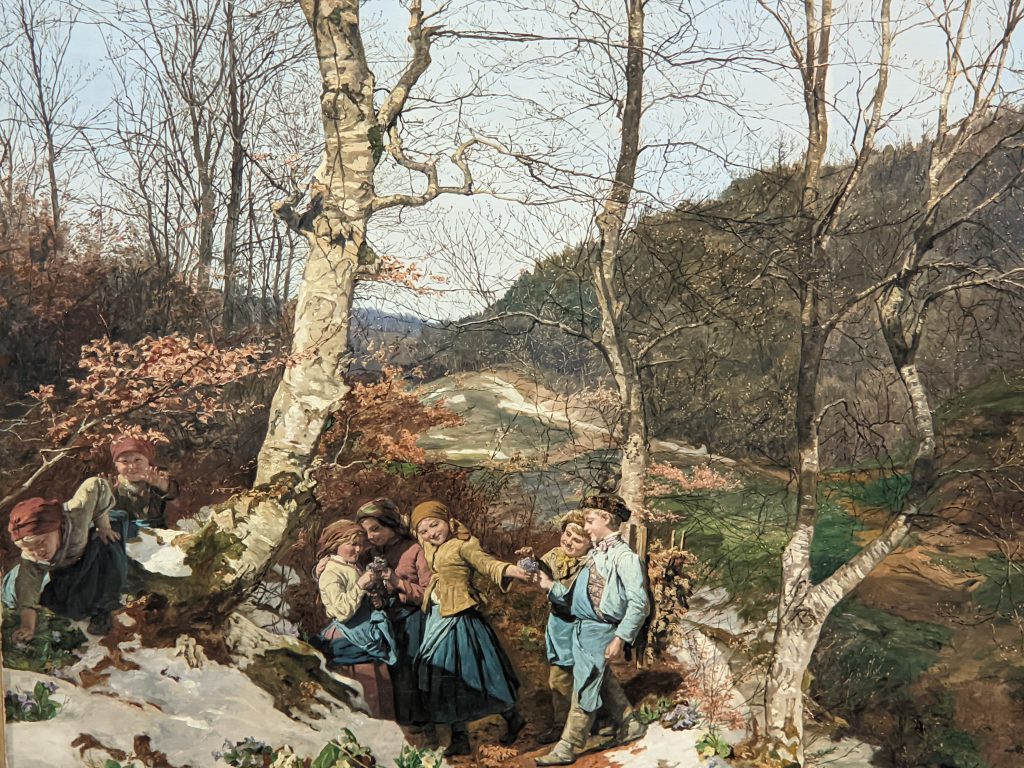
The exhibition “Better Times? Waldmüller and Biedermeier Vienna” was presented from May 12, 2021 through February 27, 2022 and included some of Ferdinand Georg Waldmüller’s most famous paintings, including “Early Spring in the Vienna Woods” (above) completed in 1861. Even though Waldmüller studied portrait painting at the Academy of Fine Arts Vienna and created a portrait of Beethoven in 1823, later he focused on landscapes because he believed the close study of nature should serve as the foundation of painting.
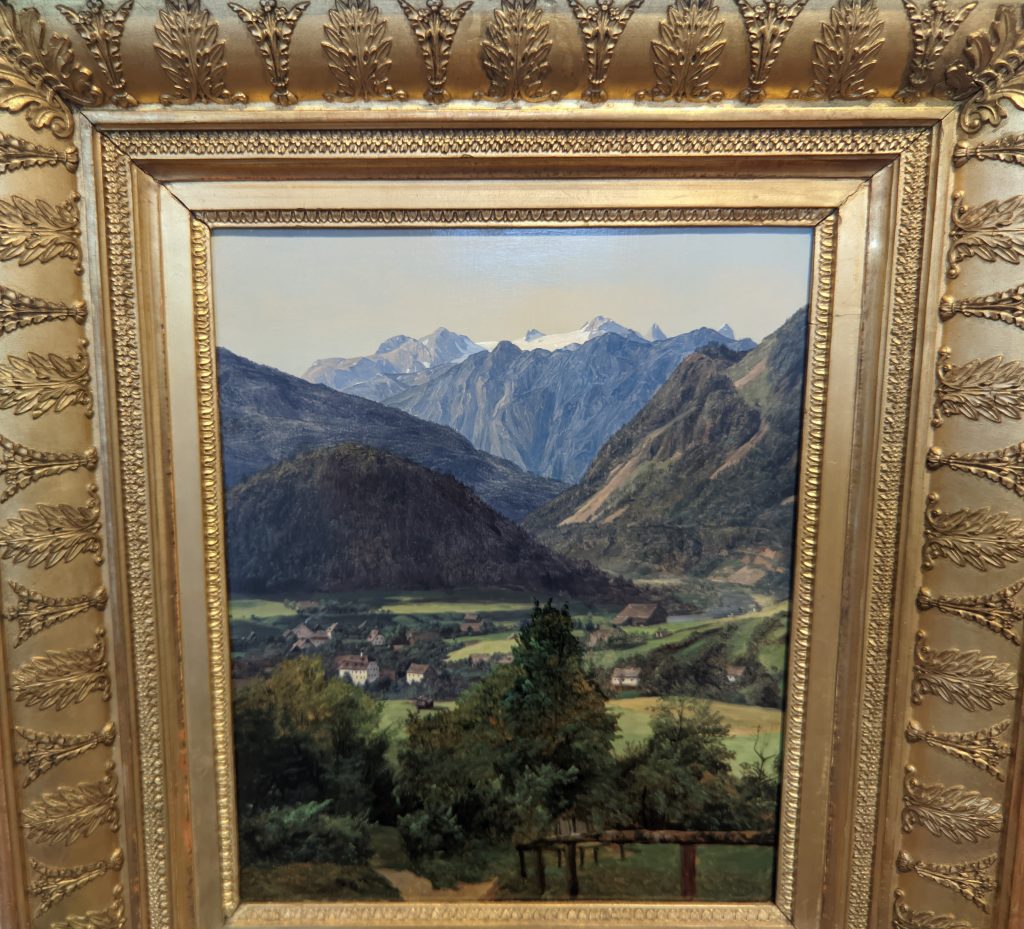
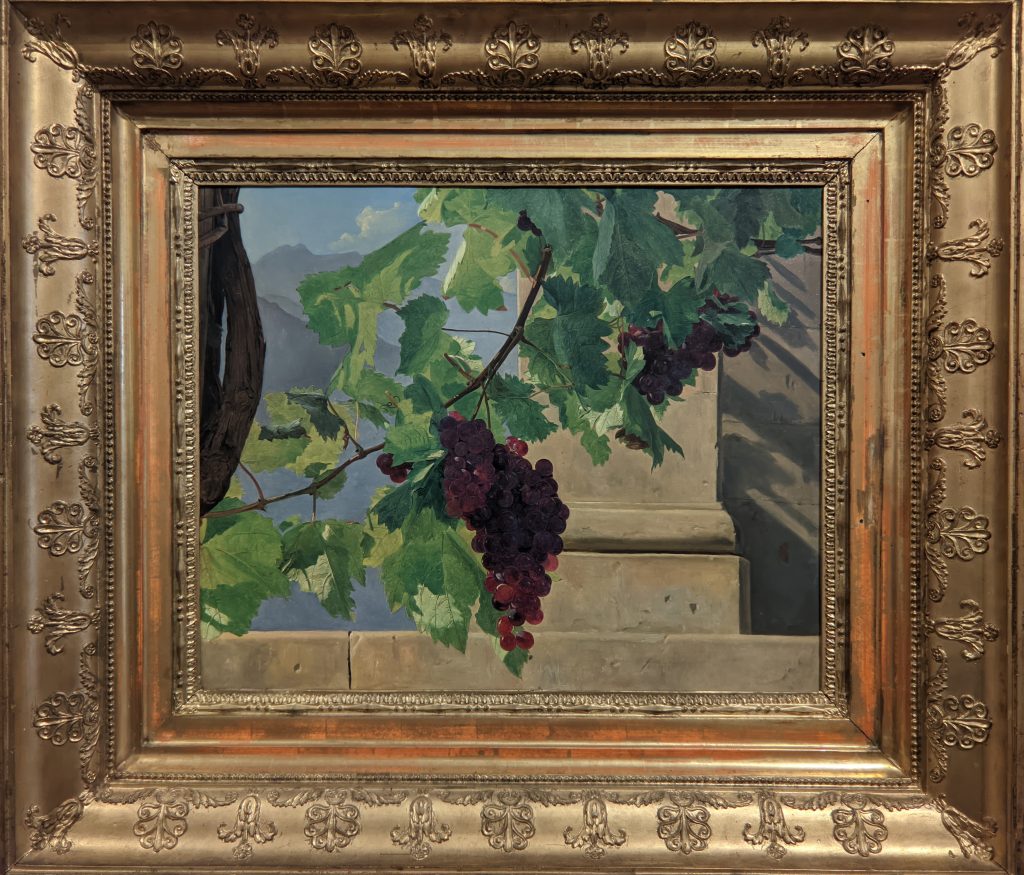
Waldmüller’s work on exhibit at the Belvedere included “View of the Dachstein from Ischl” (above left), “Trailing Grapes” (above right), “A Girl Adorning the Virgin Mary with a Rose” (below left) and “Roses in a Glass” (below right).

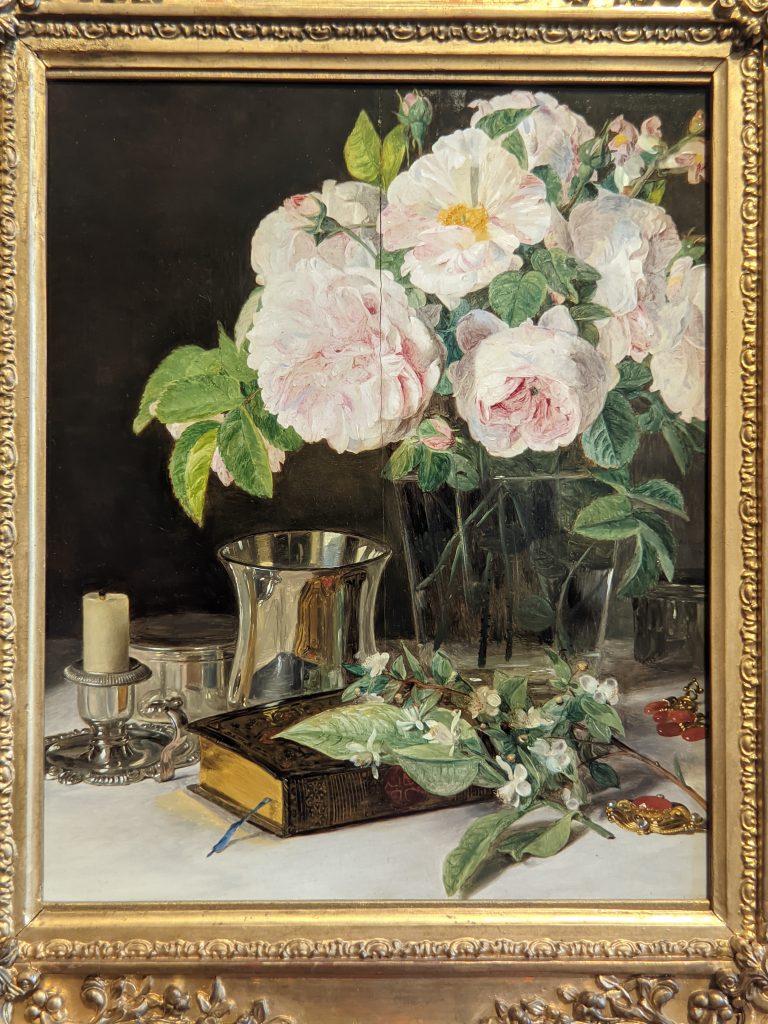
In 1819, Waldmüller became a Professor at the Academy of Fine Arts Vienna, where he wanted to introduce a focus on the study of nature into the curriculum. Such ideas were deemed incompatible with the ideals promulgated by the Academy and the Viennese establishment and, ultimately, Waldmüller was forced to resign. As a proponent of natural observation and plein-air painting — and a critic of academic painting — Waldmüller was indeed ahead of his time and became an inspiration for his contemporaries (whose paintings are pictured below) and an entire generation of artists.
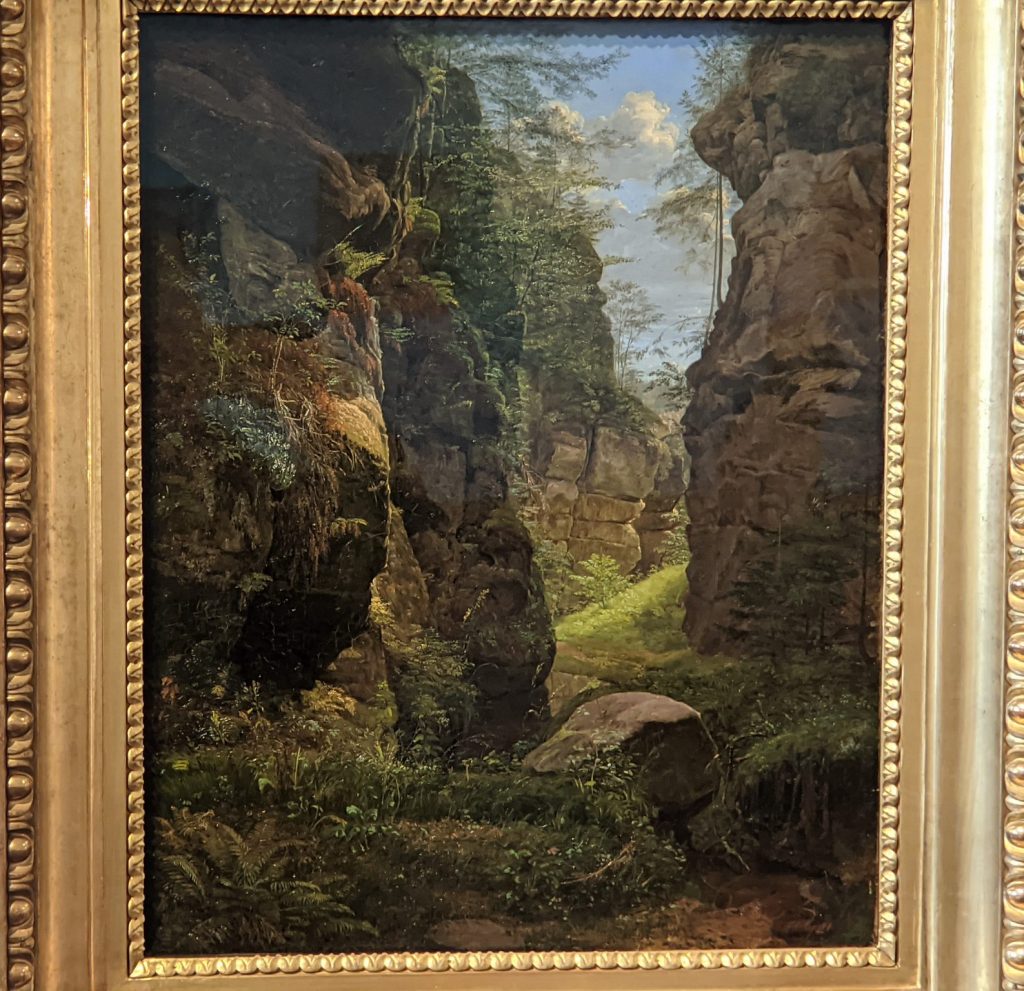
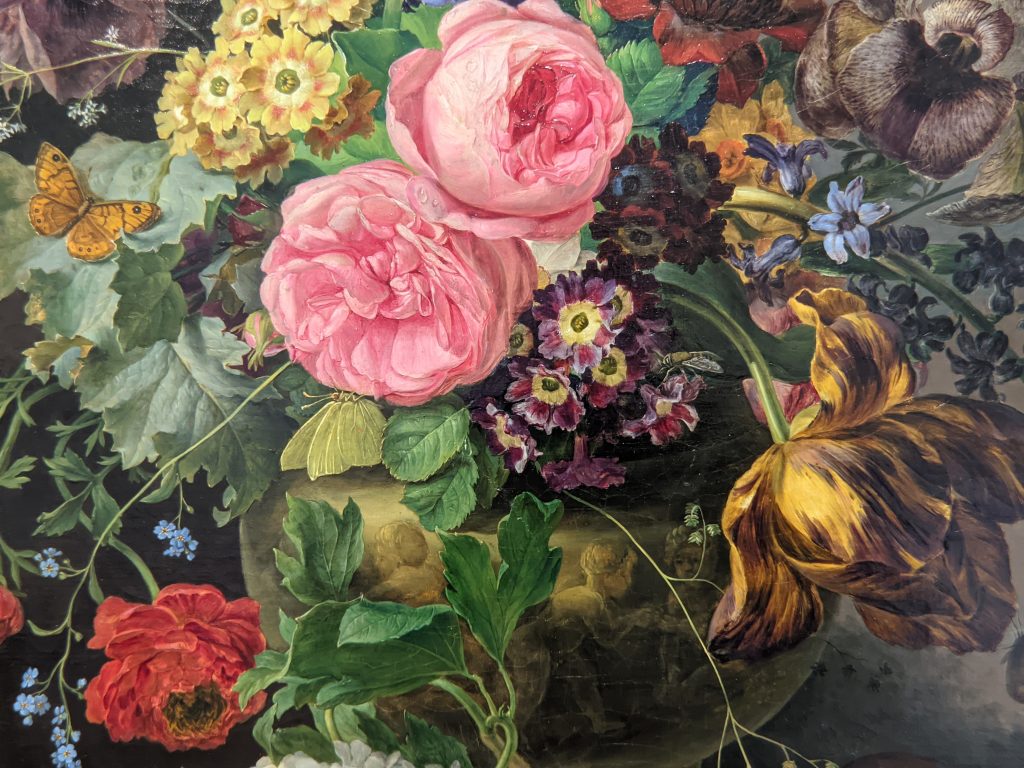
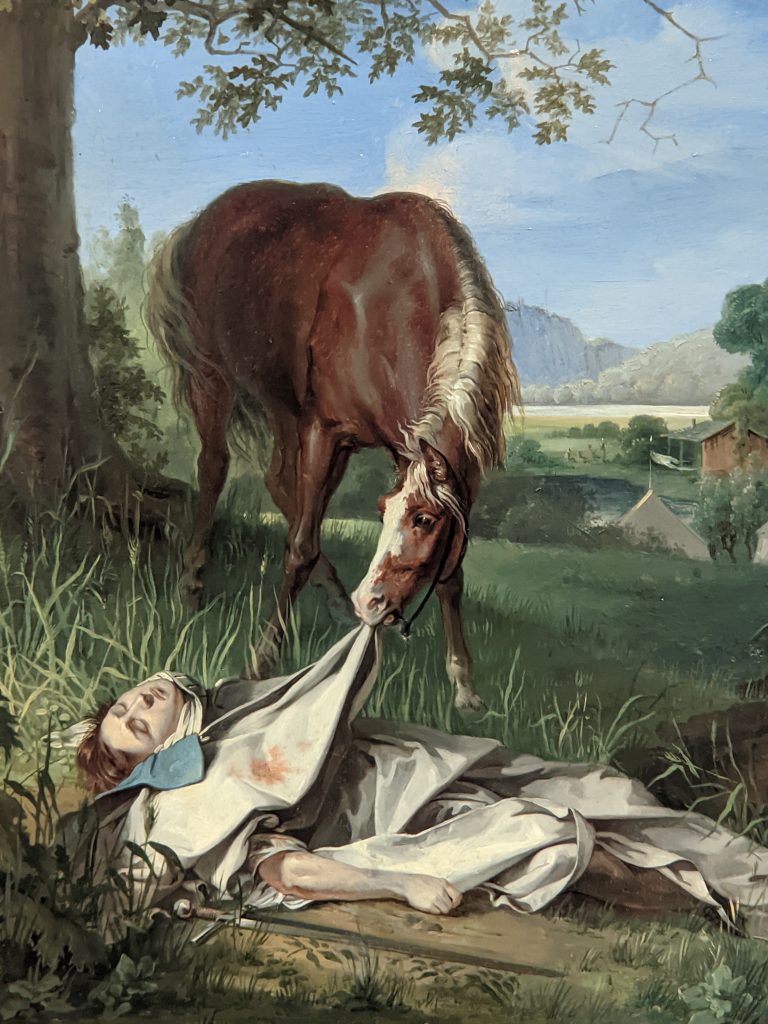
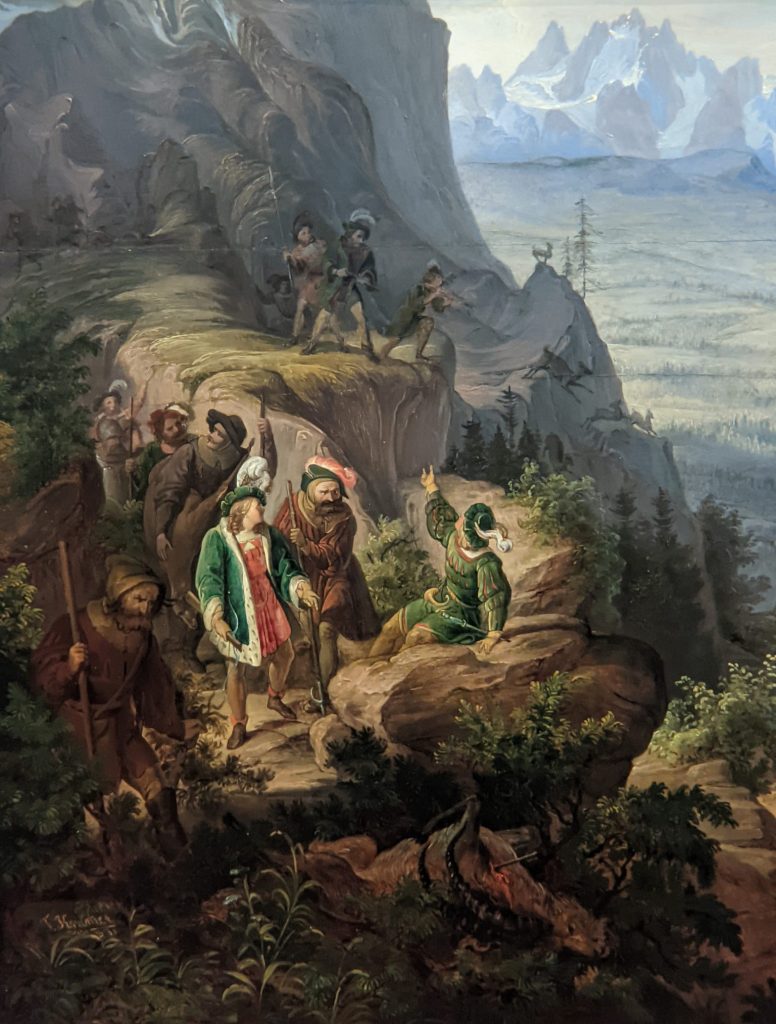

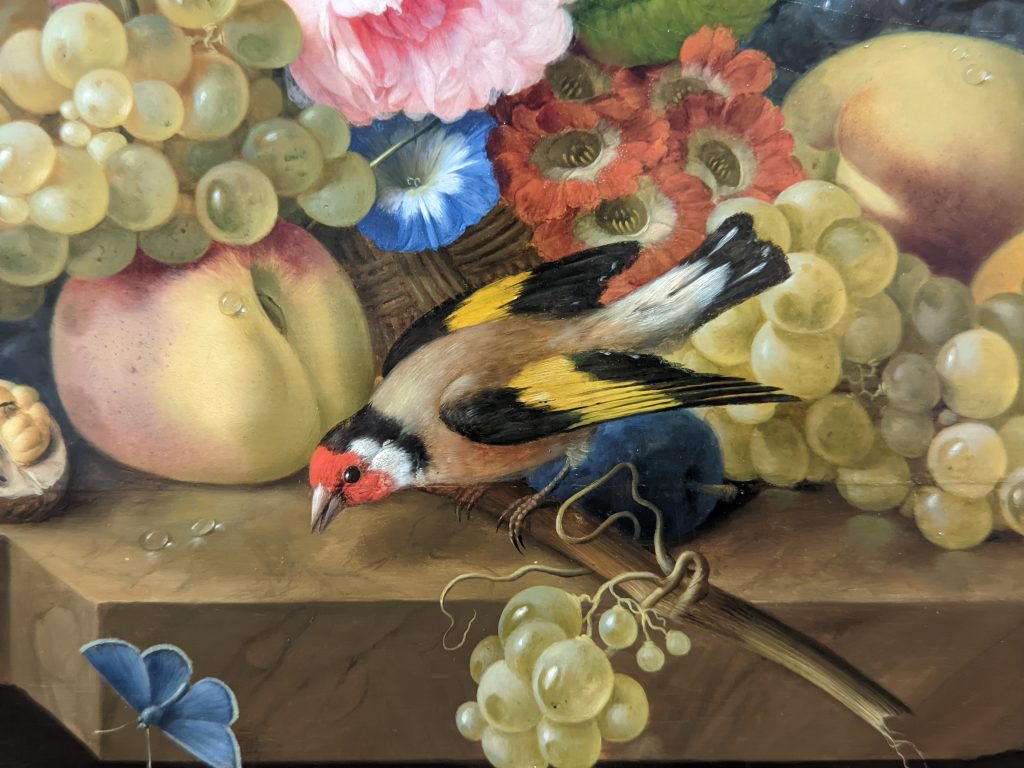
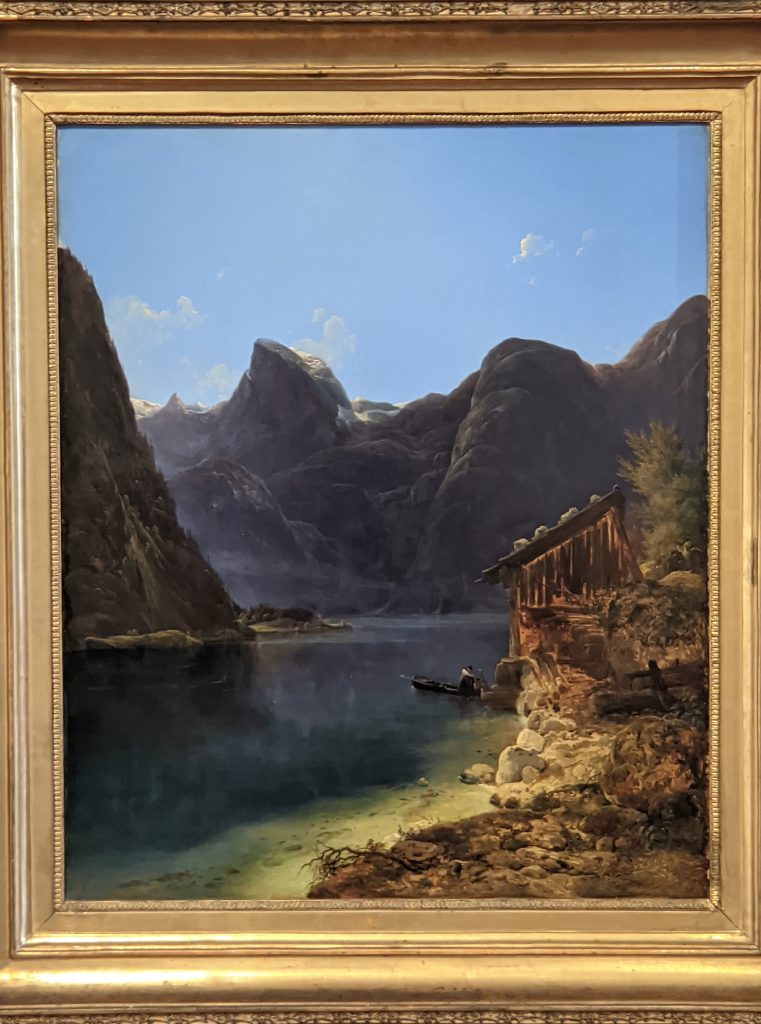
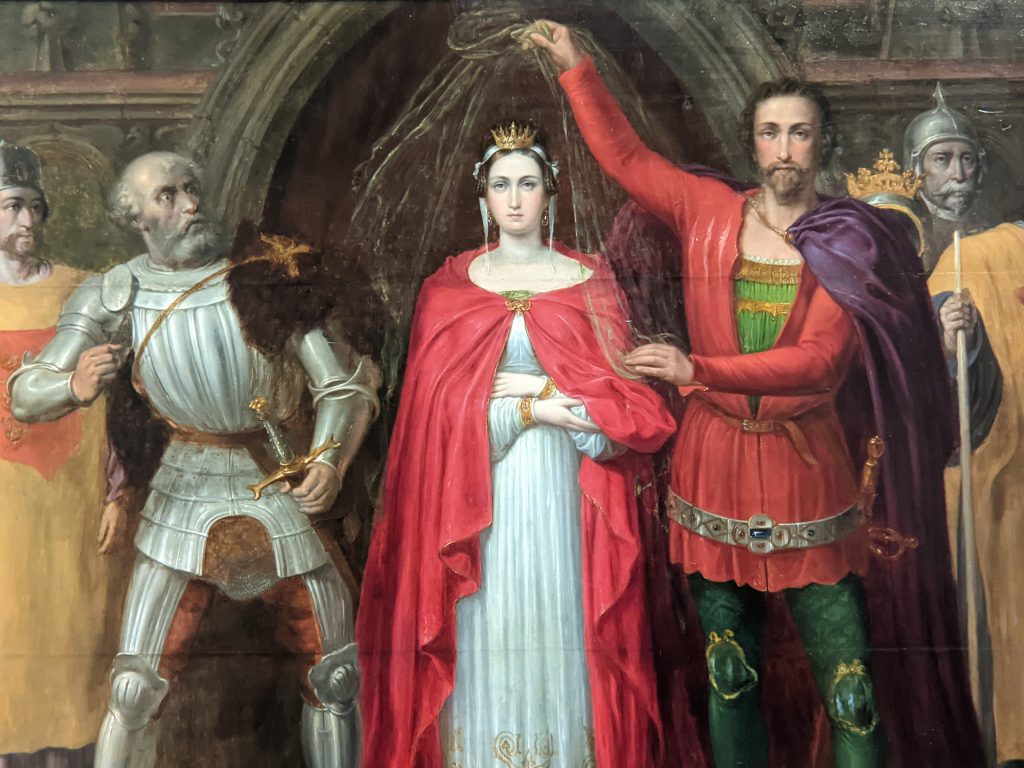

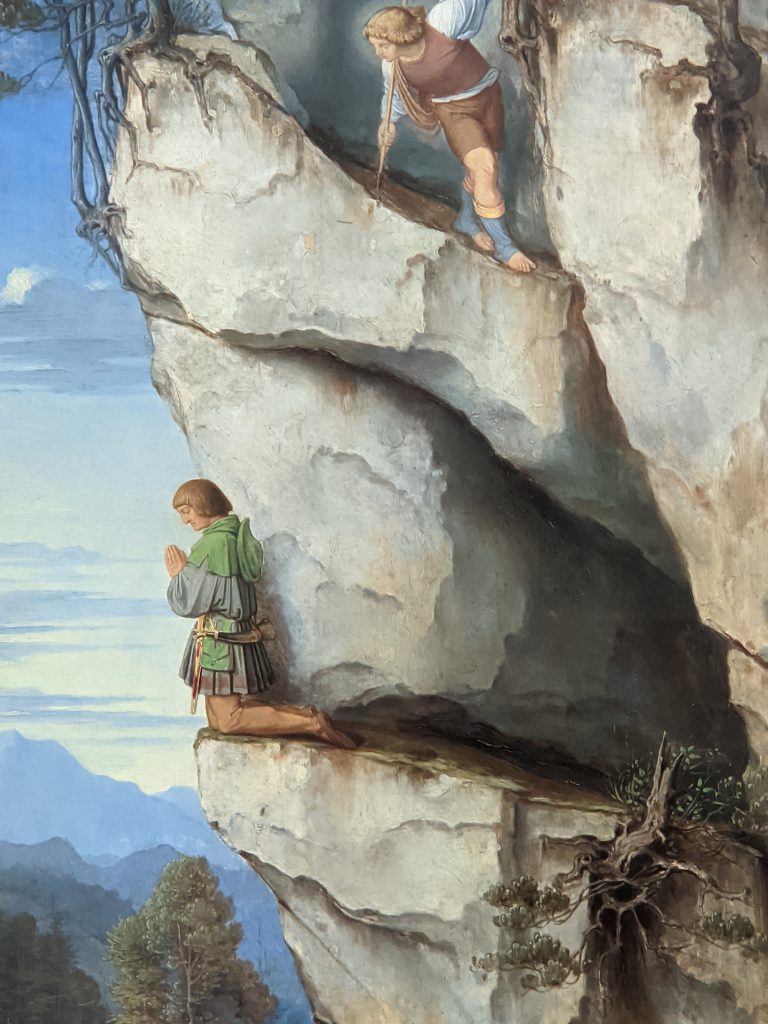
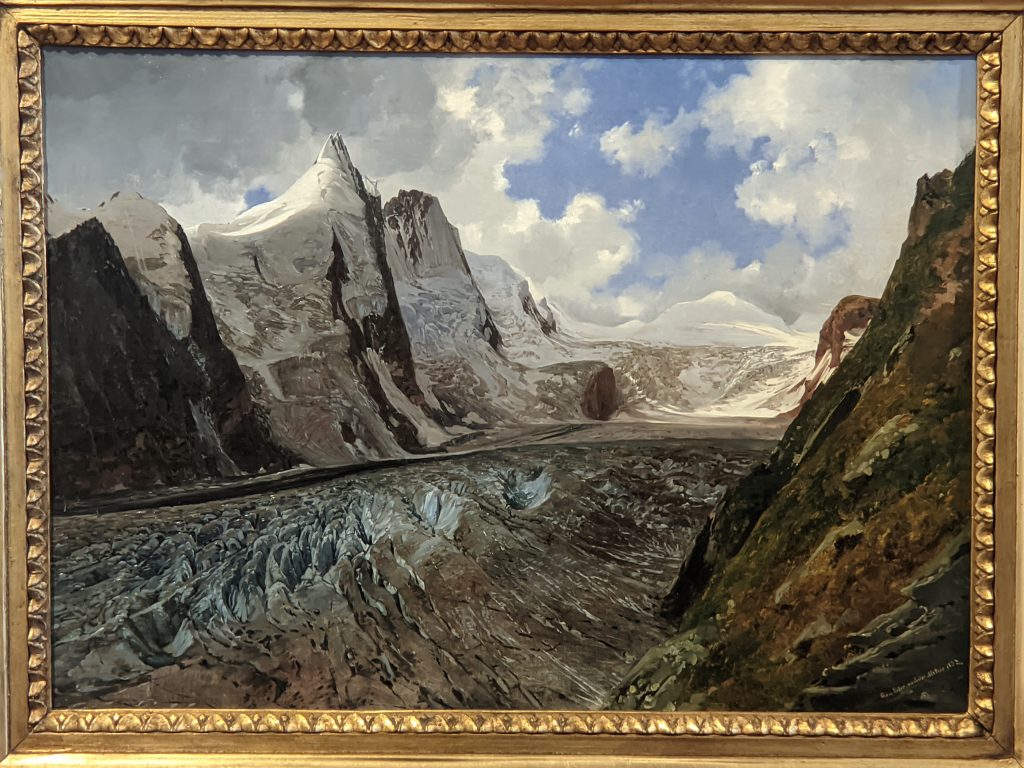
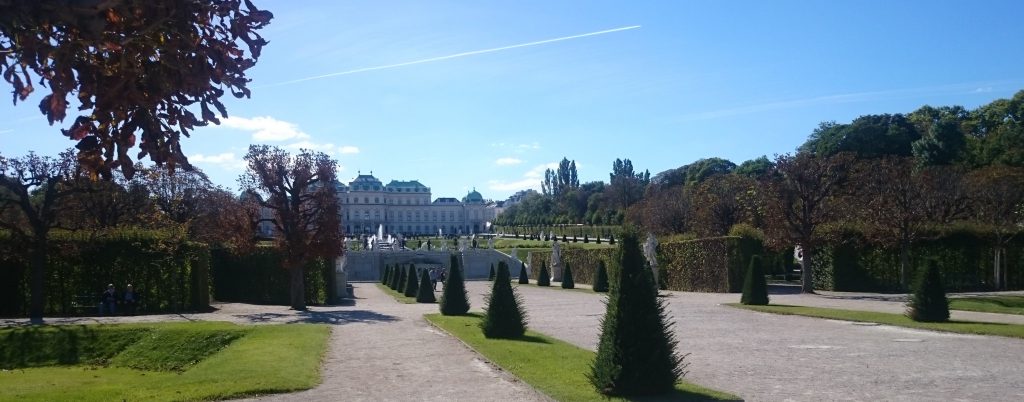
The Upper & Lower Belvedere: Two Baroque Palaces
The Belvedere complex contains two Baroque palaces (the Upper and Lower Belvedere), Palace Stables and the Orangery. Set in a Baroque park landscape, the gardens descend on a gentle gradient and include fountains, sculptures and clipped hedging in the formal French manner.
Records indicate that the construction of the Lower Belvedere (below left) began in 1712 and was completed in 1723.
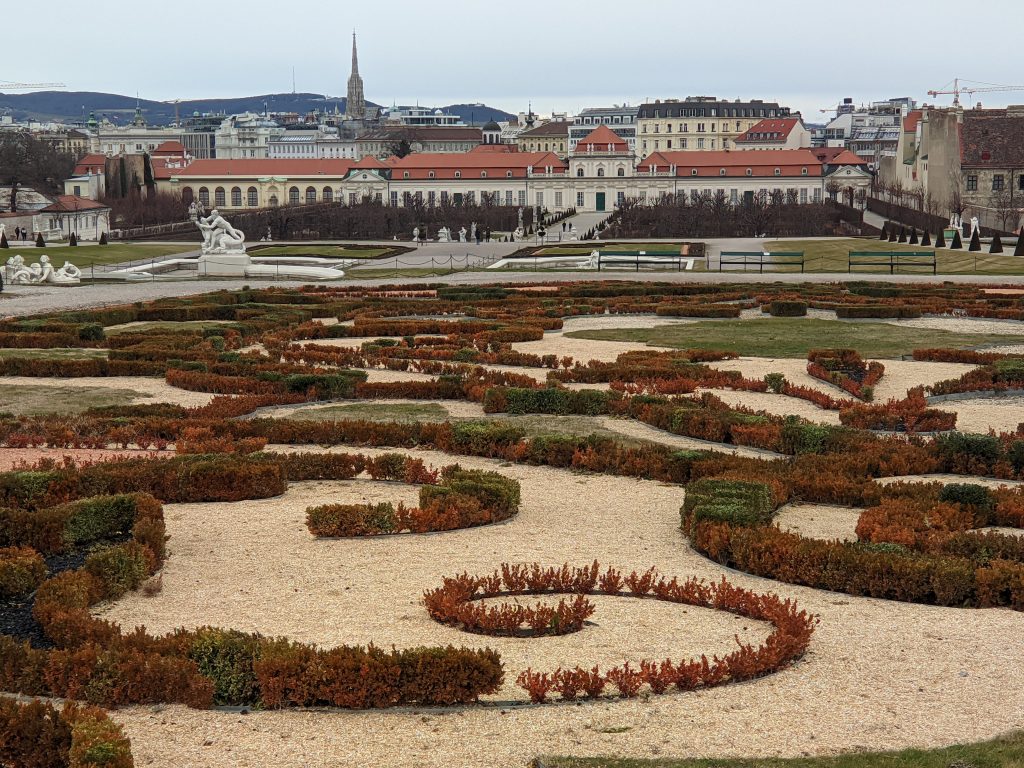
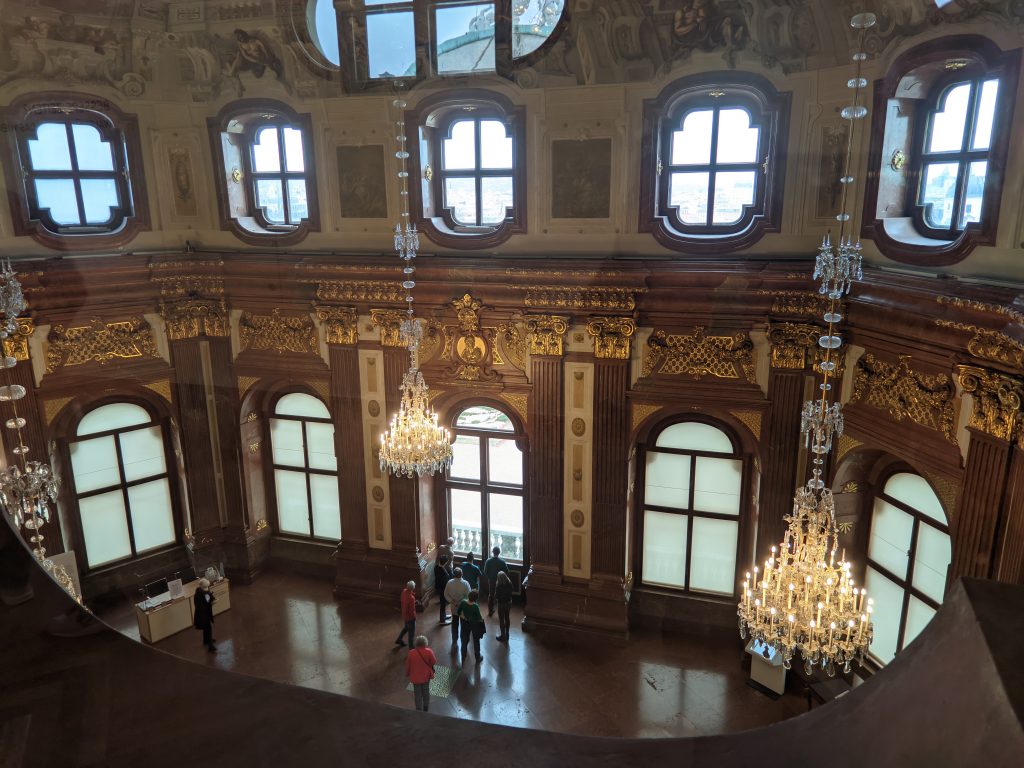
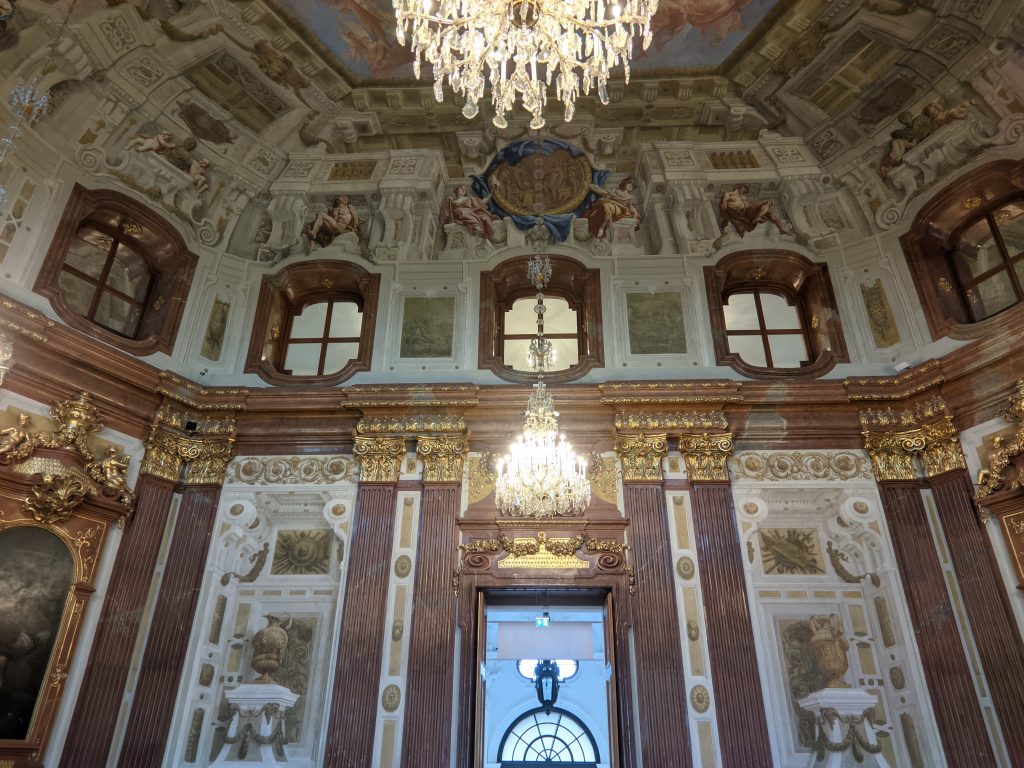
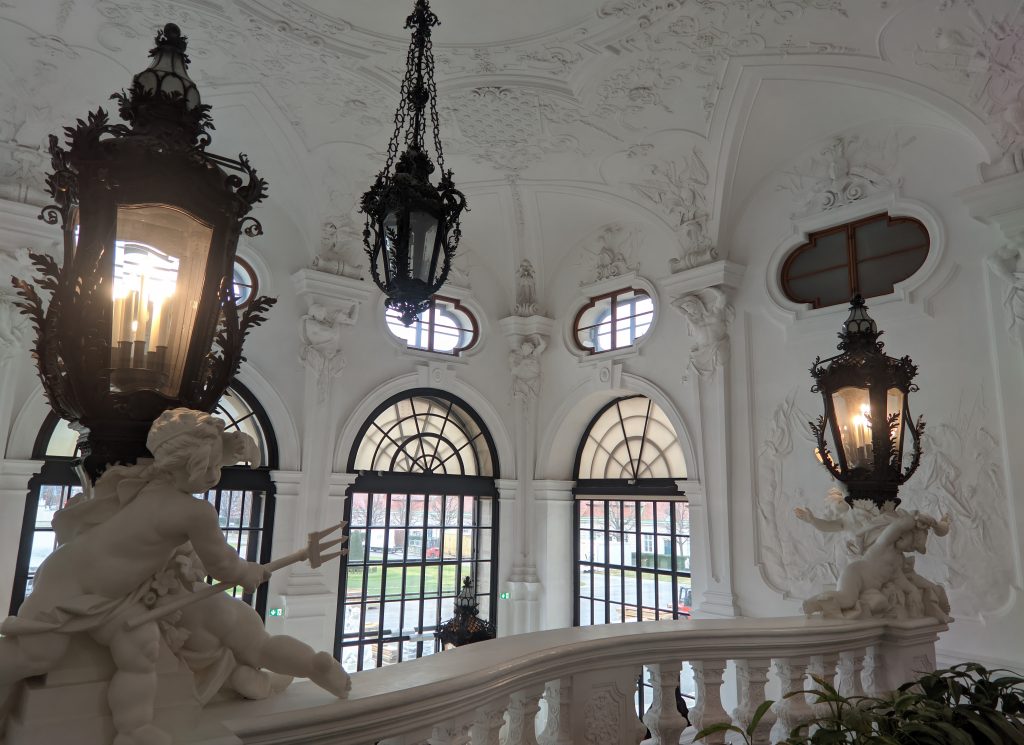
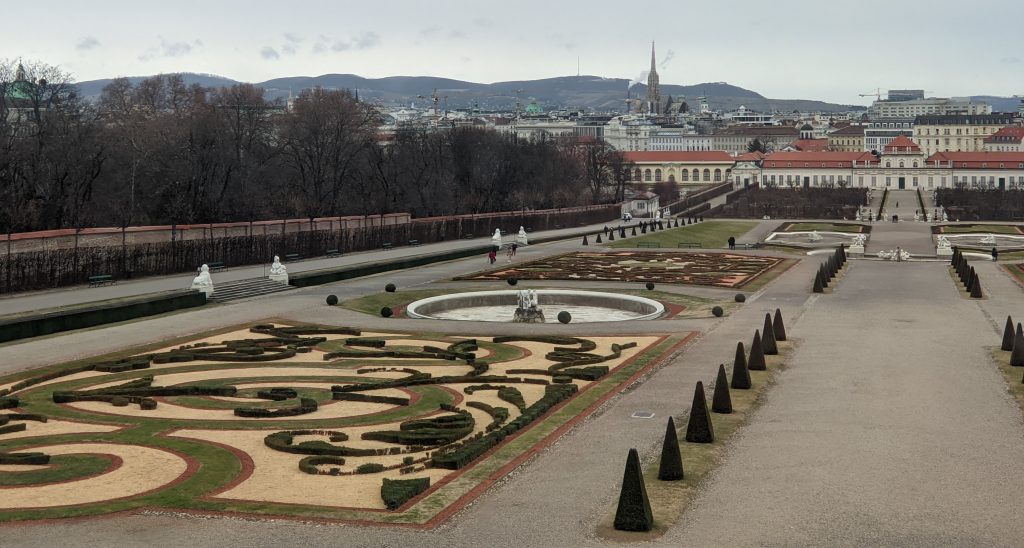

The Klimt portrait Adele Bloch-Bauer II, 1912-13, was one of five paintings returned by the Belvedere in 2006 to the descendant of Ferdinand and Adele Bloch-Bauer. This famous restitution case is described in the 2015 film “Woman in Gold.” The painting (shown above), now in private hands, returned to Vienna for a short visit in 2023 for purposes of analysis and restoration, and it will be on view until February 11, 2024.
The good news is that we at ArtLoversTravel have profiled the Belvedere as the “4th Greatest” art museum in Vienna, and we have chosen the Leopold Museum as the 3rd greatest art museum in Vienna. If you would like to learn more about the art of Egon Schiele, Gustav Klimt, the Secession, and the stylish era of Jugendstil, please continue your exploration with our article entitled “The Leopold Museum — 3rd Greatest Museum in Vienna”.
Our selection of the two finest art museums in Vienna is described in “Two Superior Museums of Art in the Heart of Vienna”.
Please feel free to leave a COMMENT, or tell us about your favorite museum experiences in the Austrian capital. Thank you for your visit!




